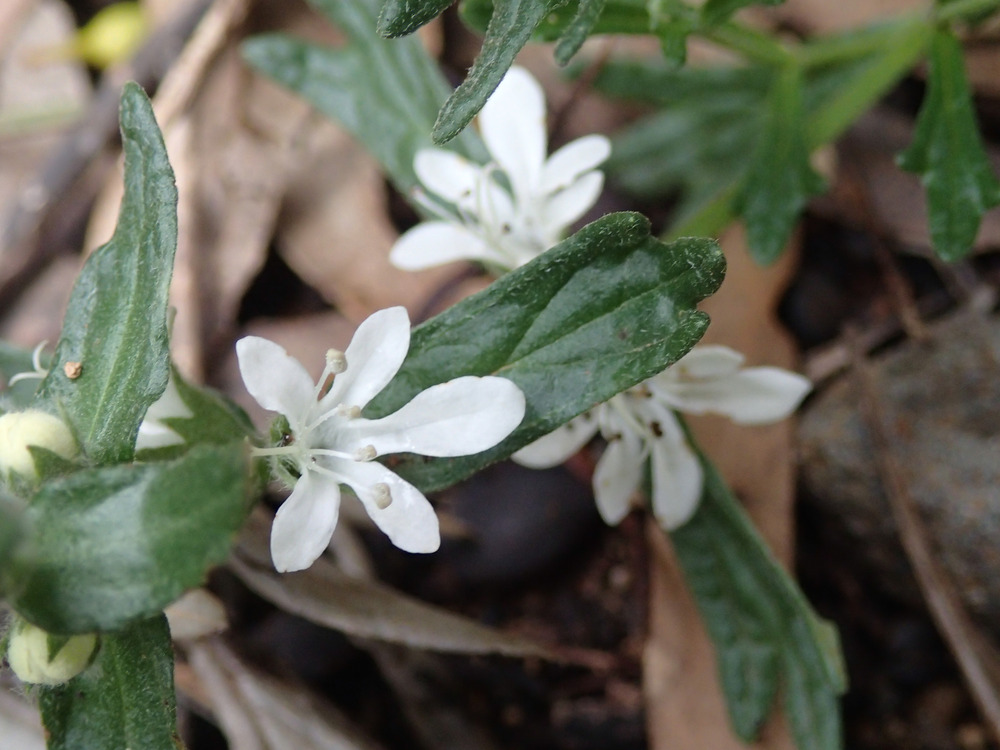
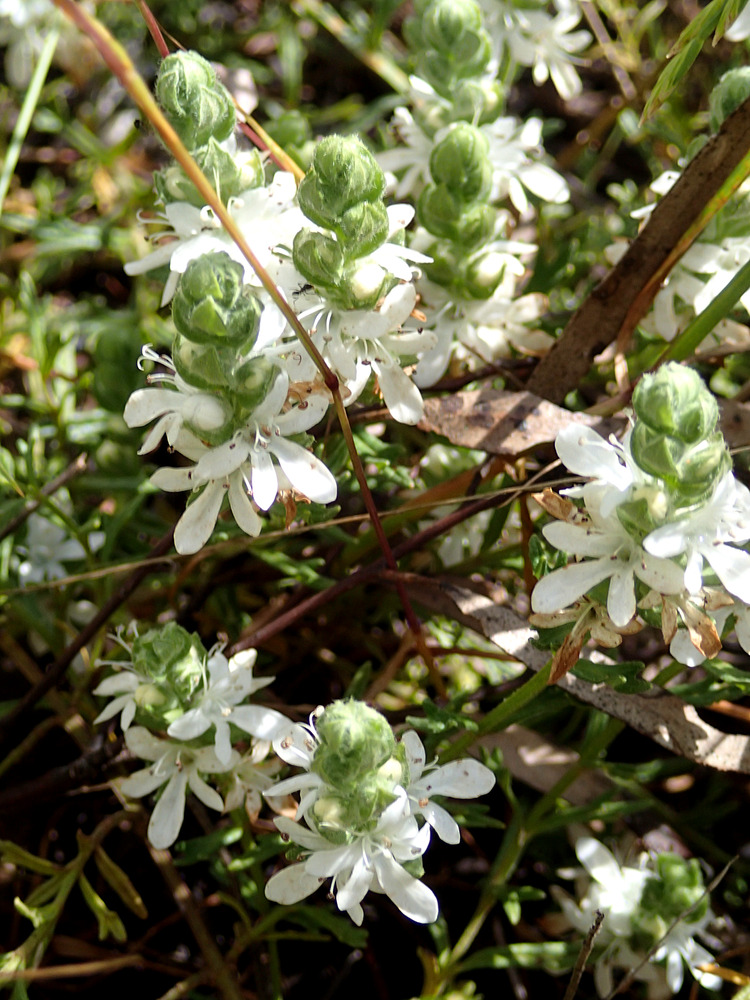
The delicate but hardy Forest Germander. Seen here under grasses. 
The equally hardy Halgania cyanea.

The very hardy Helichrysm bracteatum.
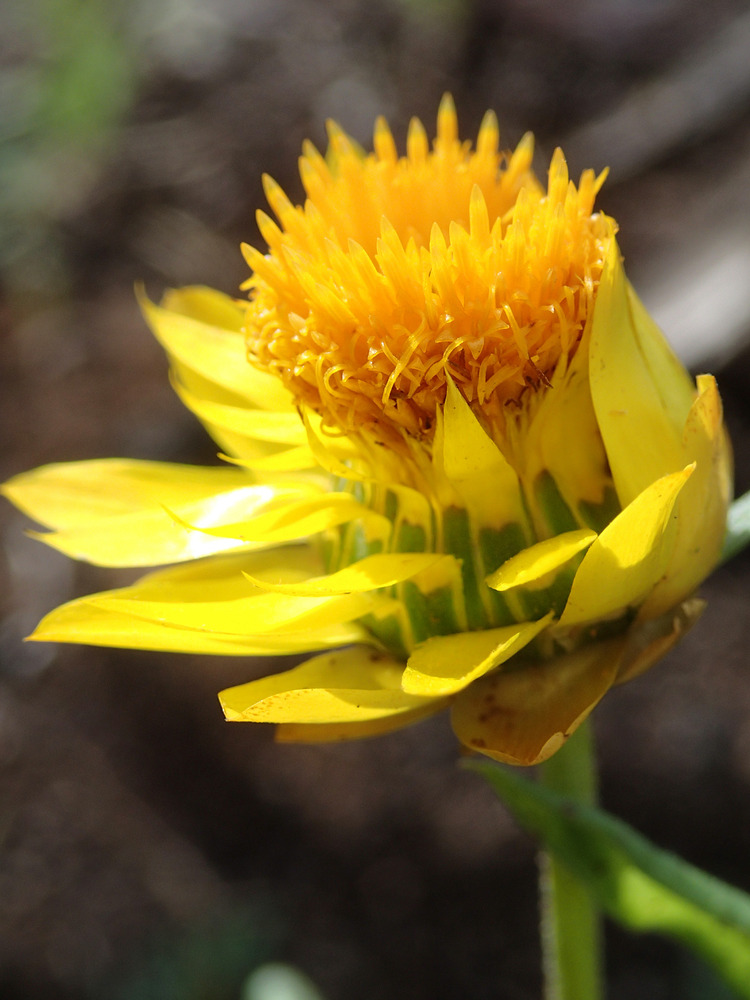
Together, Thysanotus baueri tall fringe lily and Dianella revoluta.
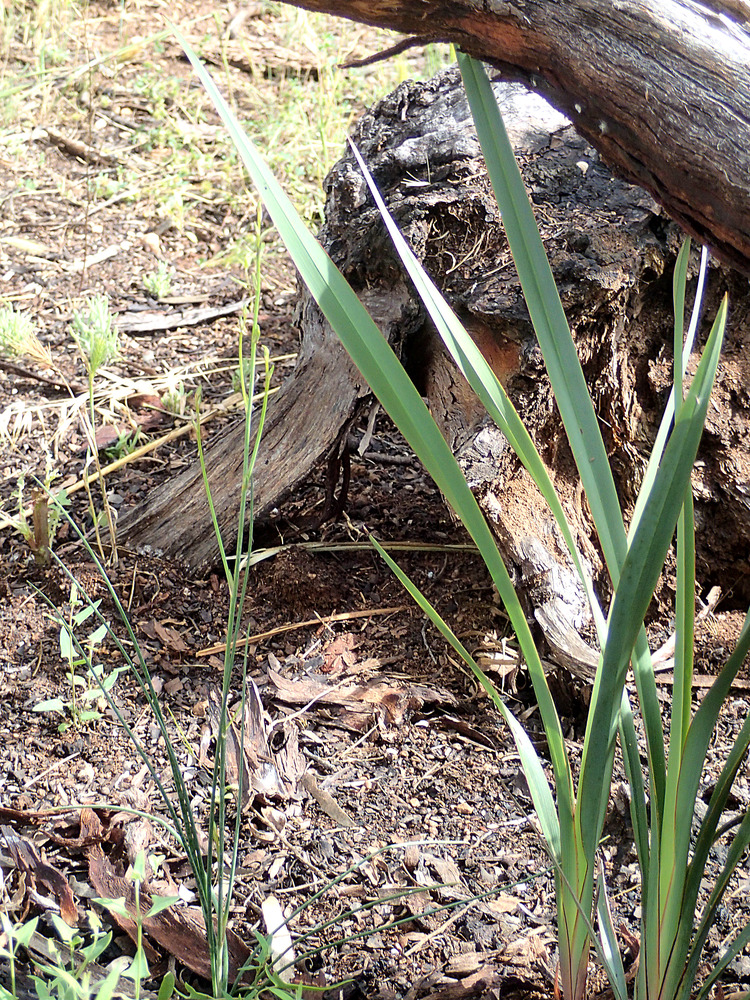


The delicate but hardy Forest Germander. Seen here under grasses. 
The equally hardy Halgania cyanea.

The very hardy Helichrysm bracteatum.

Together, Thysanotus baueri tall fringe lily and Dianella revoluta.

Forest or grey Germander, Teucrium racemosum.
It’s a good time of year for wildflowers.
mollwollfumble said:
It’s a good time of year for wildflowers.
You are not wrong here.
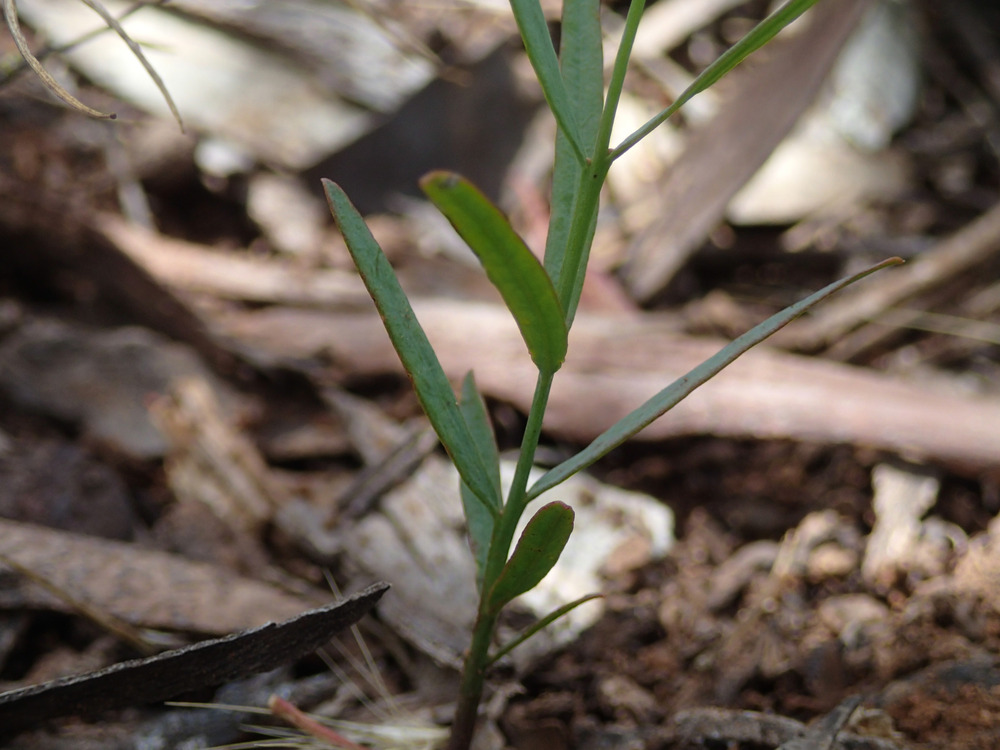
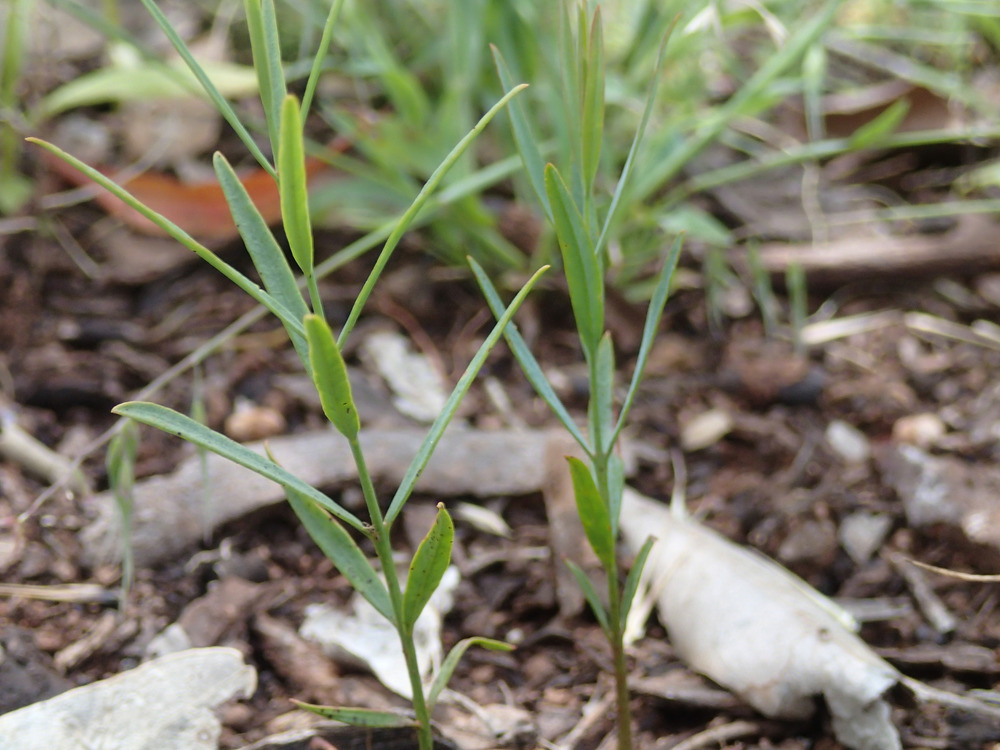
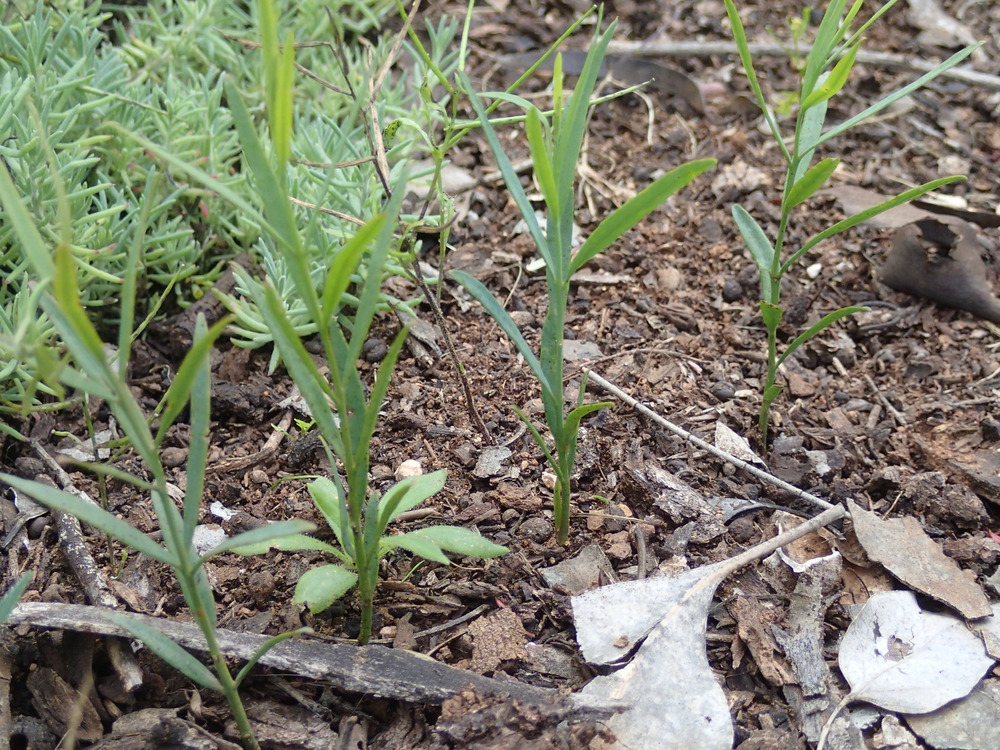

OK, around ten/eleven months ago I planted an amount of quandong seeds where the fruit had rotted in the bag.
There are at least thirteen up as I saw today.
roughbarked said:

OK, around ten/eleven months ago I planted an amount of quandong seeds where the fruit had rotted in the bag.
There are at least thirteen up as I saw today.
Yes I was watching but not like every day. Once a month or two, I had a look. It may be two or even three months since I last had a close look. So the above ground growth is quite rapid in the first few months, if there is aqua about.
These from my phone.
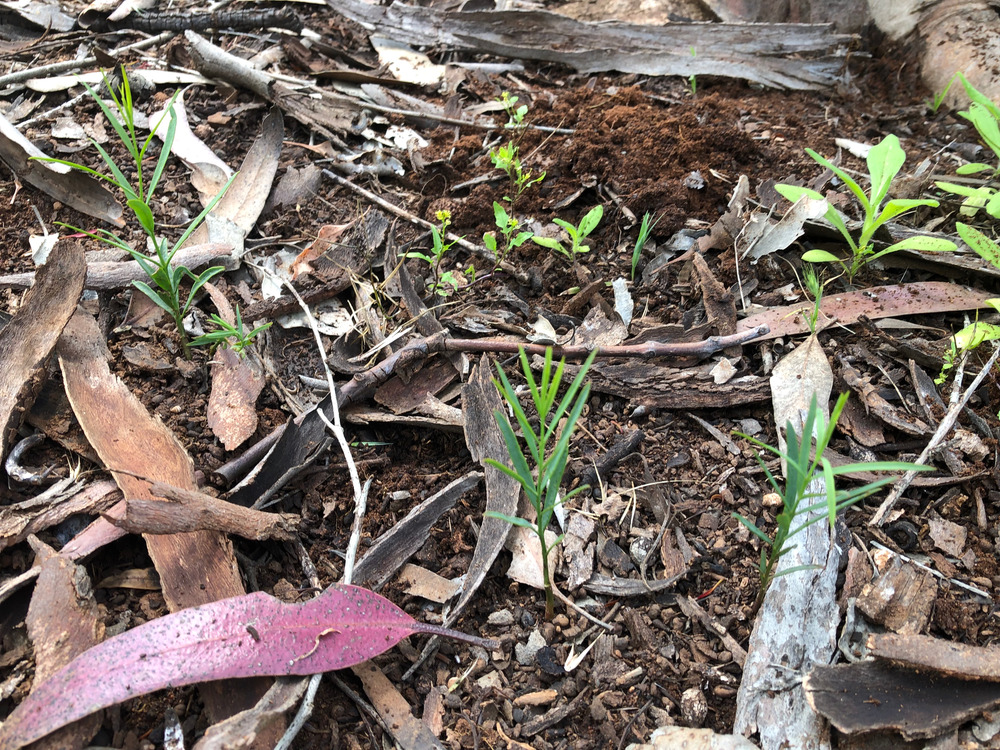
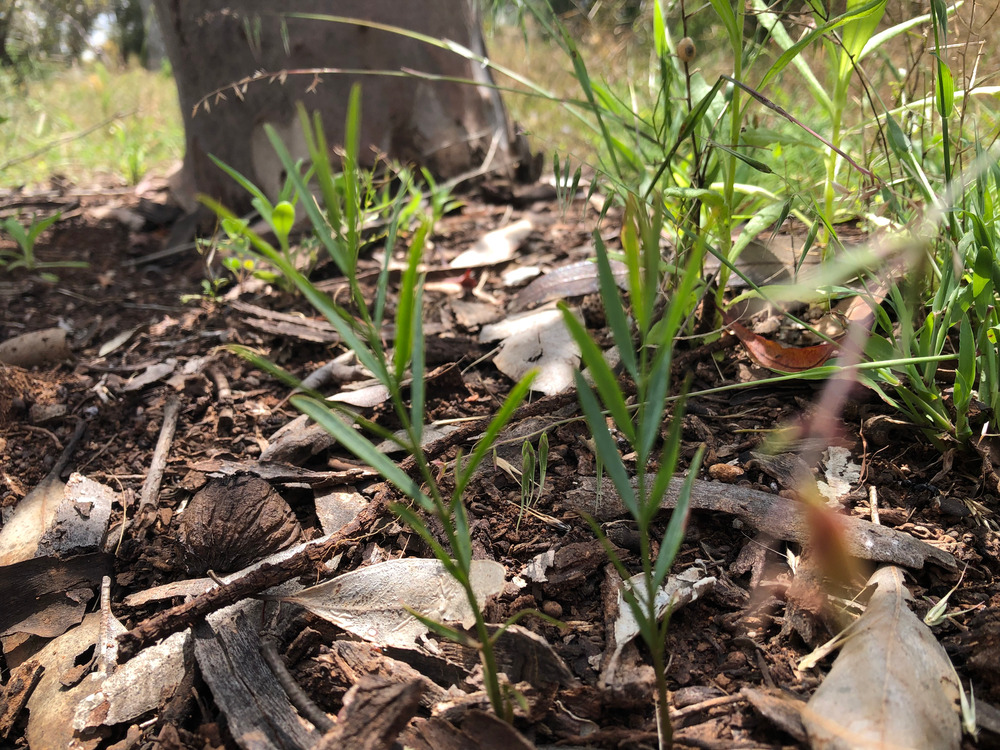
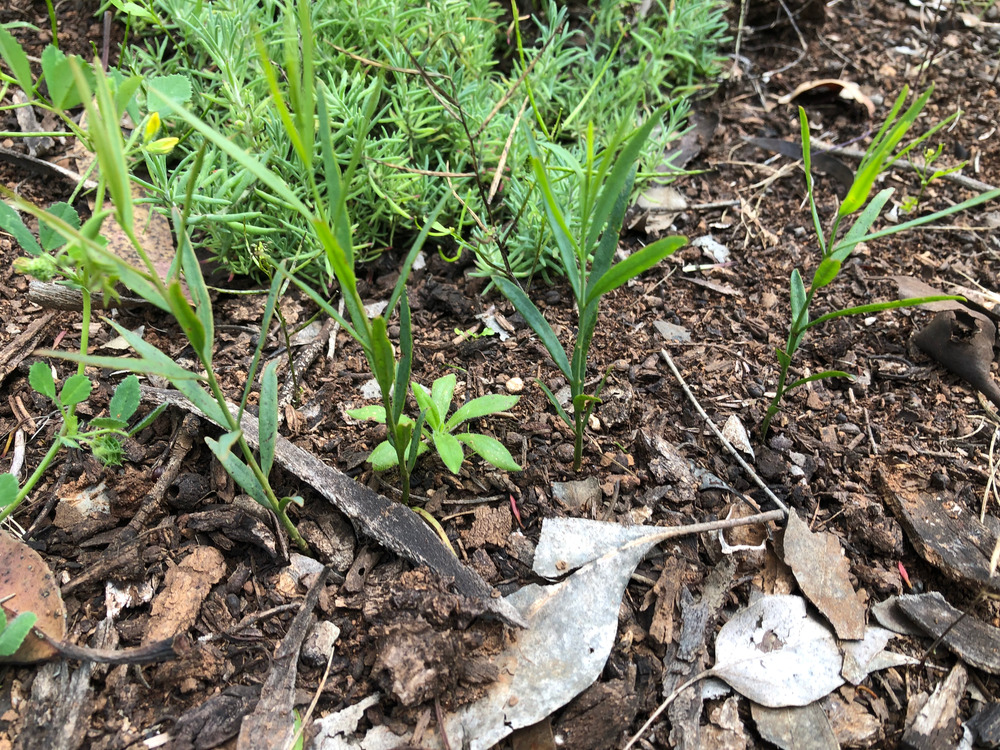
roughbarked said:
roughbarked said:

OK, around ten/eleven months ago I planted an amount of quandong seeds where the fruit had rotted in the bag.
There are at least thirteen up as I saw today.
Yes I was watching but not like every day. Once a month or two, I had a look. It may be two or even three months since I last had a close look. So the above ground growth is quite rapid in the first few months, if there is aqua about.
These from my phone.
In the last photo, you can see how far apart I planted at best. It wasn’t specific, I scratched a circle around this E. cladocalyx (dwarf), which though it started well, gave up trying a number of times. Is still alive but could have made a host so it is where I scattered the seeds.
roughbarked said:
roughbarked said:
roughbarked said:

OK, around ten/eleven months ago I planted an amount of quandong seeds where the fruit had rotted in the bag.
There are at least thirteen up as I saw today.
Yes I was watching but not like every day. Once a month or two, I had a look. It may be two or even three months since I last had a close look. So the above ground growth is quite rapid in the first few months, if there is aqua about.
These from my phone.
In the last photo, you can see how far apart I planted at best. It wasn’t specific, I scratched a circle around this E. cladocalyx (dwarf), which though it started well, gave up trying a number of times. Is still alive but could have made a host so it is where I scattered the seeds.
Of course to some this may not be of great interest but on the north side there were far fewer to no seedlings visible.
roughbarked said:
roughbarked said:
roughbarked said:Yes I was watching but not like every day. Once a month or two, I had a look. It may be two or even three months since I last had a close look. So the above ground growth is quite rapid in the first few months, if there is aqua about.
These from my phone.
In the last photo, you can see how far apart I planted at best. It wasn’t specific, I scratched a circle around this E. cladocalyx (dwarf), which though it started well, gave up trying a number of times. Is still alive but could have made a host so it is where I scattered the seeds.
Of course to some this may not be of great interest but on the north side there were far fewer to no seedlings visible.
However the floods didn’t stop us.
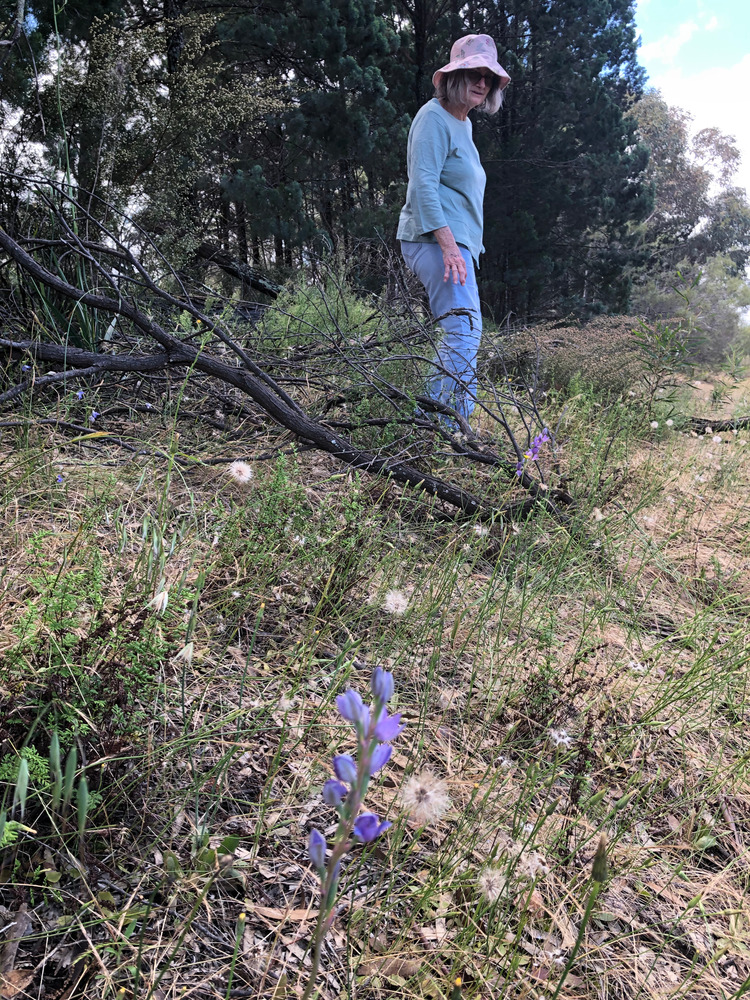
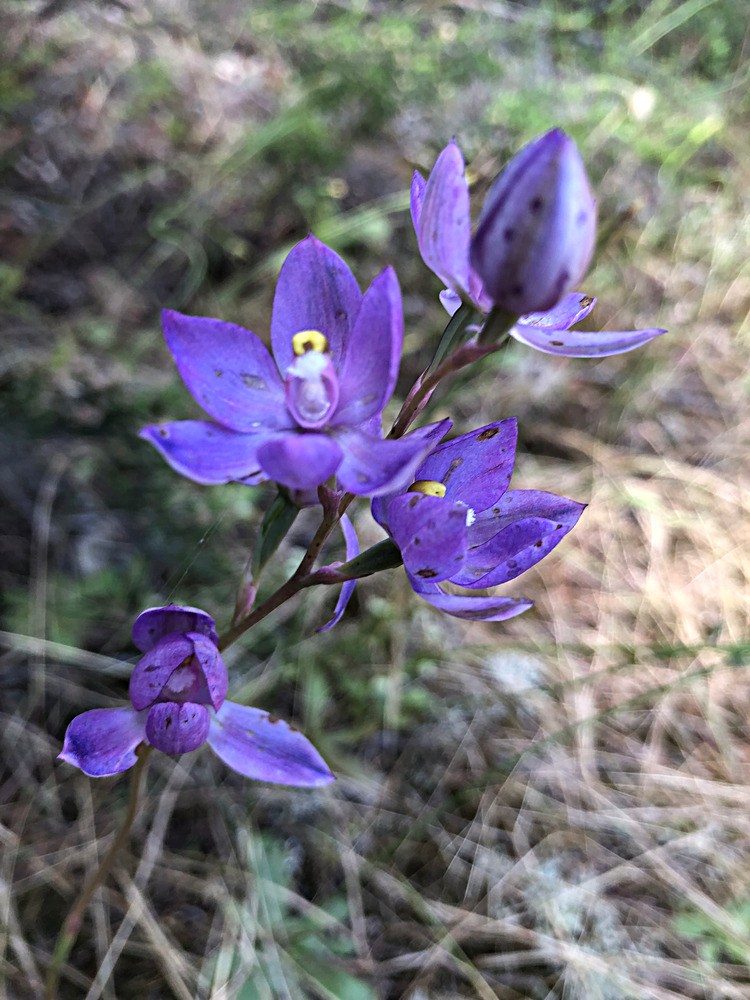
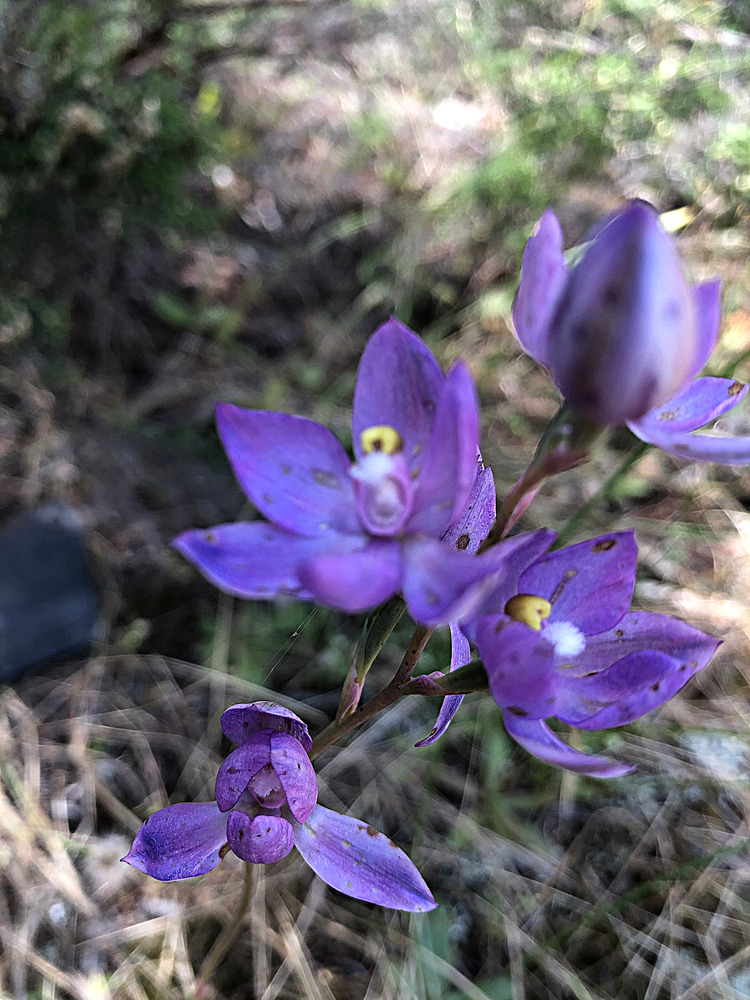
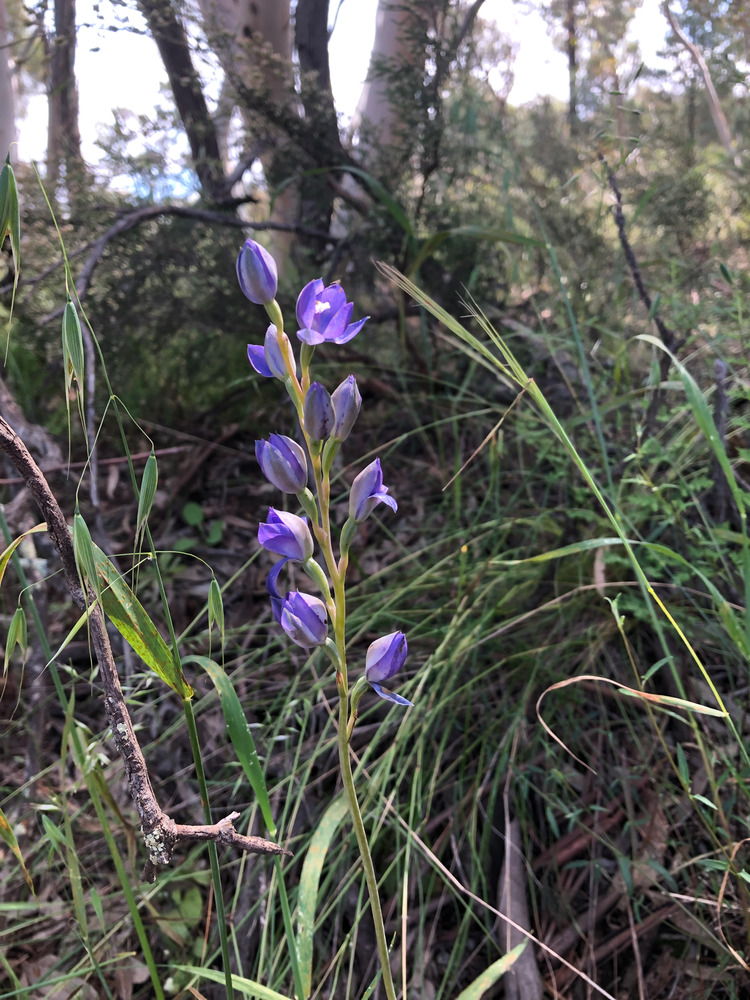
roughbarked said:
However the floods didn’t stop us.
Must have been sunny, or those ones wouldn’t be out…
:)
buffy said:
roughbarked said:
However the floods didn’t stop us.
Must have been sunny, or those ones wouldn’t be out…
:)
We had to spend a while there to find gaps in the building clouds.
There were a lot of buds not open.
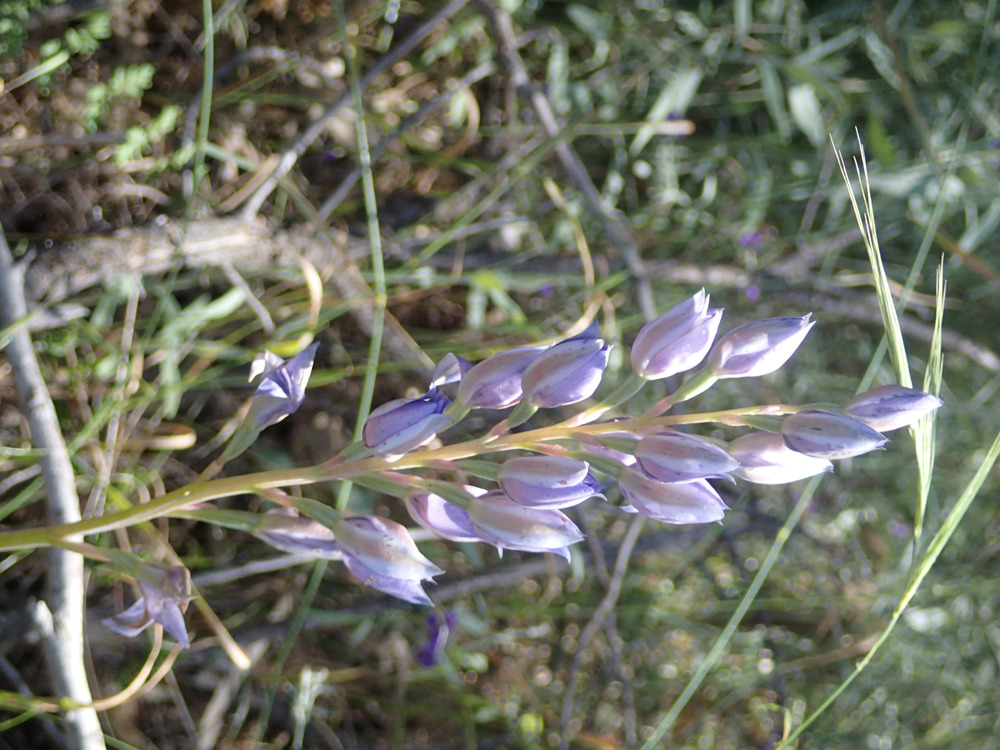
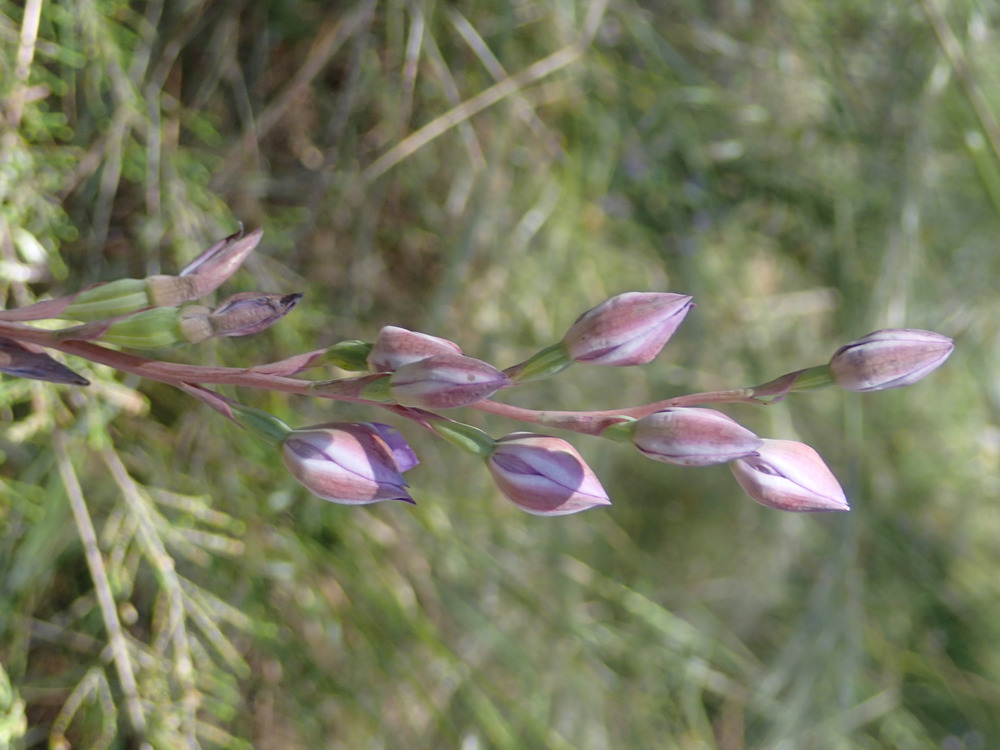
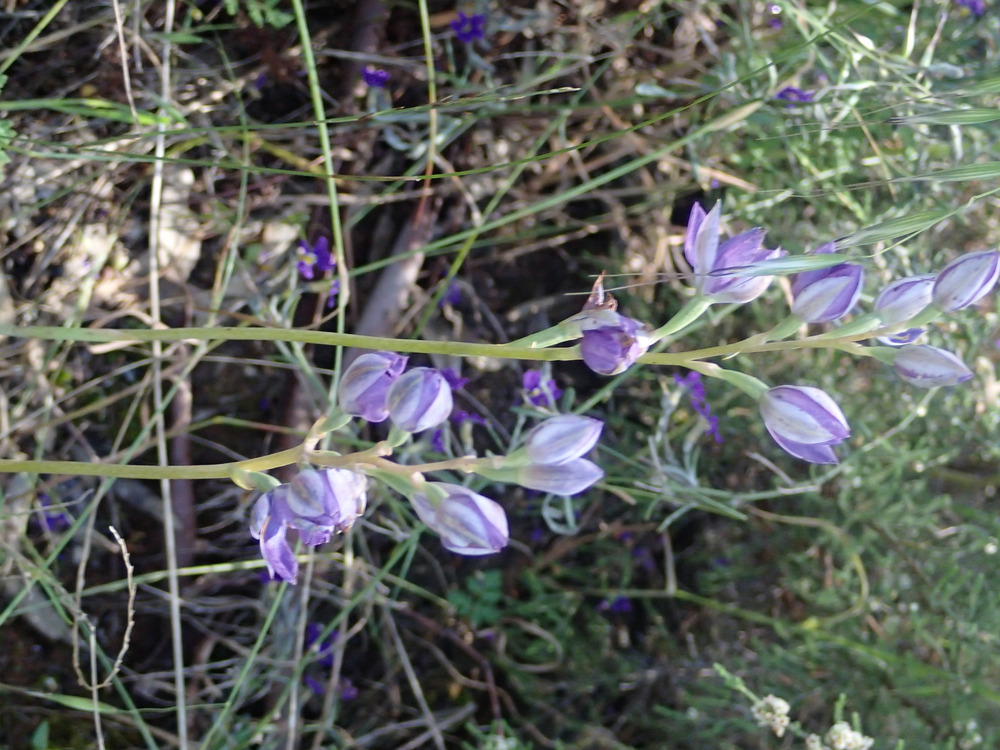
This one shows how close they are to the Mid-Western Highway.
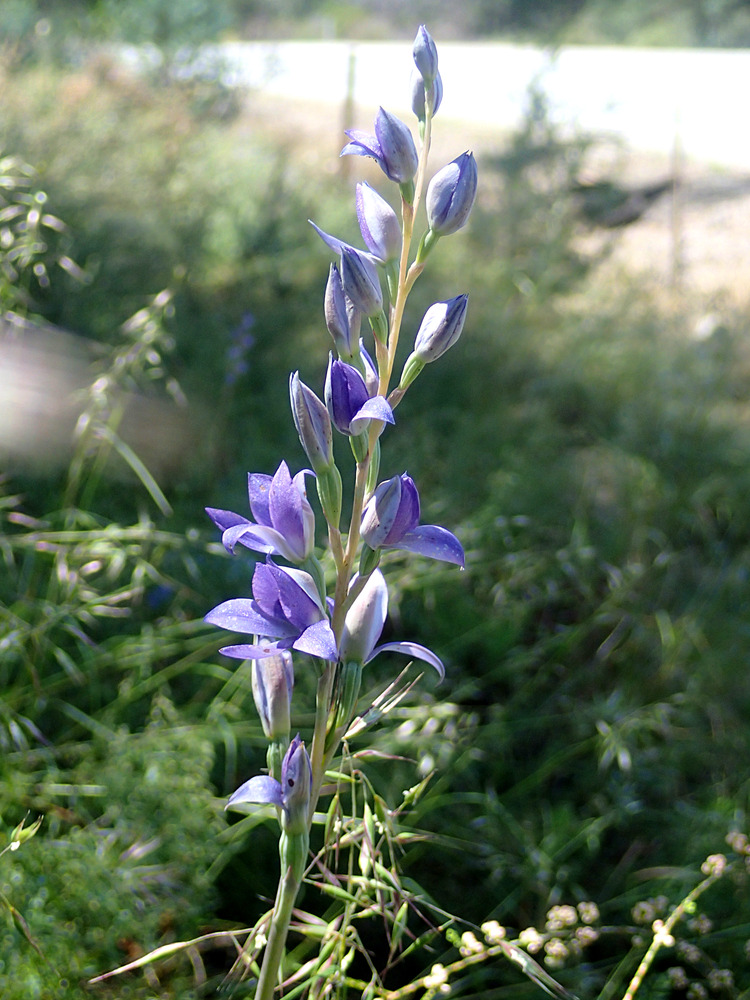
roughbarked said:
buffy said:
roughbarked said:
However the floods didn’t stop us.
Must have been sunny, or those ones wouldn’t be out…
:)
We had to spend a while there to find gaps in the building clouds.
There were a lot of buds not open.This one shows how close they are to the Mid-Western Highway.
Forgot to tip some up the right way by the looks.

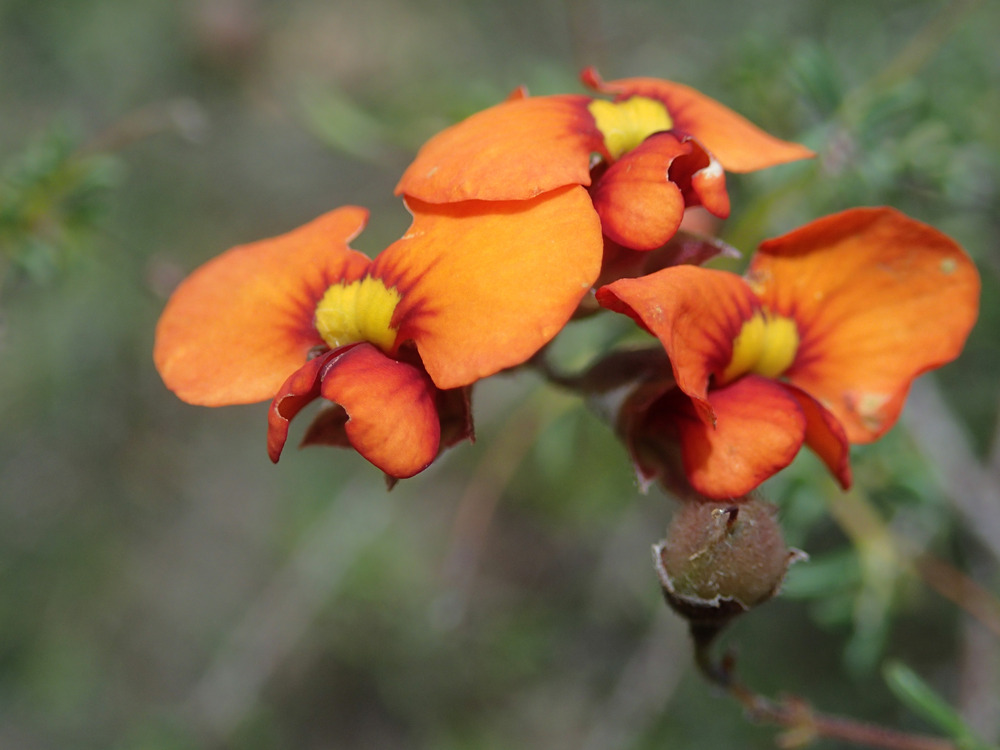
This is one my daughter found today. Quite rare. The Canberra spider orchid Caladenia actensis.
roughbarked said:
This is one my daughter found today. Quite rare. The Canberra spider orchid Caladenia actensis.
Would help if I added the photo.
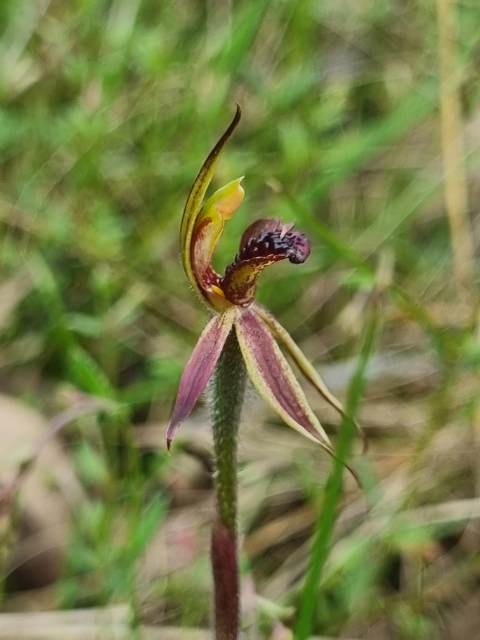
roughbarked said:
roughbarked said:
This is one my daughter found today. Quite rare. The Canberra spider orchid Caladenia actensis.
Would help if I added the photo.
Canberra spider orchid occurs in three small scattered populations on Mount Majura, Mount Ainslie and in the Madura Valley.
Solanum coactiliferum;
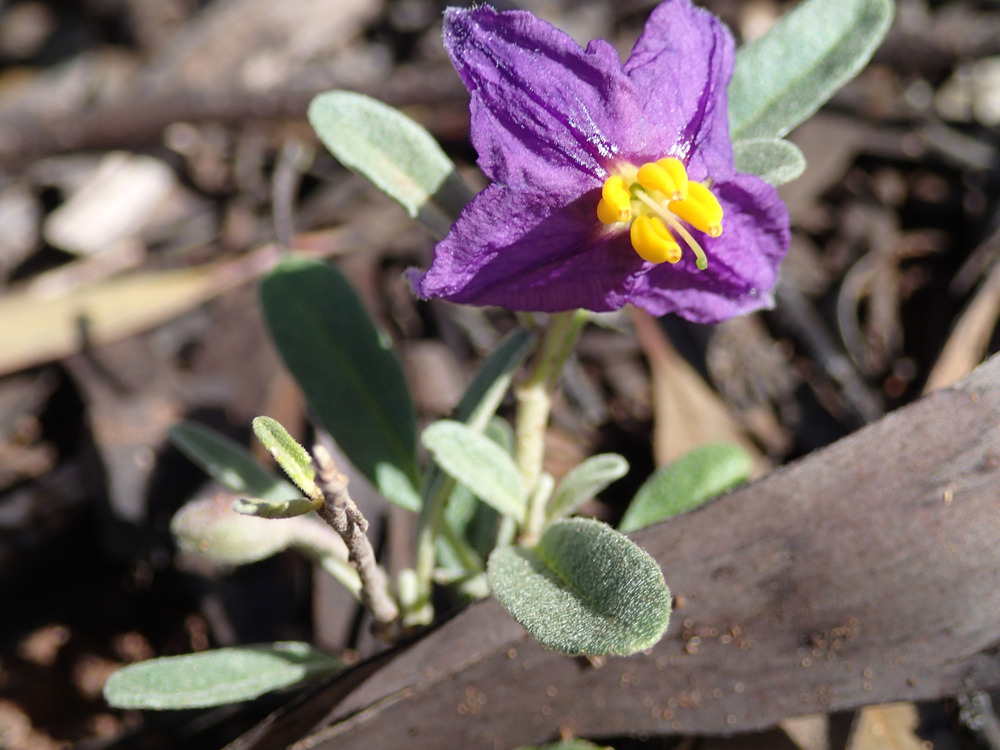

Grey Germander;
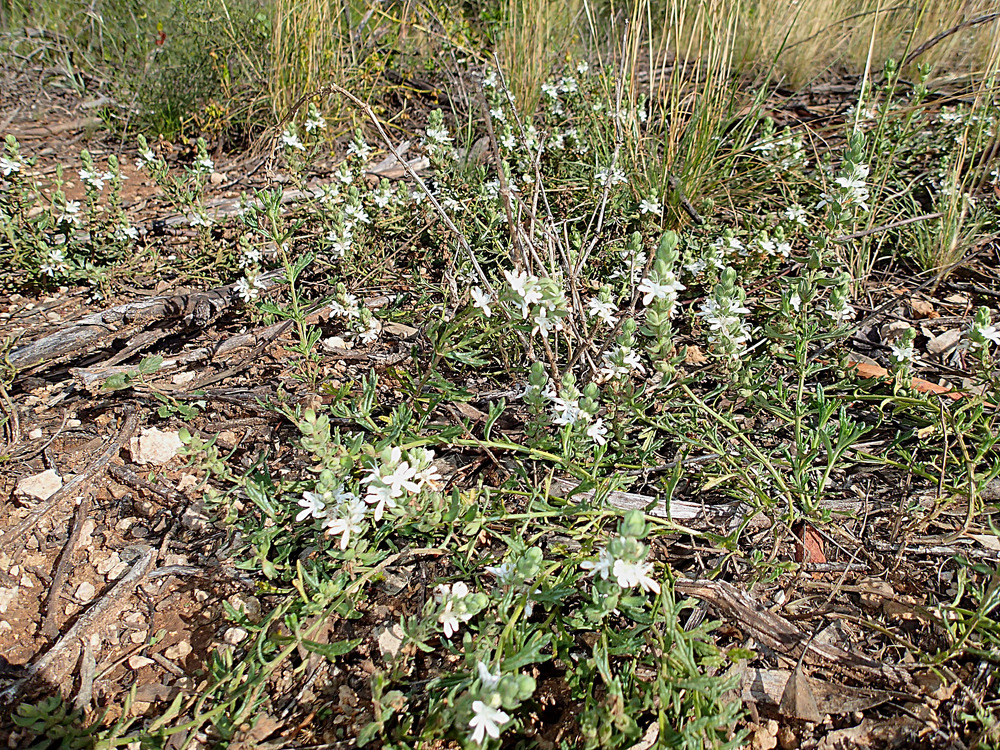
Dianella revoluta and Thysanotus; Both planted by moi. So was the dead tree, about 35 years earlier.
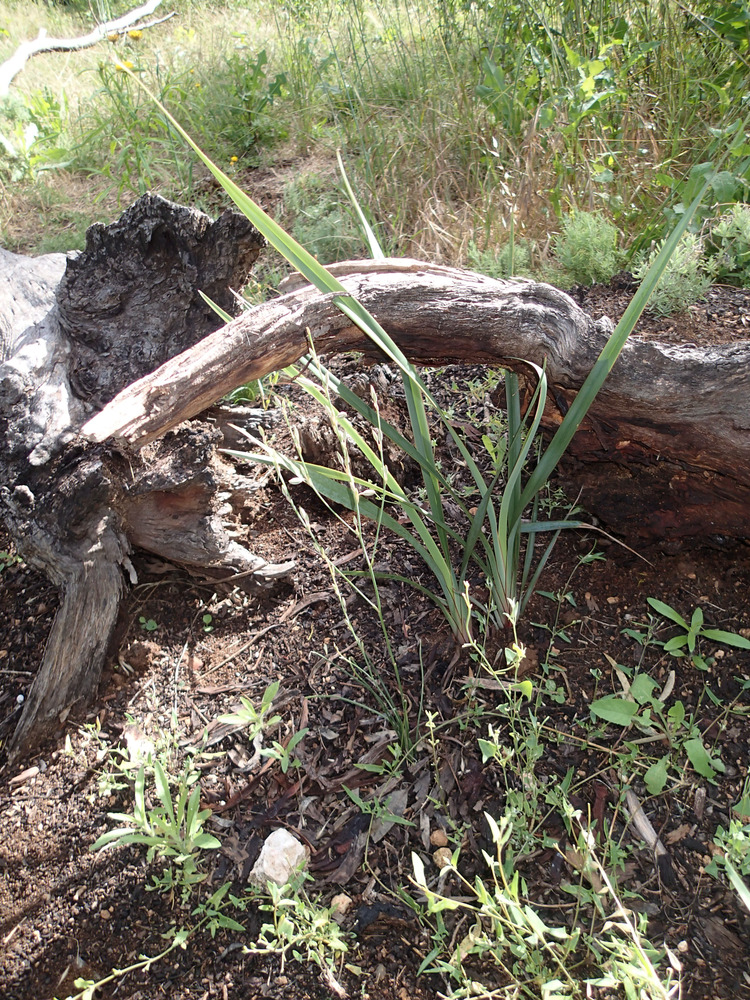
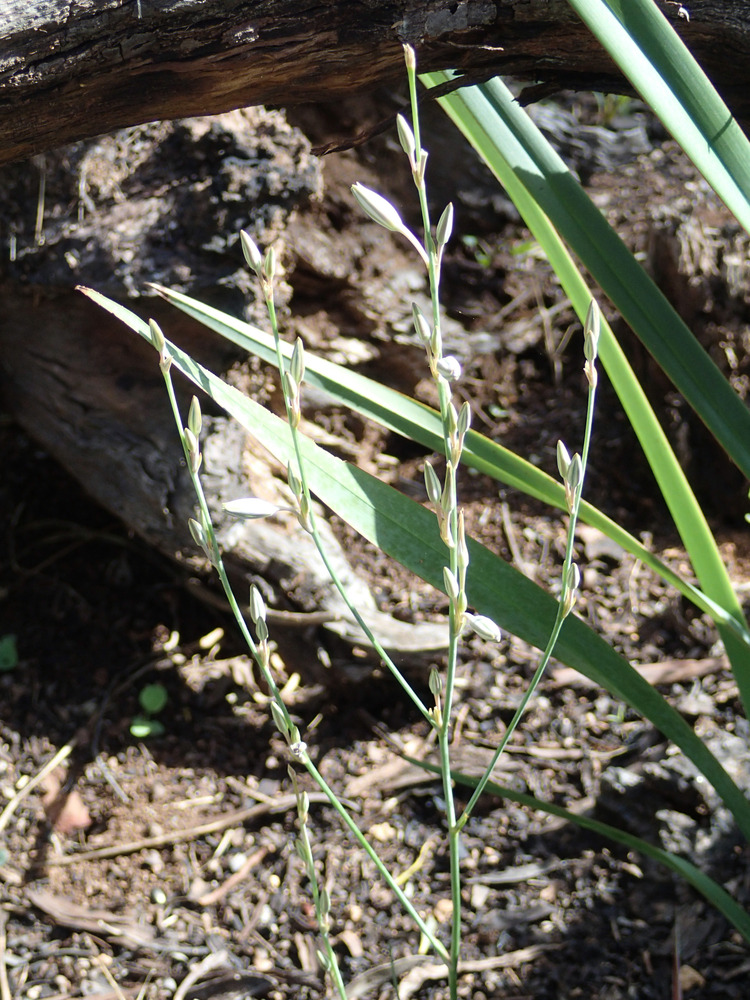
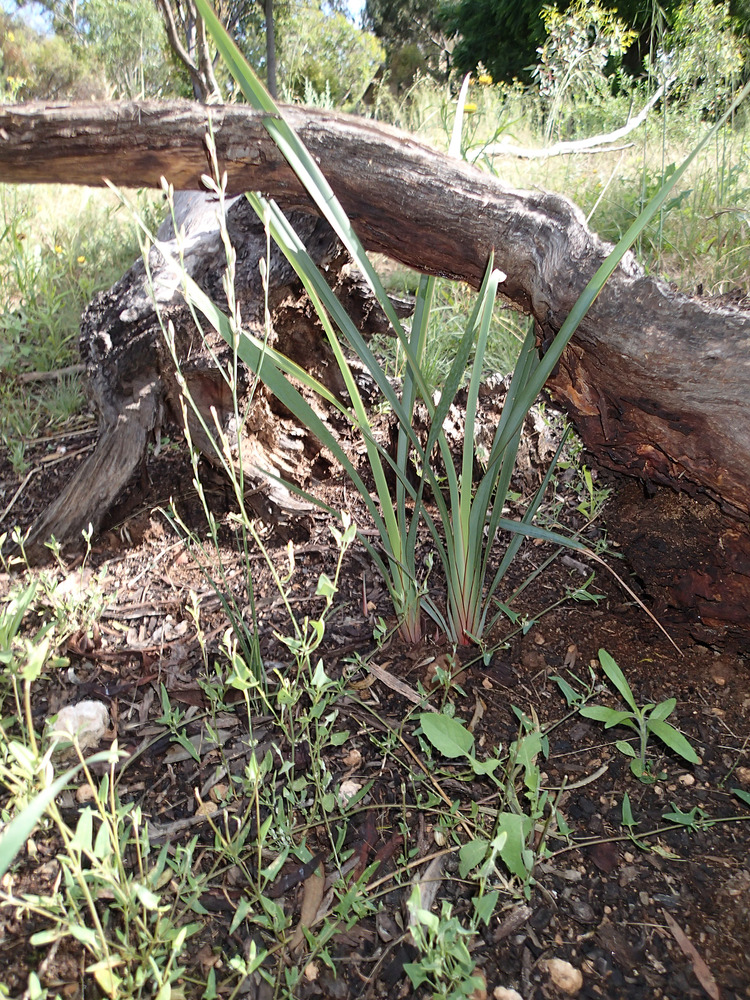 .
.
Wasn’t sunny enough. They tried hard to open. These fringe lilies.

and this fungi

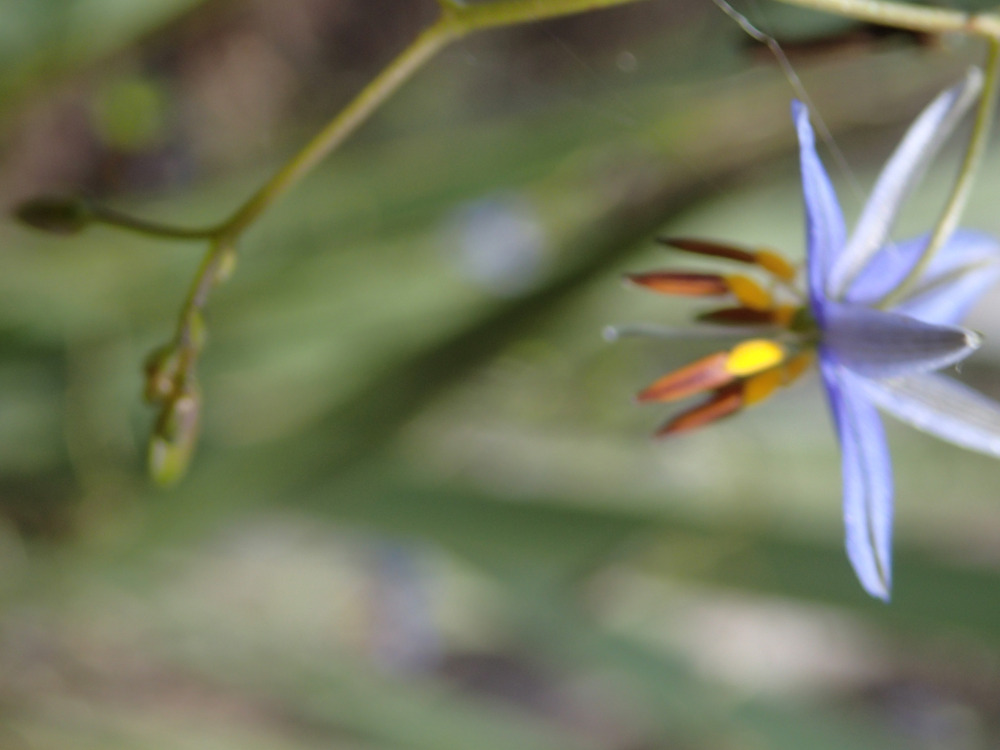
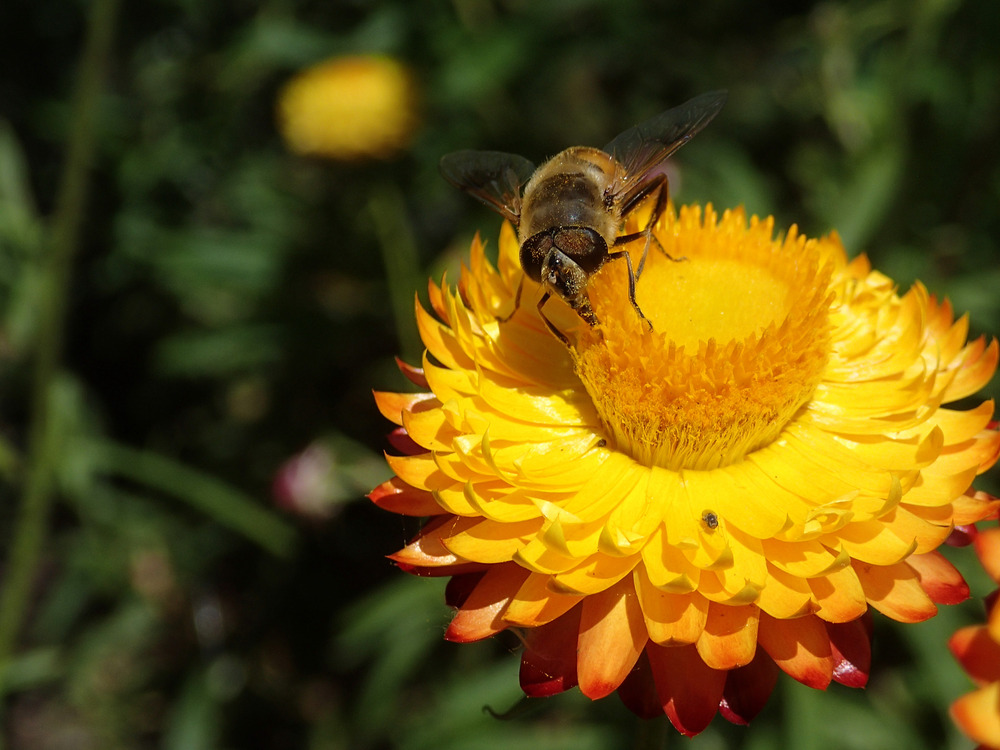
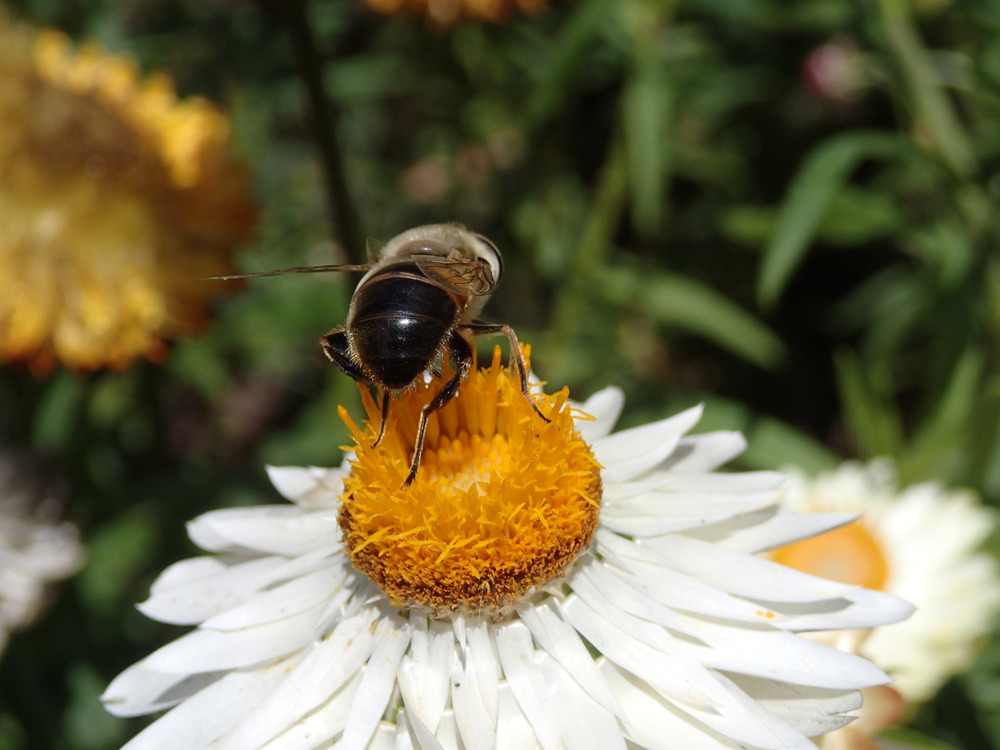
one of the succulents in this planter I threw some stuff in a couple years ago living its best life..
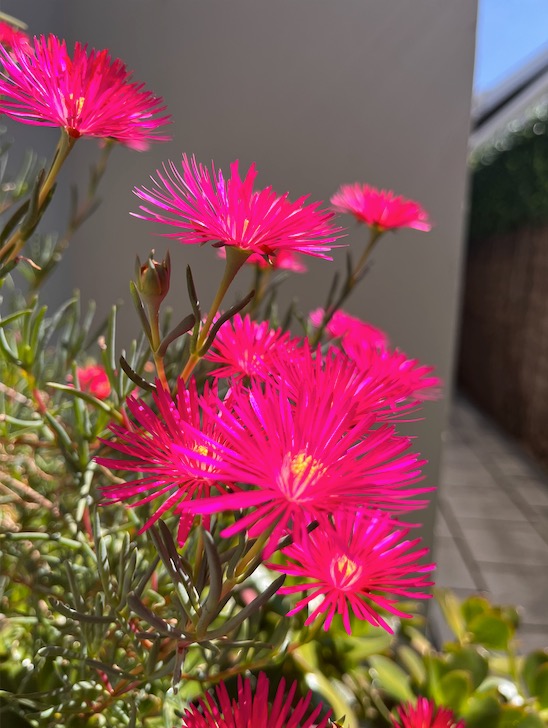
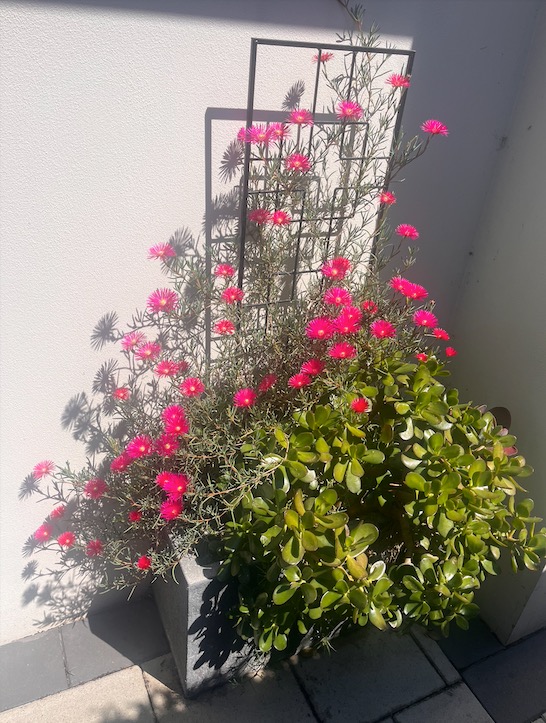
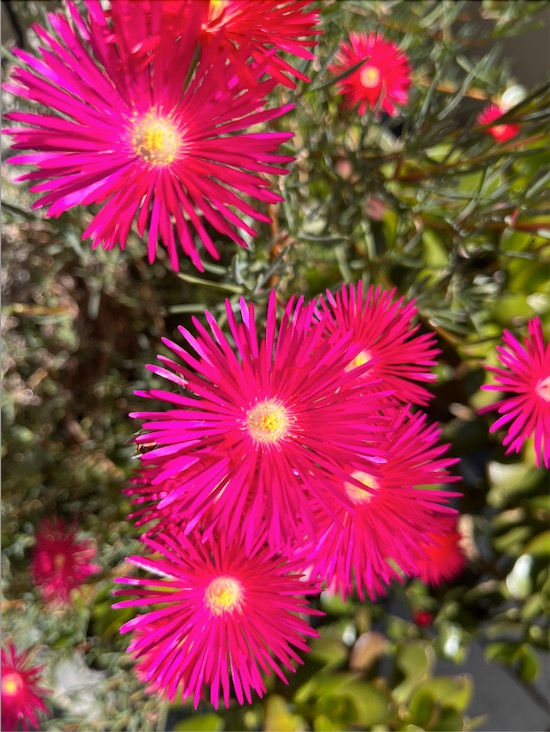
Arts said:
one of the succulents in this planter I threw some stuff in a couple years ago living its best life..
That’s, um…BRIGHT!
buffy said:
Arts said:
one of the succulents in this planter I threw some stuff in a couple years ago living its best life..
That’s, um…BRIGHT!
don’t colour shame the flowers.
Arts said:
one of the succulents in this planter I threw some stuff in a couple years ago living its best life..
Nice. :)

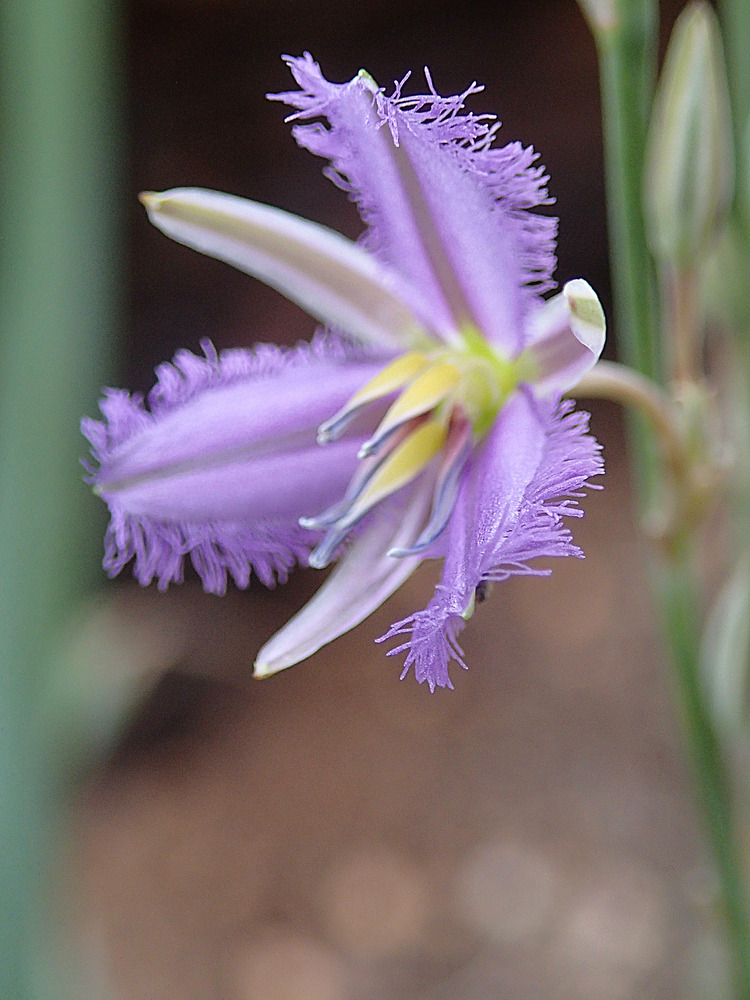
roughbarked said:
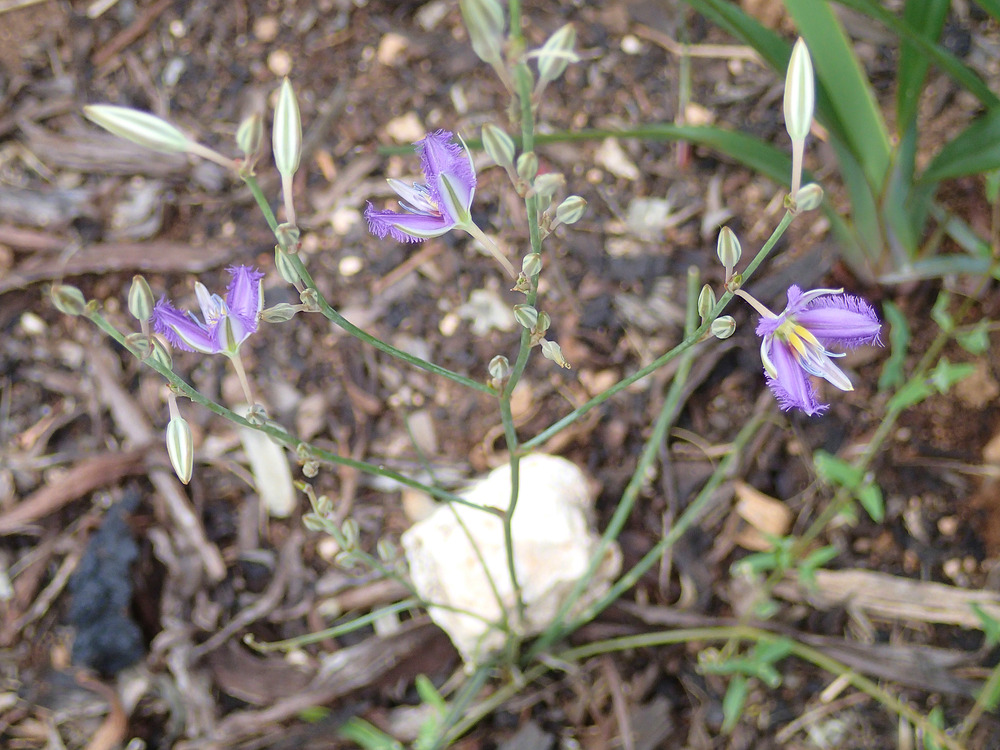
Arts said:
buffy said:
Arts said:
one of the succulents in this planter I threw some stuff in a couple years ago living its best life..
That’s, um…BRIGHT!
don’t colour shame the flowers.
Once upon a time that would have been labelled Cartland pink.
roughbarked said:
roughbarked said:
Which one is it? Can’t see basal leaves to use the key.
https://plantnet.rbgsyd.nsw.gov.au/cgi-bin/NSWfl.pl?page=nswfl&lvl=gn&name=Thysanotus
buffy said:
roughbarked said:
roughbarked said:
Which one is it? Can’t see basal leaves to use the key.
https://plantnet.rbgsyd.nsw.gov.au/cgi-bin/NSWfl.pl?page=nswfl&lvl=gn&name=Thysanotus
https://plantnet.rbgsyd.nsw.gov.au/cgi-bin/NSWfl.pl?page=nswfl&lvl=sp&name=Thysanotus~baueri
roughbarked said:
buffy said:
roughbarked said:
Which one is it? Can’t see basal leaves to use the key.
https://plantnet.rbgsyd.nsw.gov.au/cgi-bin/NSWfl.pl?page=nswfl&lvl=gn&name=Thysanotus
https://plantnet.rbgsyd.nsw.gov.au/cgi-bin/NSWfl.pl?page=nswfl&lvl=sp&name=Thysanotus~baueri
We don’t have T. baueri here, it’s only up North in the Mallee. We have T. patersonii (twining fringe lily, just finished its flowering season), T. tuberosus (just starting its season) and T.racemoides (which has just recently been separated out from T. juncifolius (now Gippsland only) and I haven’t noticed so far, should just be beginning to flower soon)
buffy said:
roughbarked said:
buffy said:Which one is it? Can’t see basal leaves to use the key.
https://plantnet.rbgsyd.nsw.gov.au/cgi-bin/NSWfl.pl?page=nswfl&lvl=gn&name=Thysanotus
https://plantnet.rbgsyd.nsw.gov.au/cgi-bin/NSWfl.pl?page=nswfl&lvl=sp&name=Thysanotus~baueri
We don’t have T. baueri here, it’s only up North in the Mallee. We have T. patersonii (twining fringe lily, just finished its flowering season), T. tuberosus (just starting its season) and T.racemoides (which has just recently been separated out from T. juncifolius (now Gippsland only) and I haven’t noticed so far, should just be beginning to flower soon)
We also have the twining fringe lily.

These are in a patch of garden where I decided I didn’t need so much rosemary and started planting seeds and cuttings of local natives. Bit by bit I’m pulling out the rosemary and replacing it with various flora from my surrounds.
Tall copper wire daisy.
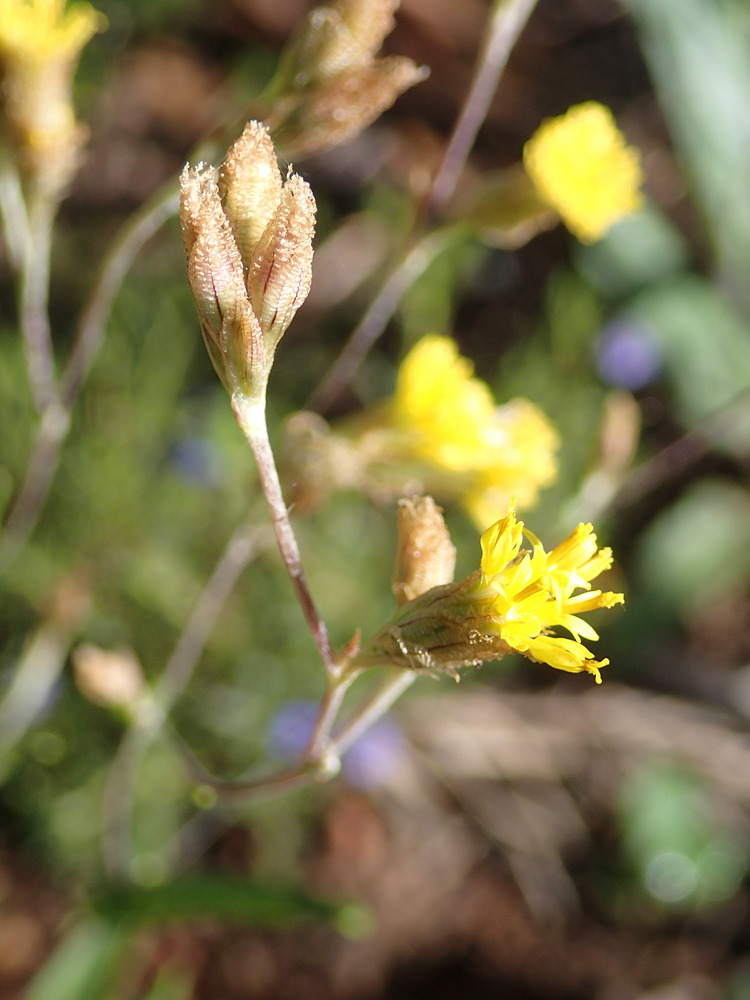

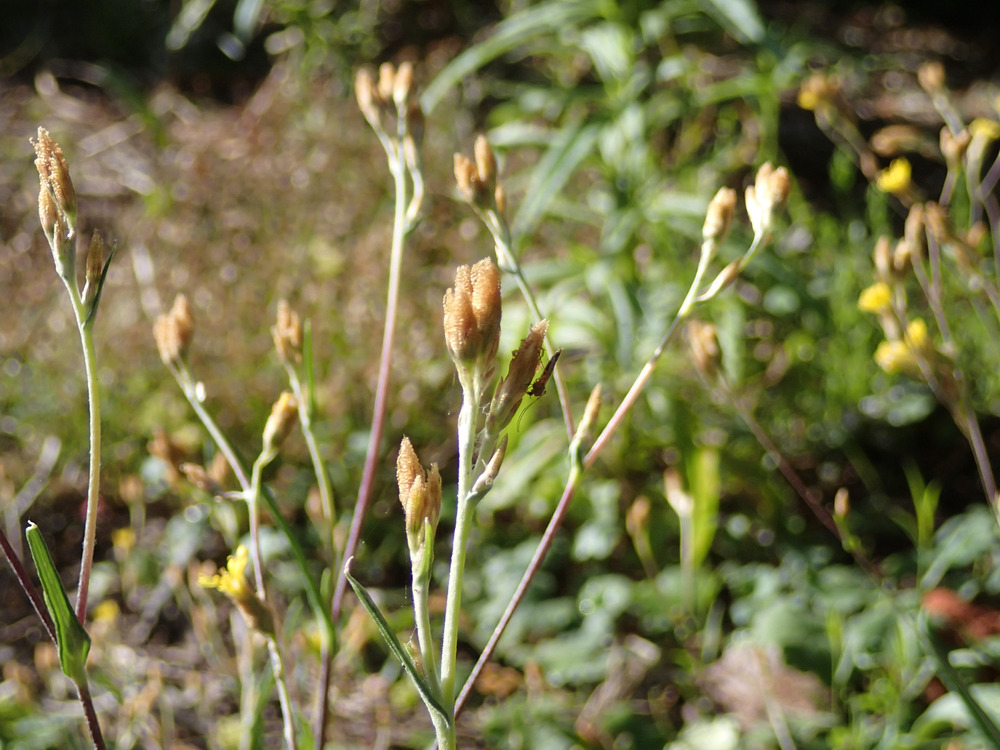
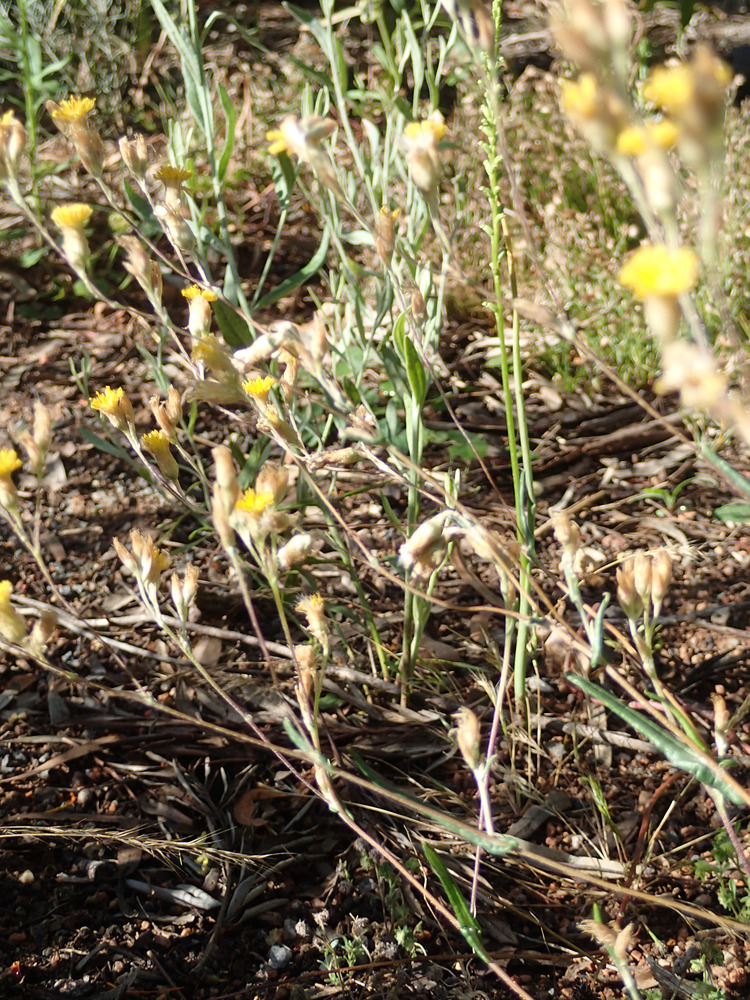
Something I have yet to put a name to.
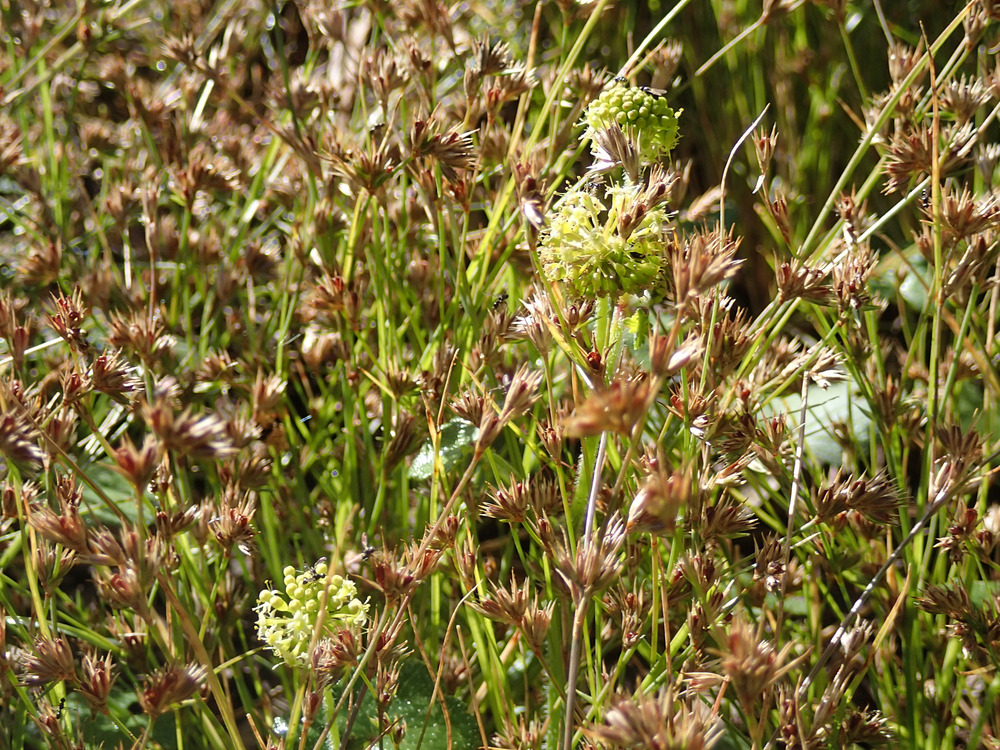
Grooved Dampiera. Common onion orchid.
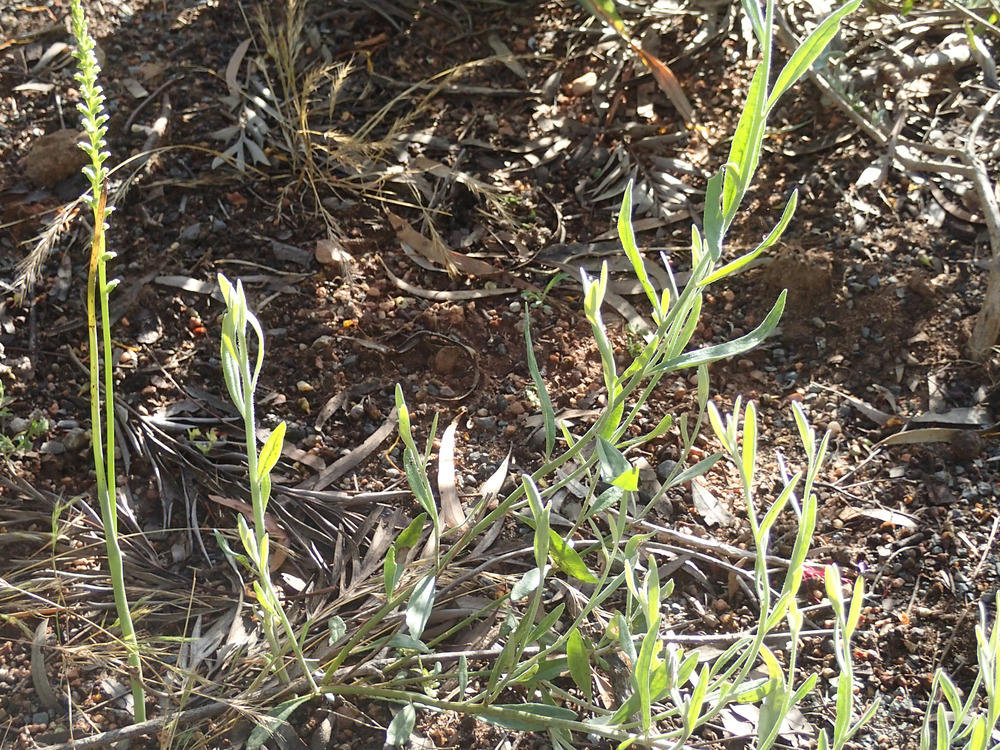
Halgania cyanea
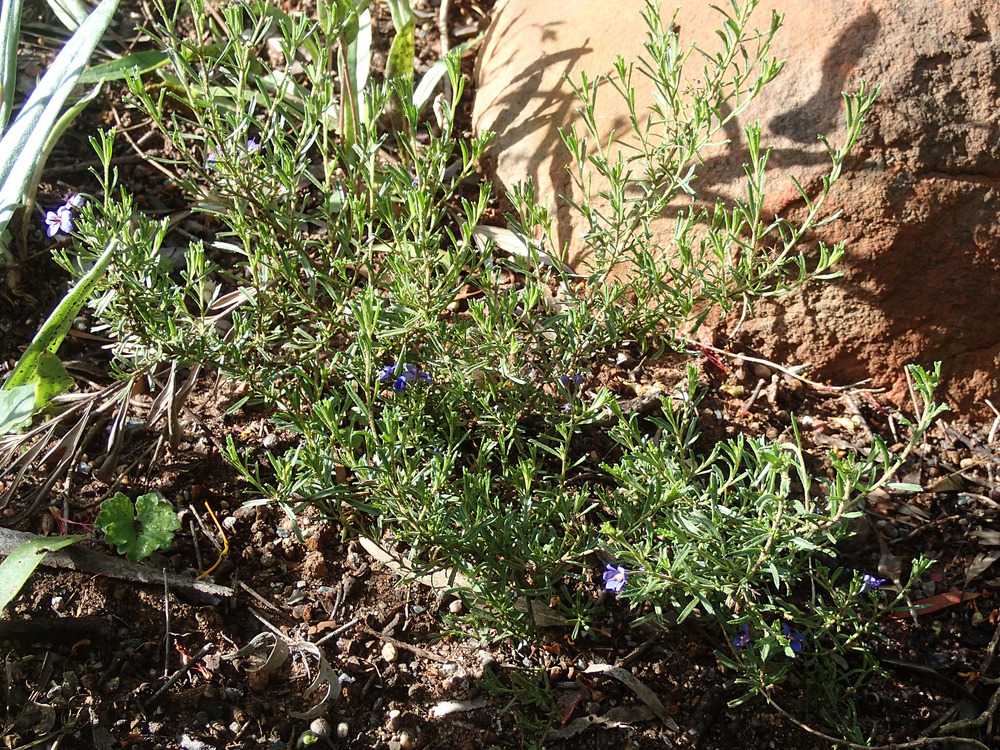
Brunonia. With kangaroo grass.
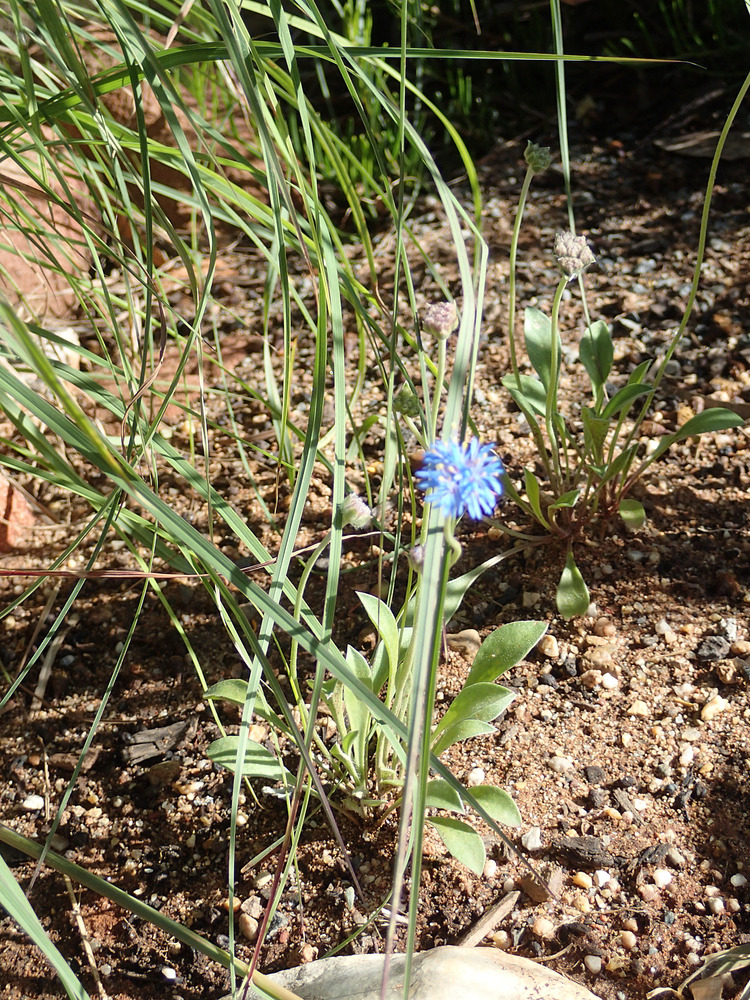

More onion orchids. Dianella laevis and Helichrtsm bracteata. in some of these images there will be almost flowering fringe lilies and small Bulbiferum? Actually, right bottom foreground some Fringe lily flower buds can be seen.
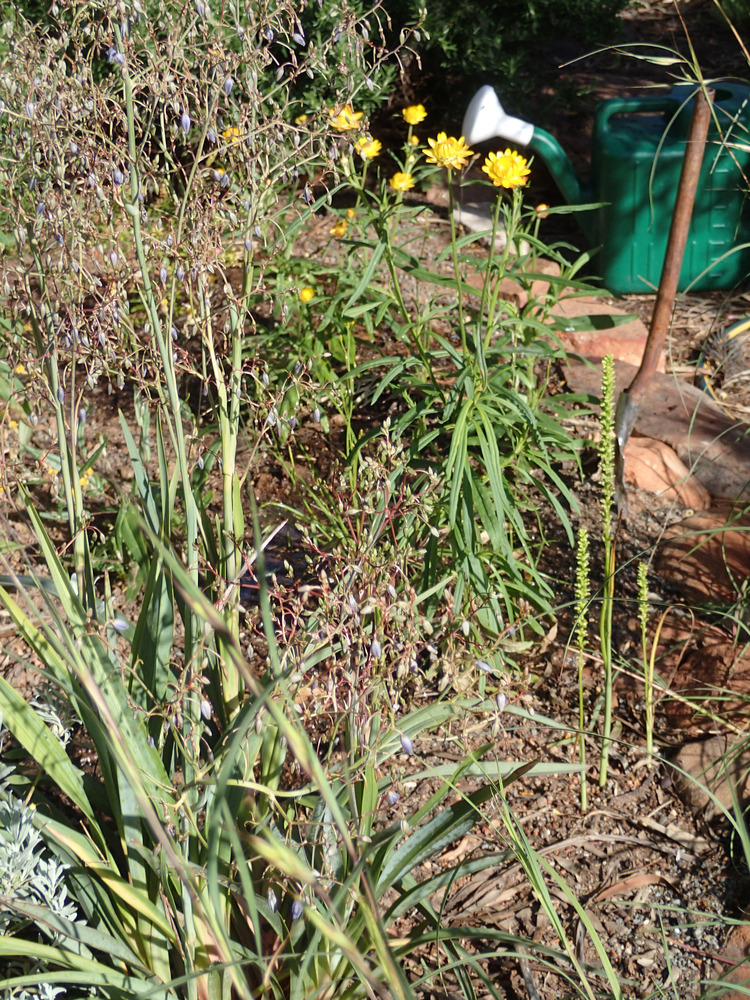
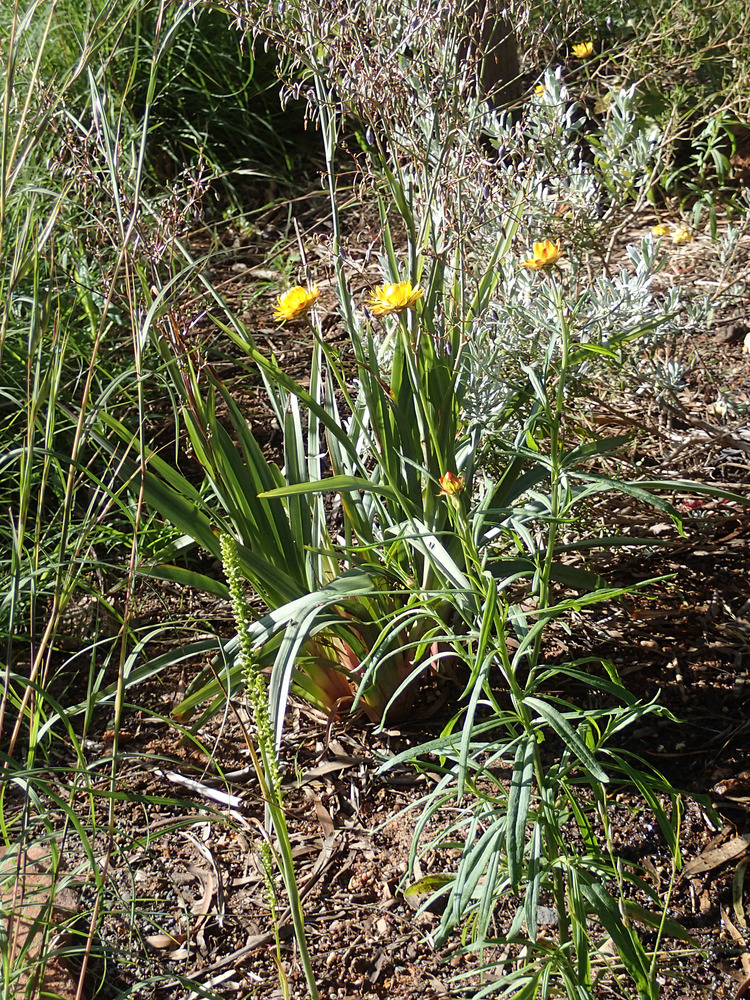
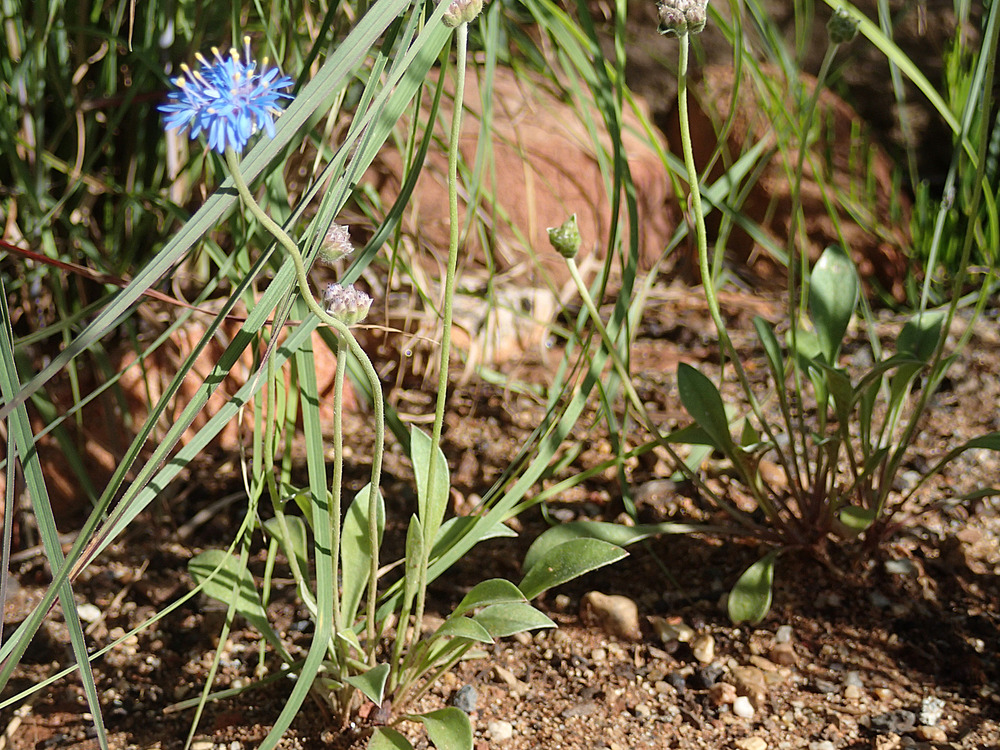
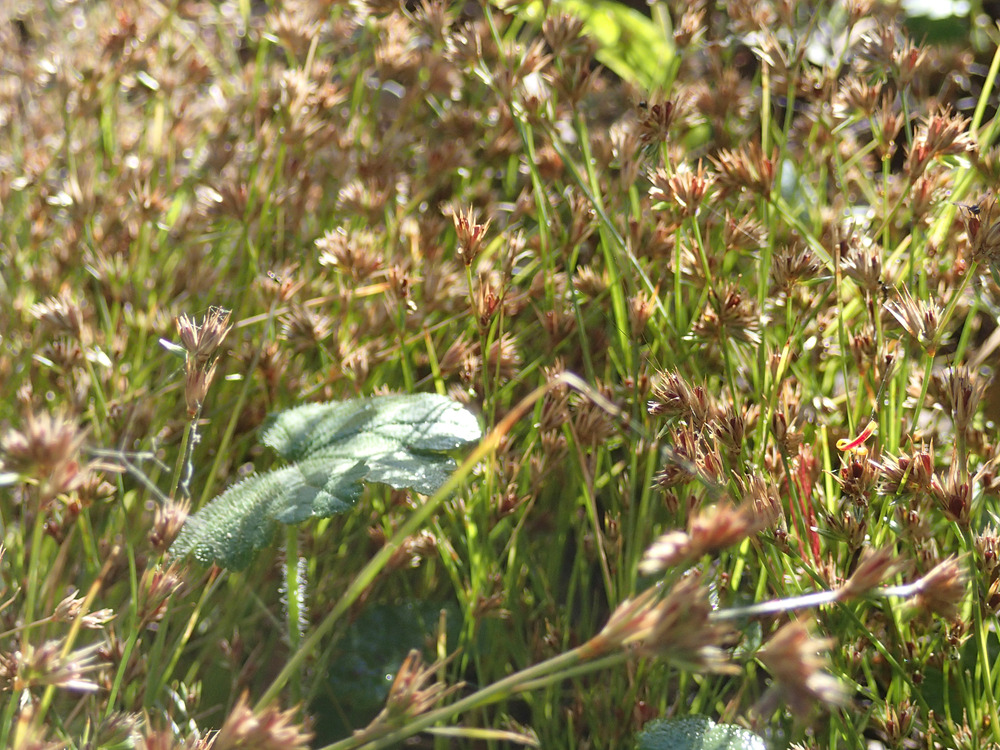
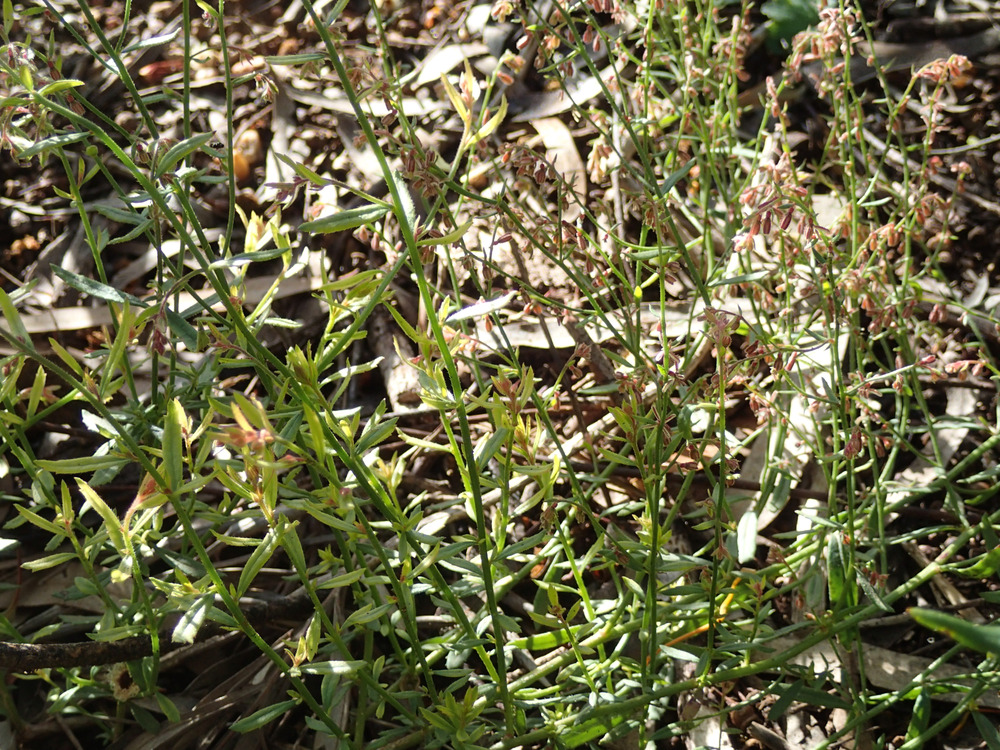
Scaevola humilis
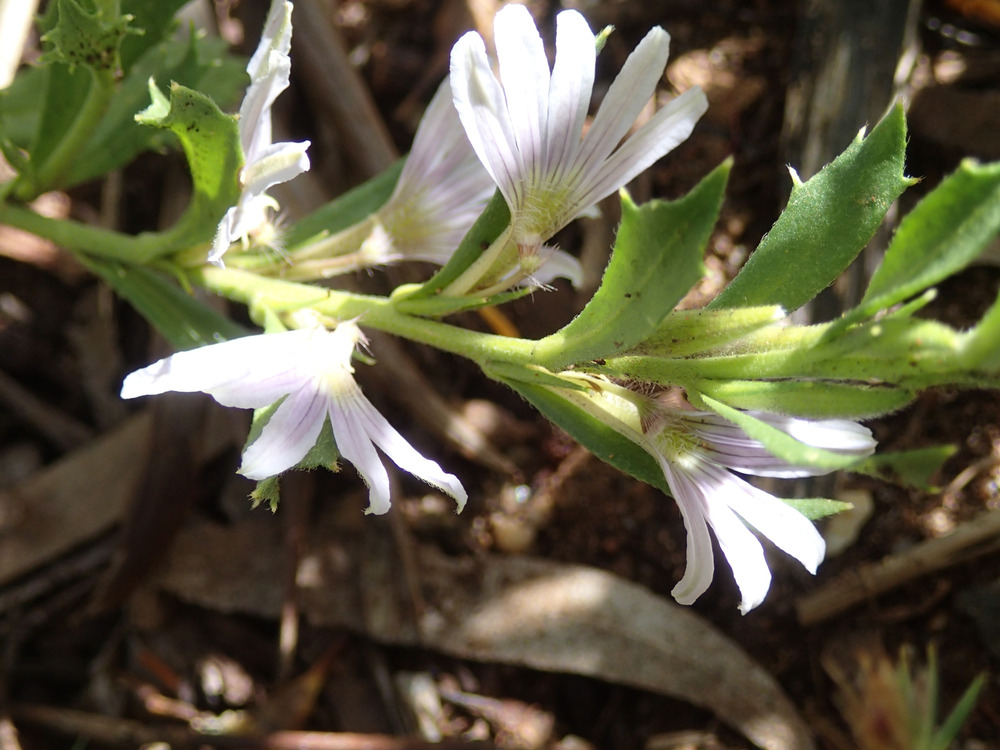
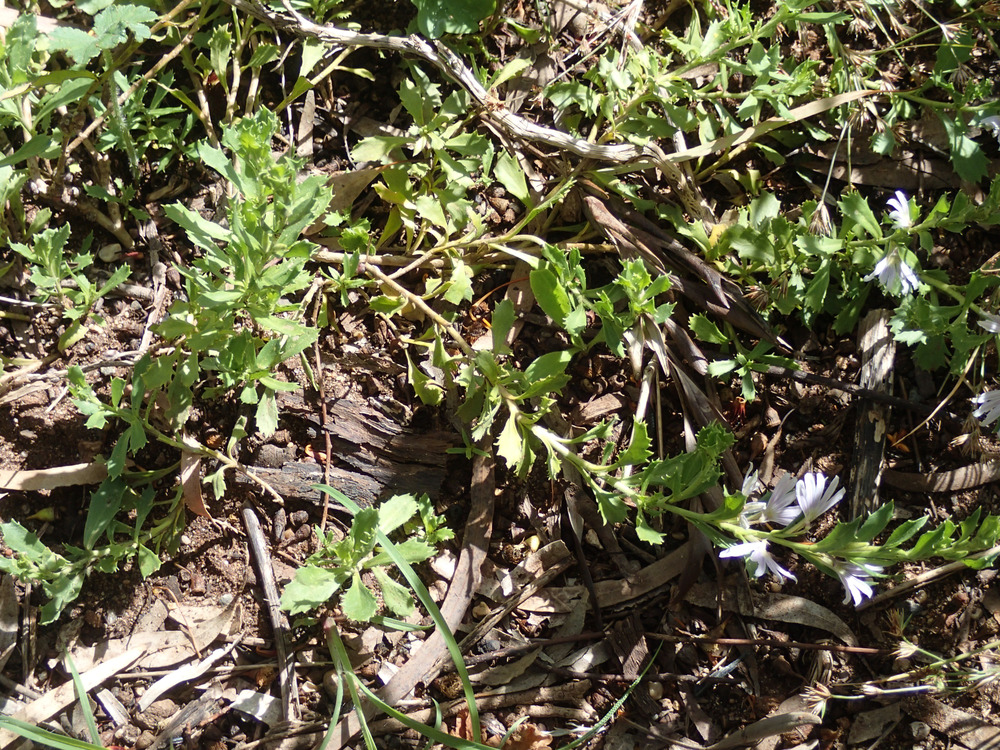
and whatever this is.
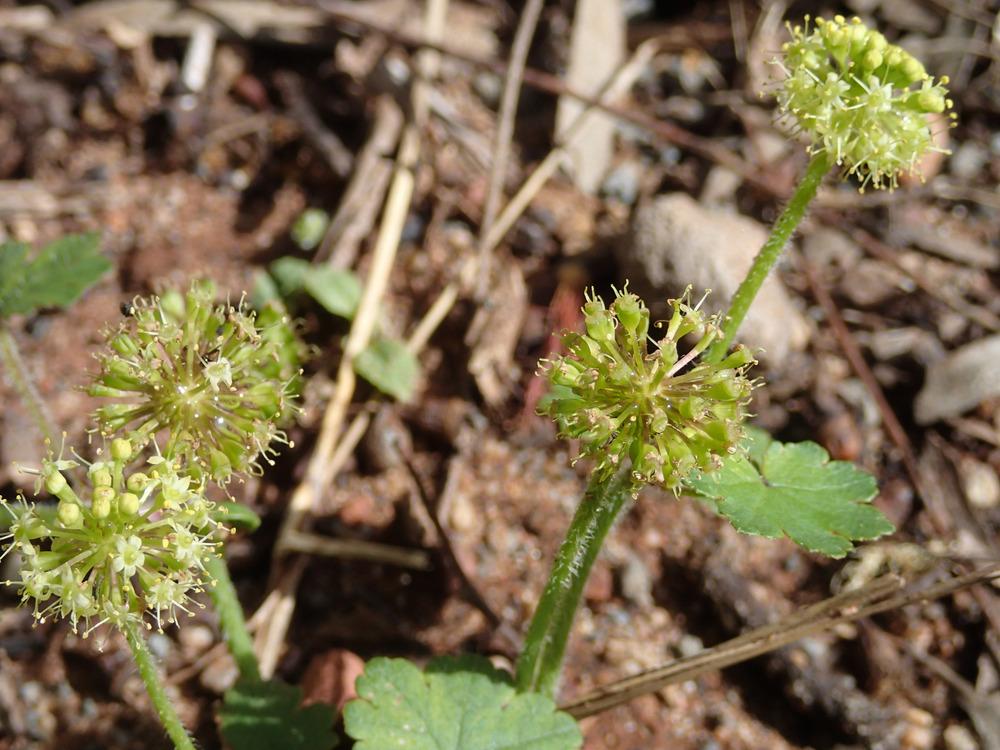
and I believe it is Bulbinopsis barbata? blurry shot.
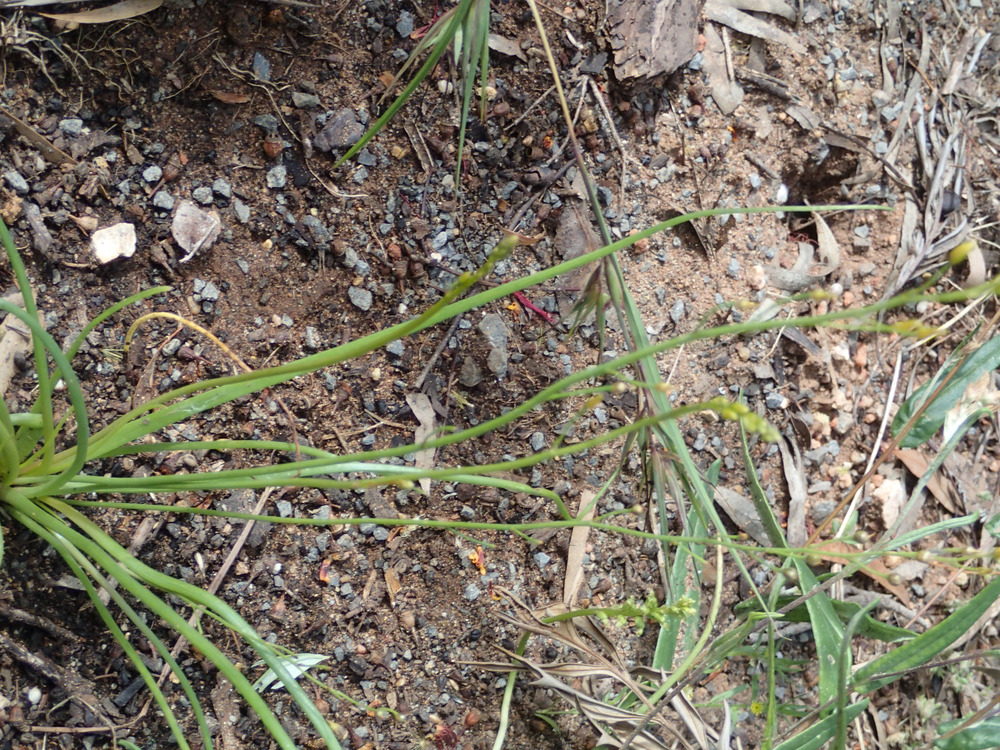
roughbarked said:
Scaevola humilis
and whatever this is.
and I believe it is Bulbinopsis barbata? blurry shot.
The “whatever this is” is a Hydrocotyle.
roughbarked said:
Scaevola humilis
and whatever this is.
and I believe it is Bulbinopsis barbata? blurry shot.


My bet is Hydrocotyle laxiflora
PermeateFree said:
roughbarked said:
Scaevola humilis
and whatever this is.
and I believe it is Bulbinopsis barbata? blurry shot.
My bet is Hydrocotyle laxiflora
I’d go there too. Lots and lots and lots of it in our bush.
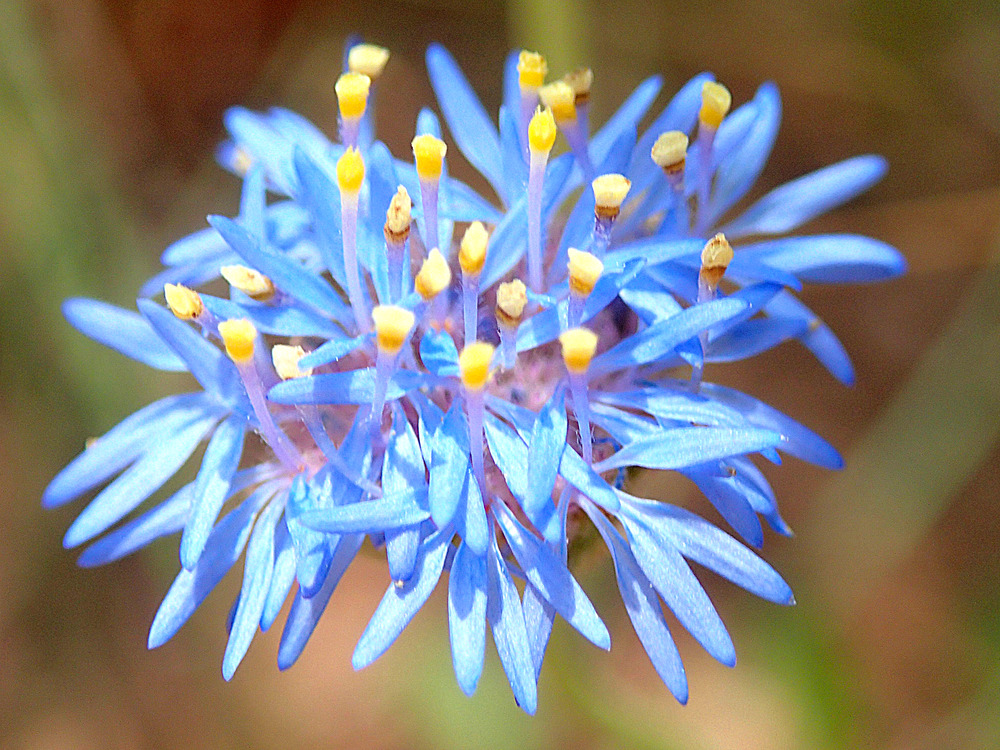 It is blue Brunonia.
It is blue Brunonia.
Flora and fauna.
This has to be the tiniest woodhopper I have photographed.

Was photographing one of the flowering fringe lilies in my garden and then saw the fauna with the flora.

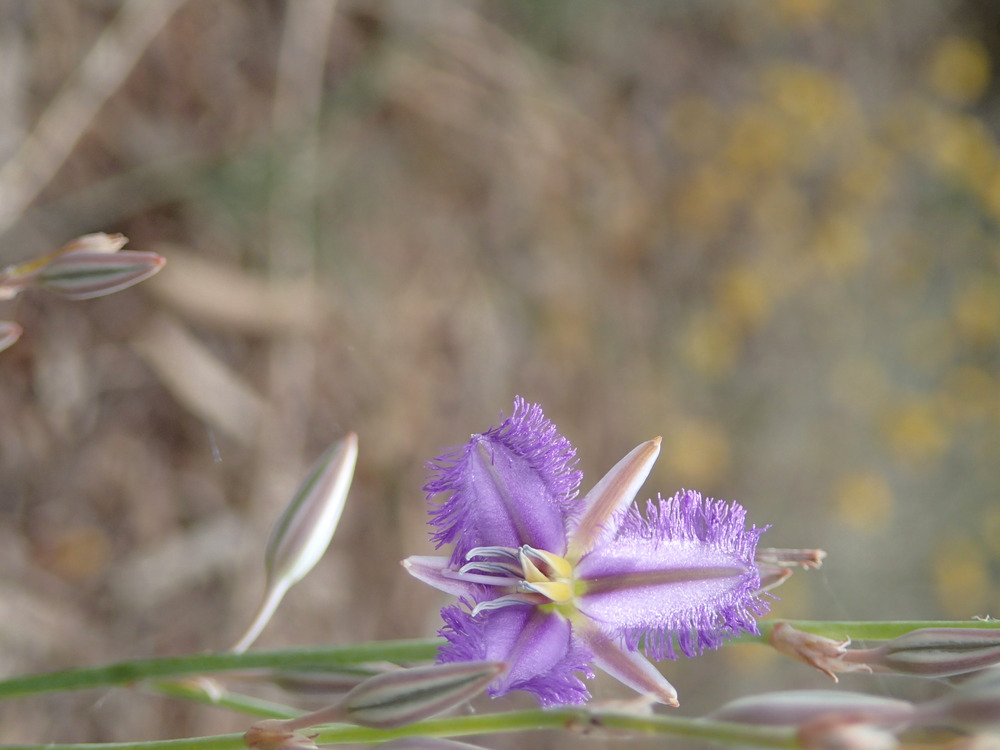
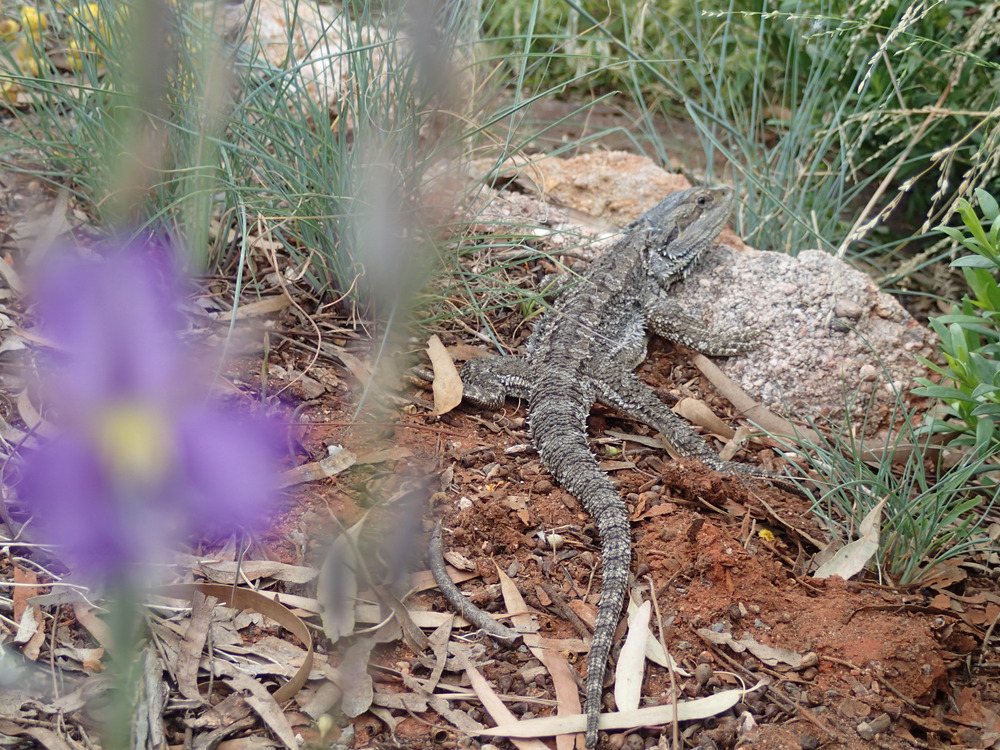
Wasn’t going to move for me so I walked around to the other side.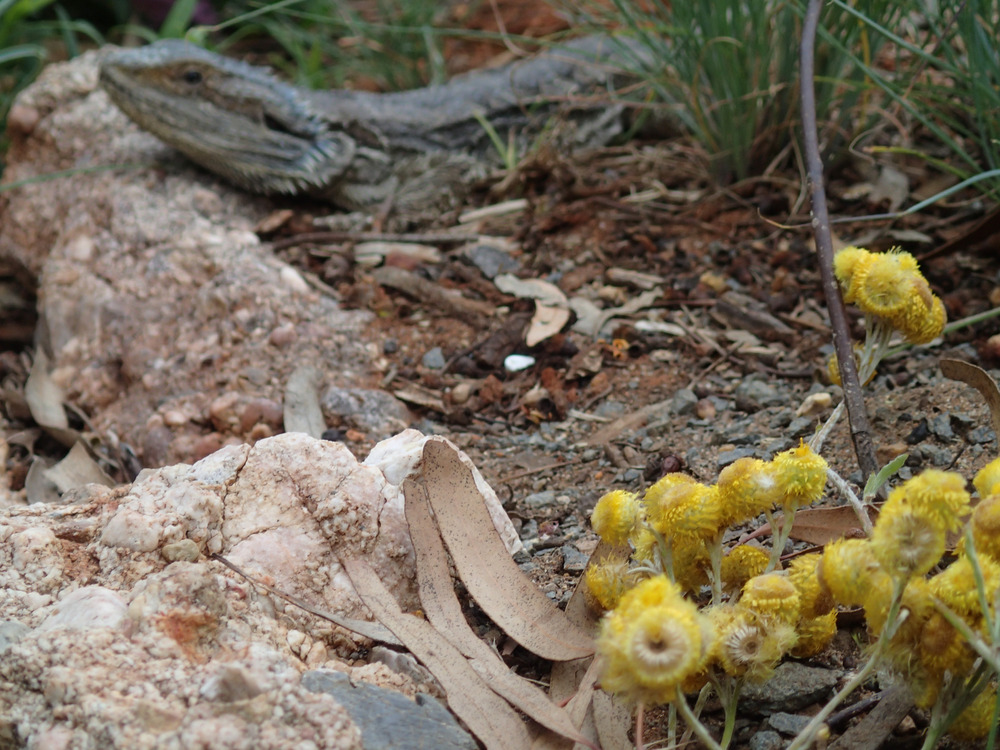
roughbarked said:
Was photographing one of the flowering fringe lilies in my garden and then saw the fauna with the flora.
Wasn’t going to move for me so I walked around to the other side.
Awwwww
ms spock said:
roughbarked said:
Was photographing one of the flowering fringe lilies in my garden and then saw the fauna with the flora.
Wasn’t going to move for me so I walked around to the other side.
Awwwww
Could have tipped my fringe lily the right way up eh.
roughbarked said:
ms spock said:
roughbarked said:
Was photographing one of the flowering fringe lilies in my garden and then saw the fauna with the flora.
Wasn’t going to move for me so I walked around to the other side.
Awwwww
Could have tipped my fringe lily the right way up eh.
You were having a moment with your bearded dragon…
So you are excused…
ms spock said:
roughbarked said:
ms spock said:Awwwww
Could have tipped my fringe lily the right way up eh.
You were having a moment with your bearded dragon…
So you are excused…
I have several moments per day as I walk around the garden. There are several beardies in the backyard and more just outside the fence. I walked up the back earlier today walking faster to carry a watering can to some pots. Startled by a dashing beardie rushing across in front of me to hide under a mandarin tree rather than see me come u so quickly.
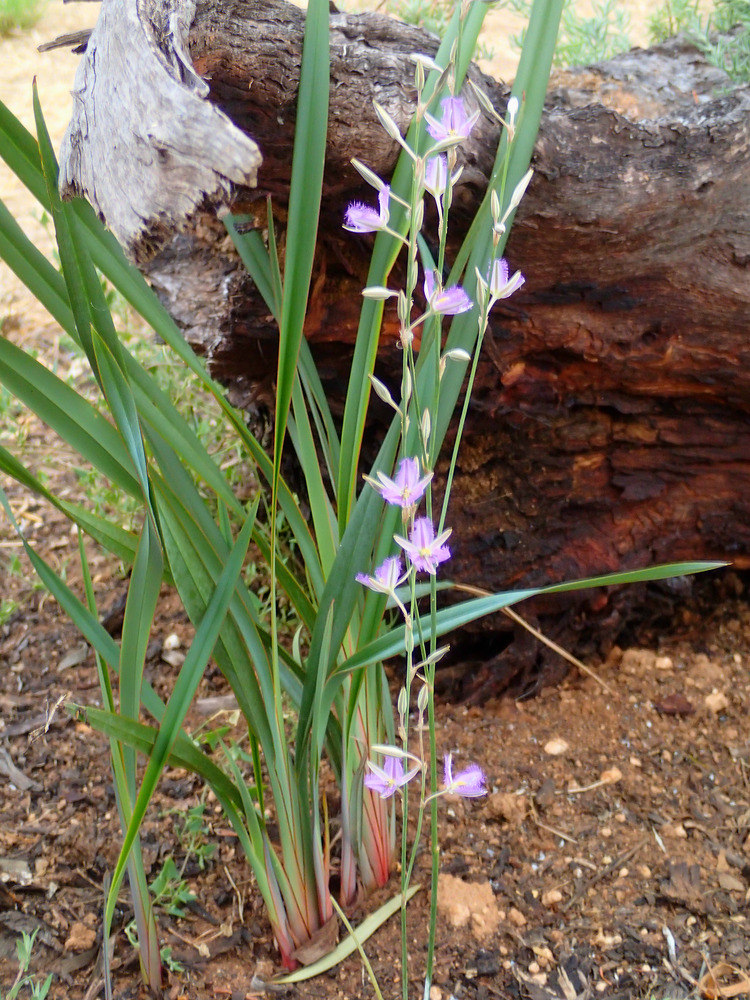
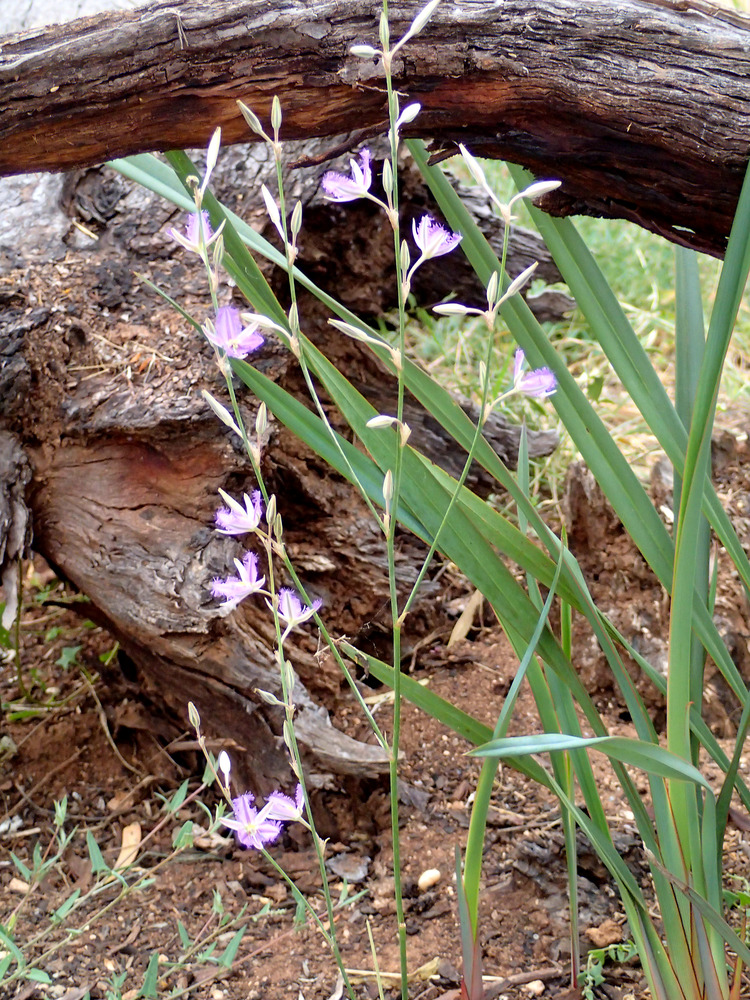
Proud of my fringe lilies I am. Fickle things about when their flowers open though.
straightened up.
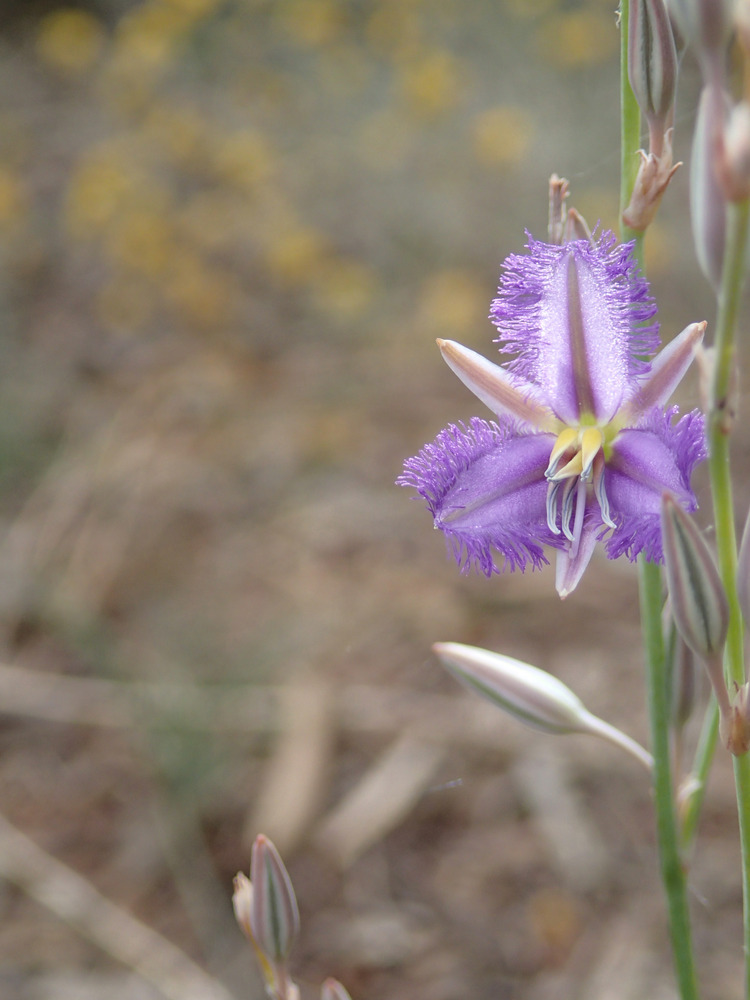
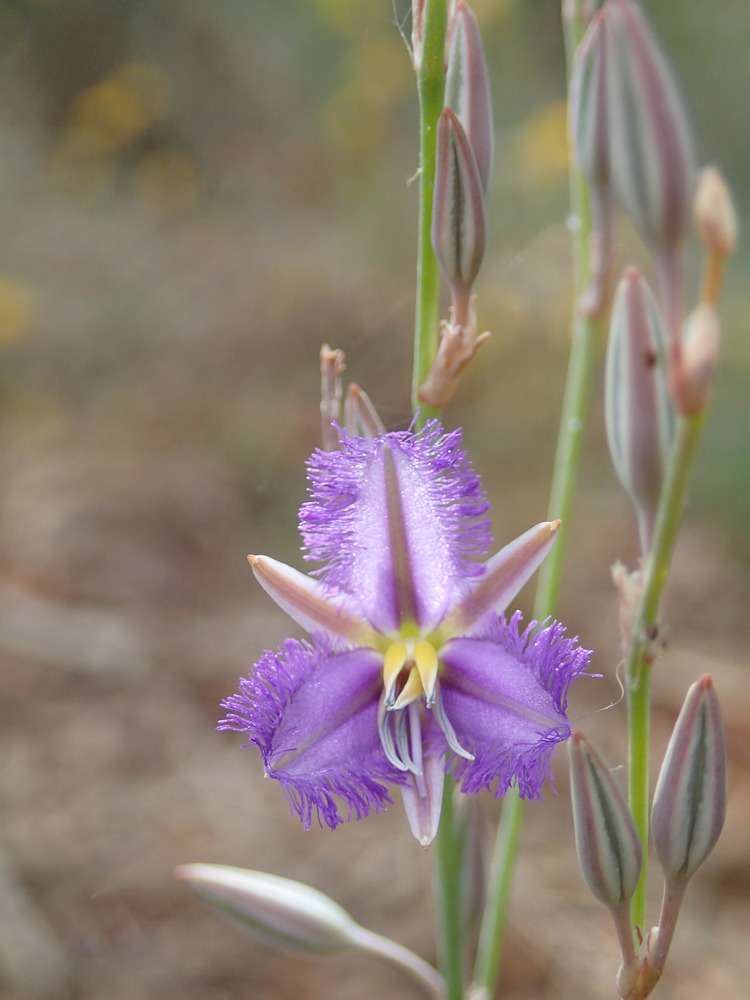
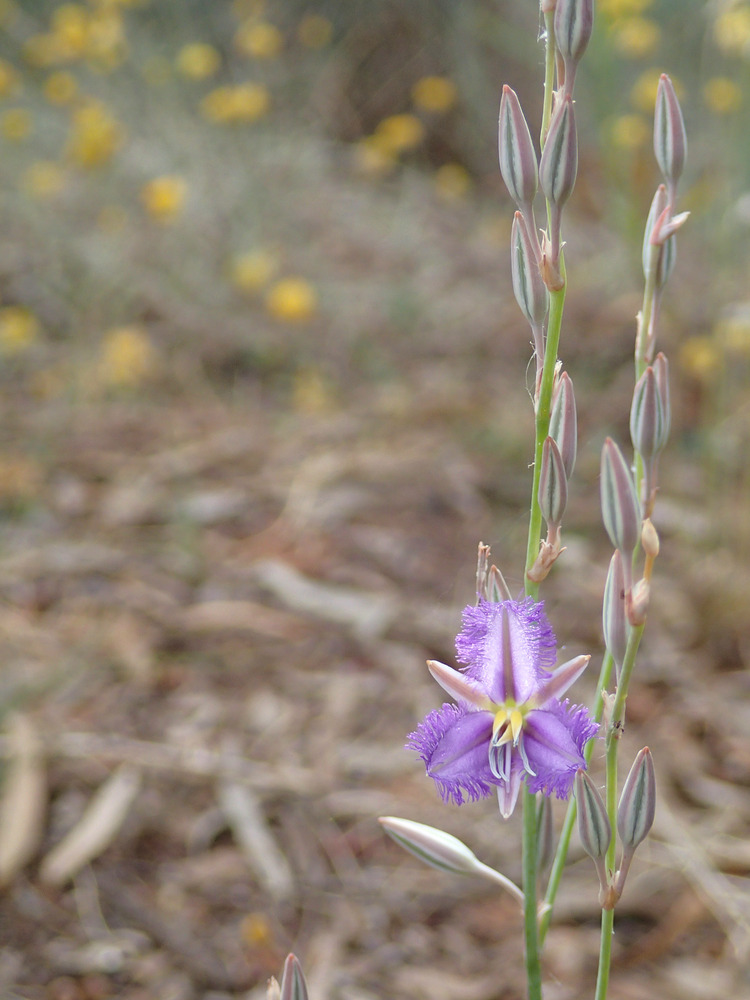
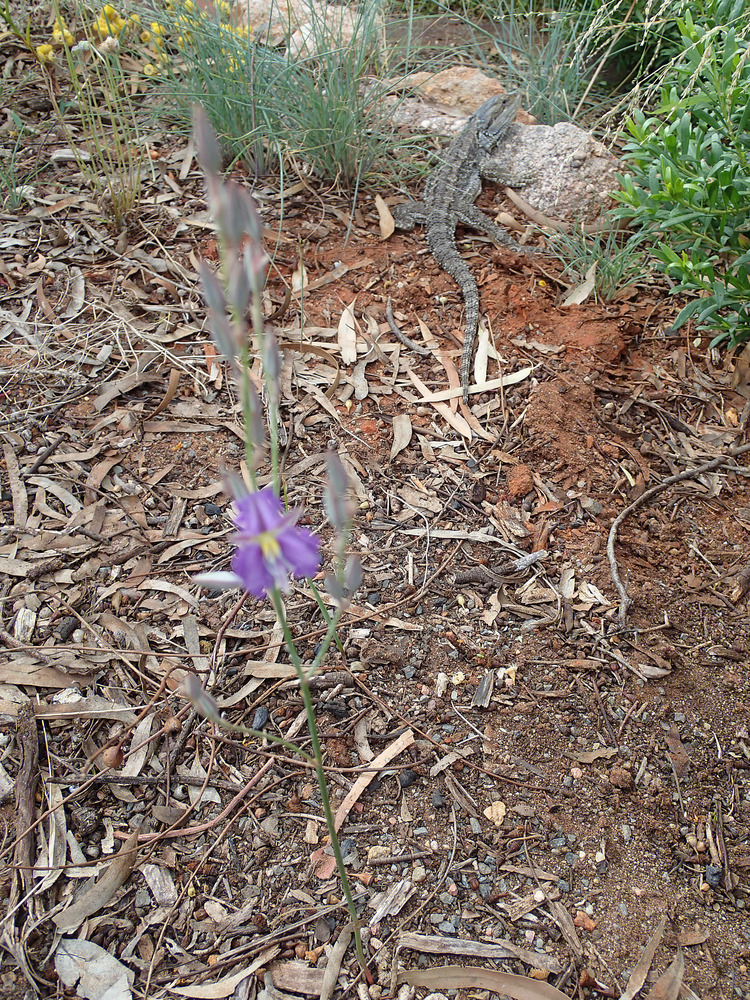
roughbarked said:
ms spock said:
roughbarked said:Could have tipped my fringe lily the right way up eh.
You were having a moment with your bearded dragon…
So you are excused…
I have several moments per day as I walk around the garden. There are several beardies in the backyard and more just outside the fence. I walked up the back earlier today walking faster to carry a watering can to some pots. Startled by a dashing beardie rushing across in front of me to hide under a mandarin tree rather than see me come u so quickly.
Cool!
We have a couple of Blue Tongues, they hiss impressively.
ms spock said:
roughbarked said:
ms spock said:You were having a moment with your bearded dragon…
So you are excused…
I have several moments per day as I walk around the garden. There are several beardies in the backyard and more just outside the fence. I walked up the back earlier today walking faster to carry a watering can to some pots. Startled by a dashing beardie rushing across in front of me to hide under a mandarin tree rather than see me come u so quickly.
Cool!
We have a couple of Blue Tongues, they hiss impressively.
I have them too.
roughbarked said:
straightened up.
Are these natives roughbarked?
ms spock said:
roughbarked said:
straightened up.
Are these natives roughbarked?
yep. Mallee Fringe lily. Thysanotus baueri.
roughbarked said:
ms spock said:
roughbarked said:
straightened up.
Are these natives roughbarked?
yep. Mallee Fringe lily. Thysanotus baueri.
Beautiful…
A bit of an arty question. Of these two images, which is the most interesting. Though I’m sure many would say, neither.
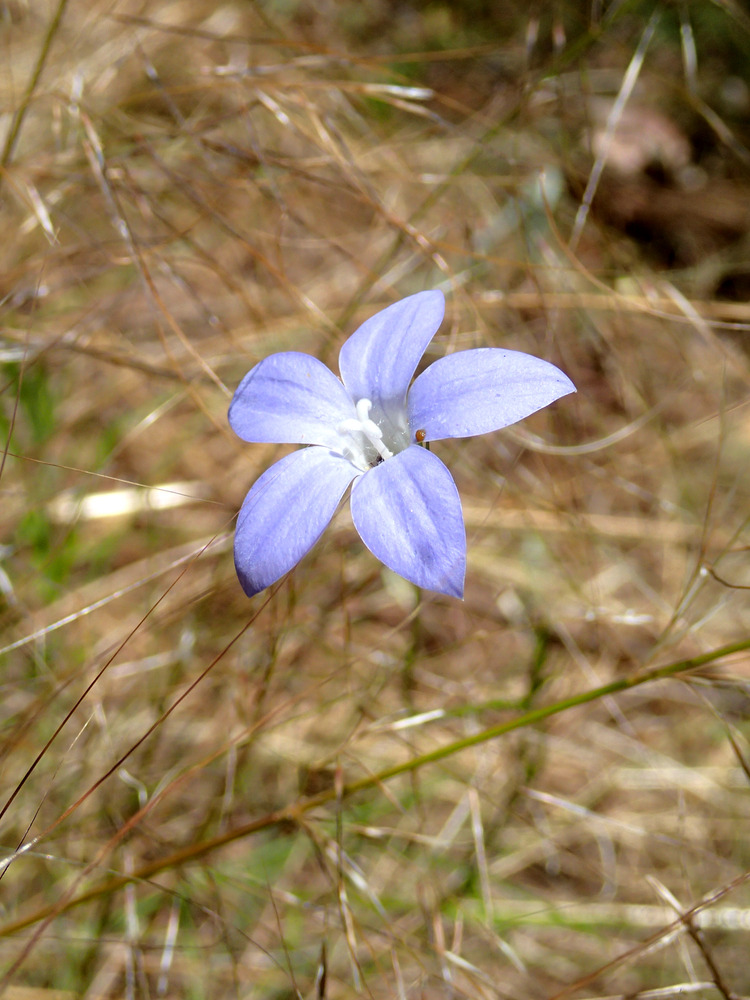
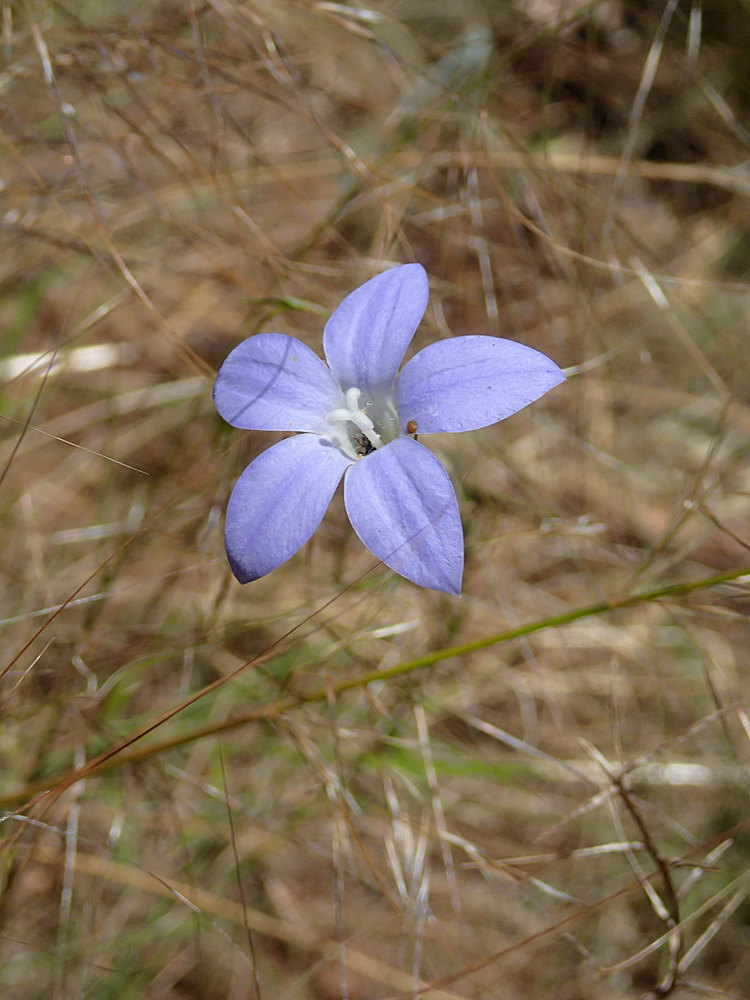
roughbarked said:
A bit of an arty question. Of these two images, which is the most interesting. Though I’m sure many would say, neither.

The one on the right as the stamen is more clearly visible.
Tamb said:
roughbarked said:
A bit of an arty question. Of these two images, which is the most interesting. Though I’m sure many would say, neither.

The one on the right as the stamen is more clearly visible.
Thanks for your input. :)
These grow in my garden for me. Brunonia and copper wire daisy.
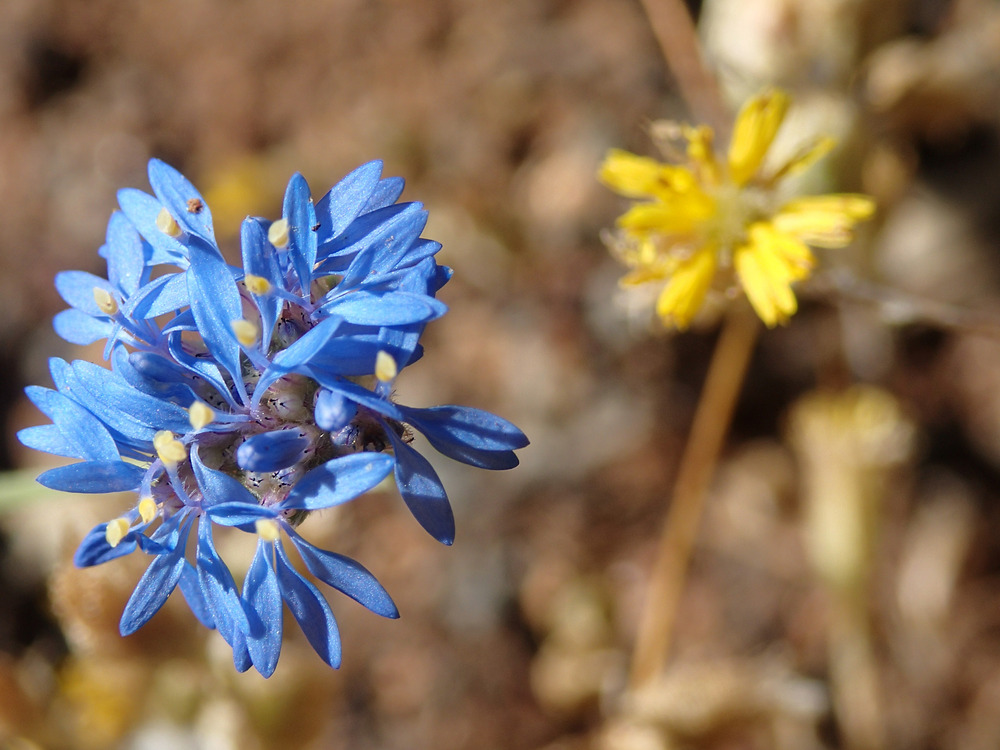

roughbarked said:
Beautiful!
Are these natives?
ms spock said:
roughbarked said:
Beautiful!
Are these natives?
Yes. Thysanotus baueri. Tall mallee fringe lily.
Daughter just asked me. What is this? Found at Innaburra Reserve just past Temora.
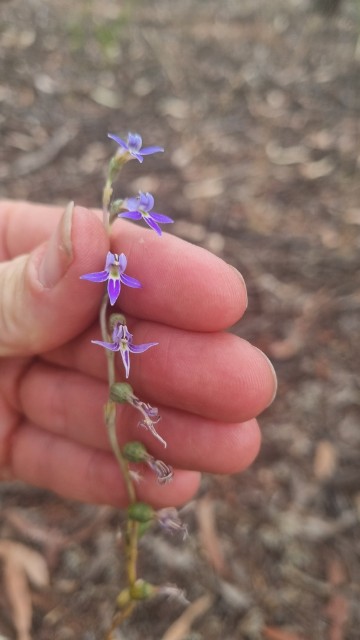
roughbarked said:
Daughter just asked me. What is this? Found at Innaburra Reserve just past Temora.
Orchid or Lobelia. Maybe.
Perhaps Lobelia gibbosa.
buffy said:
roughbarked said:
Daughter just asked me. What is this? Found at Innaburra Reserve just past Temora.
Orchid or Lobelia. Maybe.
Lobelia more likely.
buffy said:
Perhaps Lobelia gibbosa.
On my walk in the sunshine, saw that some fringe lilies were still pumping out flowers.
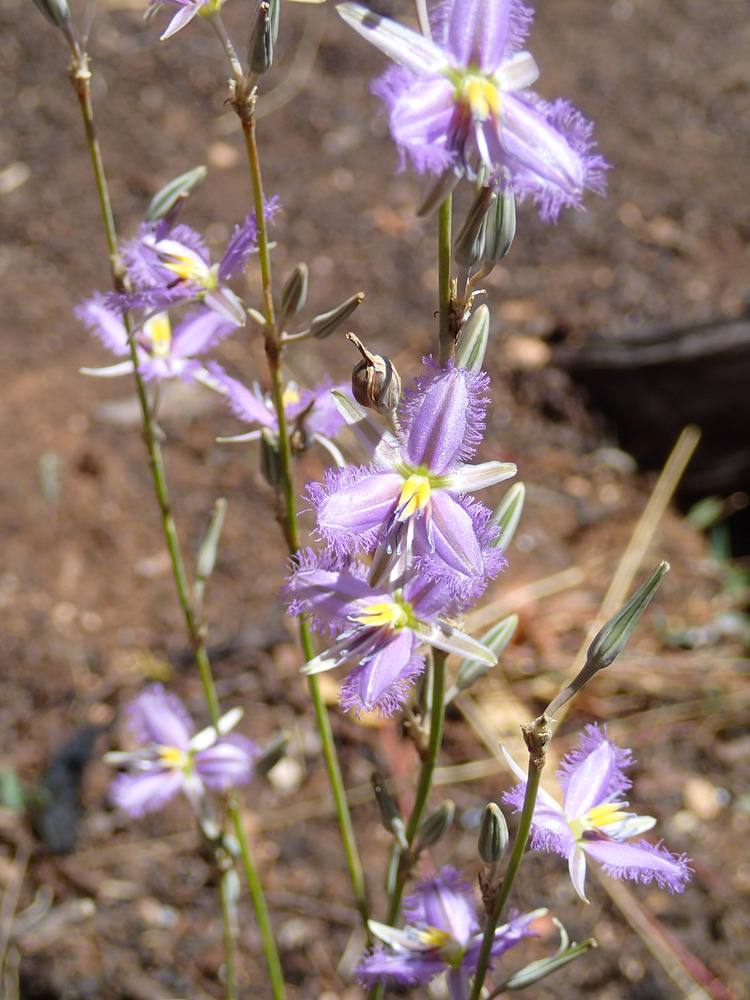

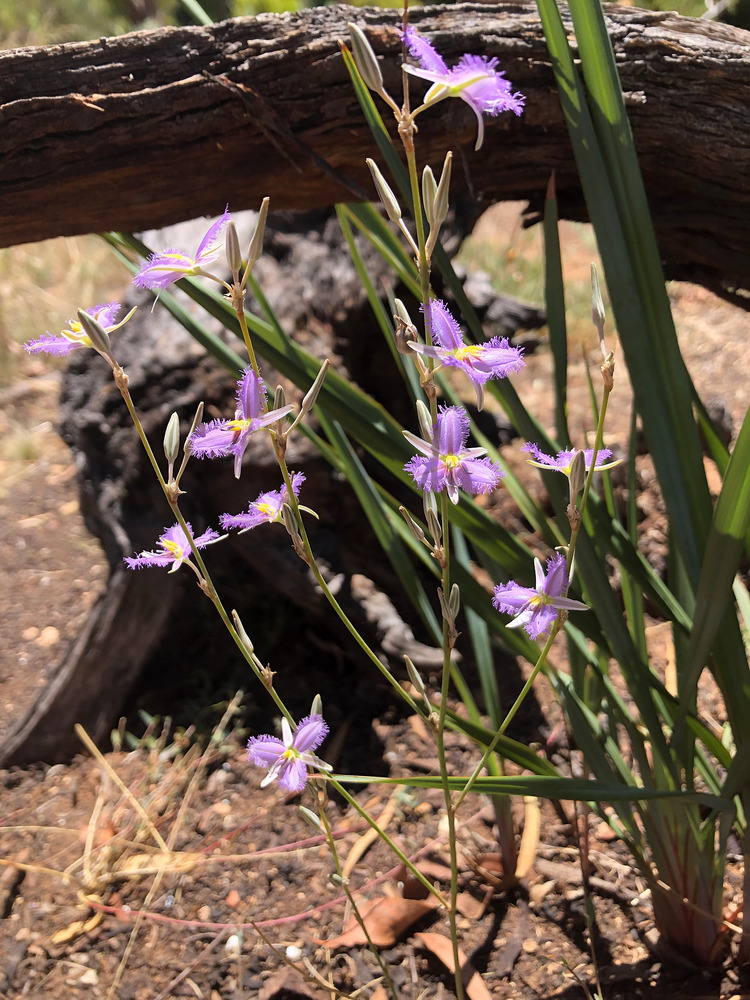
roughbarked said:
On my walk in the sunshine, saw that some fringe lilies were still pumping out flowers.
We have those here!
ms spock said:
roughbarked said:
On my walk in the sunshine, saw that some fringe lilies were still pumping out flowers.
We have those here!
Fringe lilies maybe but which species?
https://www.abc.net.au/news/2023-03-30/3d-printers-used-to-halt-erosion-with-biodegradable-structures/102155970
Australian researchers are testing biodegradable, 3D-printed structures to protect budding wetland species while slowing coastal erosion.

Eucalyptus erythrocorys against Acacia salicina.
roughbarked said:
Eucalyptus erythrocorys against Acacia salicina.


roughbarked said:
roughbarked said:
Eucalyptus erythrocorys against Acacia salicina.
Not a local native but it draws attention to this bit of man made bushland. So the locals can garner some respect for what I am doing.
Main tree is Eucalyptus campaspie.
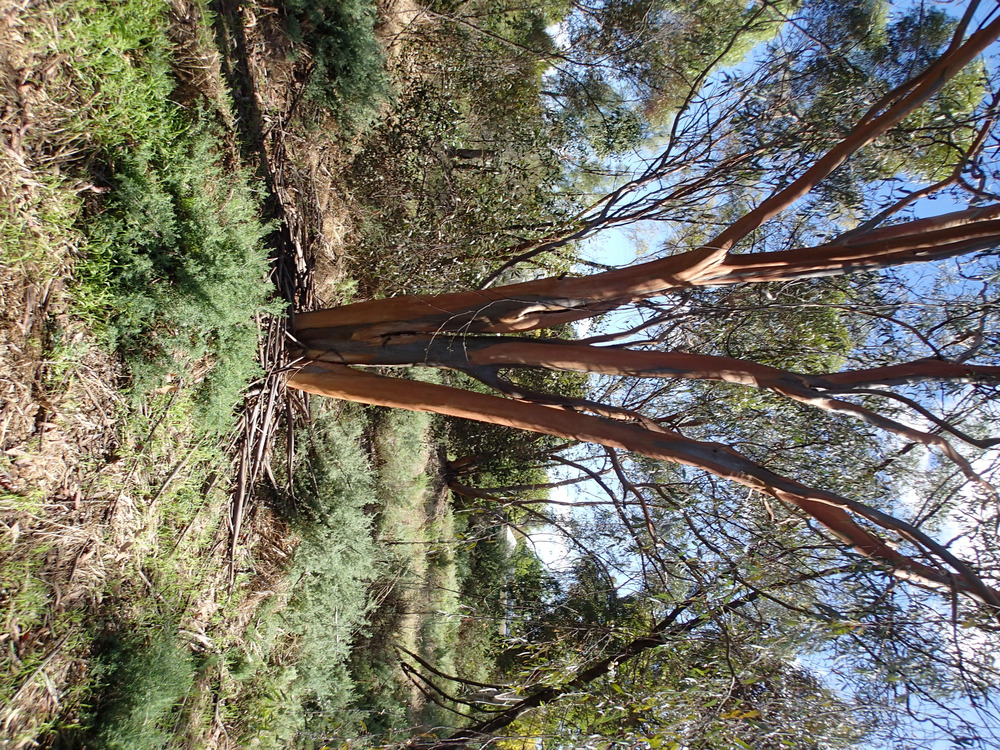
Ground flora is salbush and bluebush.
roughbarked said:
Main tree is Eucalyptus campaspie.

Ground flora is salbush and bluebush.
Bugger this site for that.

Apparently, Plants can ‘talk’ and scientists have recorded the sound they make as they die of thirst
roughbarked said:
Apparently, Plants can ‘talk’ and scientists have recorded the sound they make as they die of thirst
roughbarked said:
roughbarked said:
Apparently, Plants can ‘talk’ and scientists have recorded the sound they make as they die of thirst
I was expecting something a bit more mournful.
Bubblecar said:
roughbarked said:
roughbarked said:
Apparently, Plants can ‘talk’ and scientists have recorded the sound they make as they die of thirst
I was expecting something a bit more mournful.
While this remains unconfirmed, the team’s findings suggest that “cavitation” may be at least partially responsible for the sounds. Cavitation is the process through which air bubbles expand and burst inside a plant’s water-conducting tissue, or “xylem”. This explanation makes sense if we consider that drought stress and cutting will both alter the water dynamics in a plant stem.
roughbarked said:
Bubblecar said:
roughbarked said:I was expecting something a bit more mournful.
While this remains unconfirmed, the team’s findings suggest that “cavitation” may be at least partially responsible for the sounds. Cavitation is the process through which air bubbles expand and burst inside a plant’s water-conducting tissue, or “xylem”. This explanation makes sense if we consider that drought stress and cutting will both alter the water dynamics in a plant stem.
I have now read the article and listened to the sounds.
When I was at uni, a botany professor played us similar sounds, recorded from a banana plant. I don’t remember every detail, but he claimed it was cavitation above sieve plates in the zylem, when the plant was water-stressed. By breaking the water column at the sieve plate, it allowed the plant to recover from the stress.
Michael V said:
roughbarked said:
Bubblecar said:I was expecting something a bit more mournful.
While this remains unconfirmed, the team’s findings suggest that “cavitation” may be at least partially responsible for the sounds. Cavitation is the process through which air bubbles expand and burst inside a plant’s water-conducting tissue, or “xylem”. This explanation makes sense if we consider that drought stress and cutting will both alter the water dynamics in a plant stem.
I have now read the article and listened to the sounds.
When I was at uni, a botany professor played us similar sounds, recorded from a banana plant. I don’t remember every detail, but he claimed it was cavitation above sieve plates in the zylem, when the plant was water-stressed. By breaking the water column at the sieve plate, it allowed the plant to recover from the stress.
Nods.
This one is a bit arty.
Caladenia dilatata.


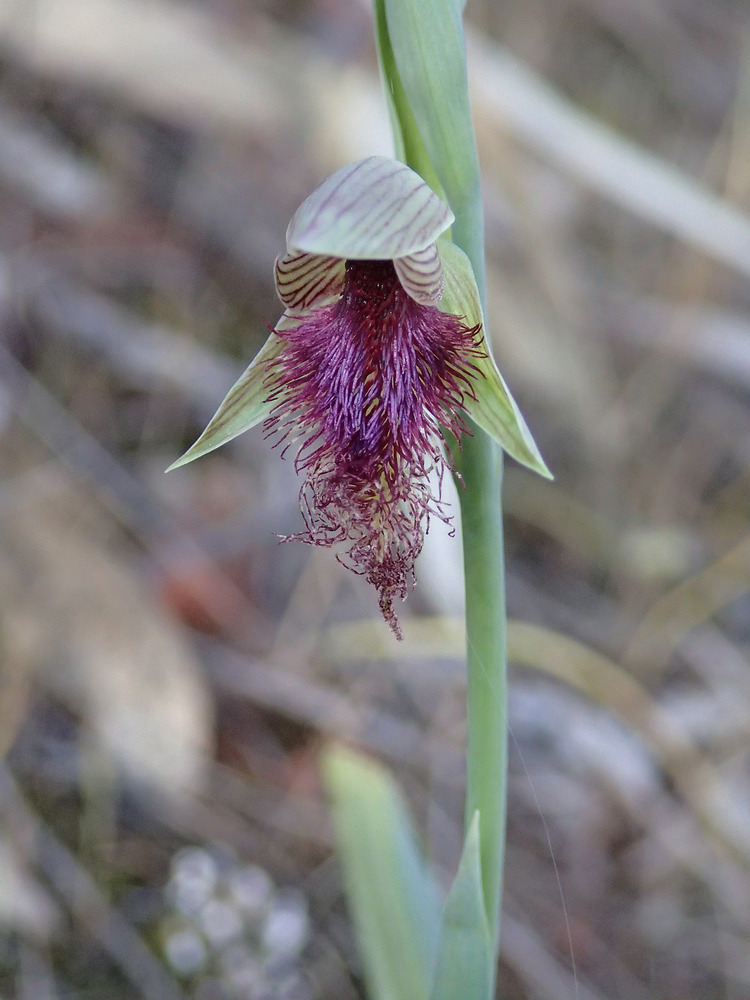
They are small this year. About a third of the size they usually get to.
roughbarked said:

They are small this year. About a third of the size they usually get to.
I’ve never seen beard orchids and I don’t know the NSW ones anyway. Are they the red one or the purple one or something else?
buffy said:
roughbarked said:

They are small this year. About a third of the size they usually get to.
I’ve never seen beard orchids and I don’t know the NSW ones anyway. Are they the red one or the purple one or something else?
Purple. Calochilus robertsonii.
Thanks for bringing this thread up again. I’m on the lappy for a few more days and haven’t got all my bookmarks on here. This morning when I discovered the wildflower meadow at the cemetery had been mown, I went down the highway a bit to look for the Golden Moth Orchids down there. Found some. I’m sure there will be more, but here are some of today’s ones. Mostly there were 2 flowers per stem, some with only one, but I also found some with three. I’m putting these as Diuris chryseopsis, although at an outside chance they might be D. behrii.
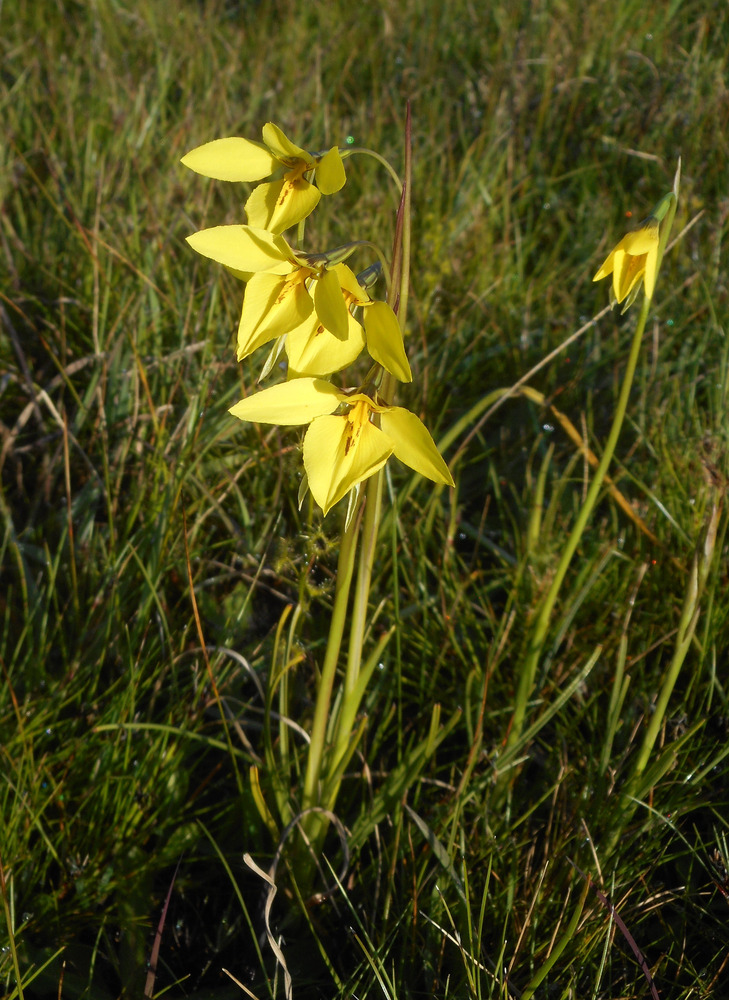 ………
………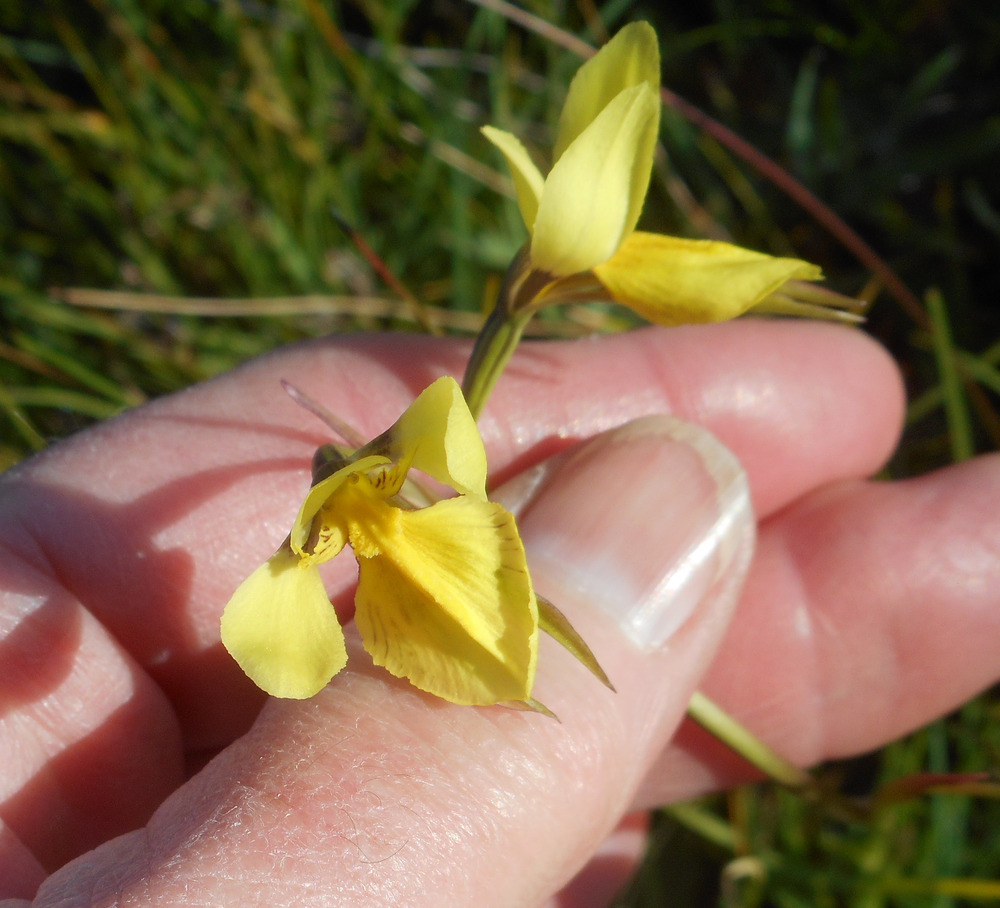
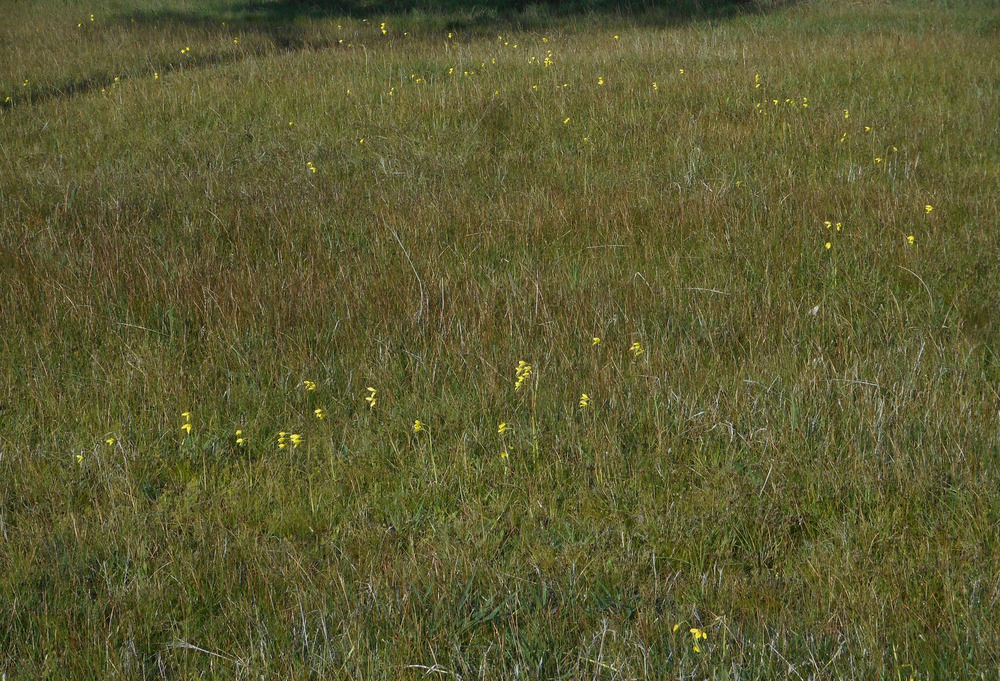
The grassland sundews are budding up too (Drosera hookeri)
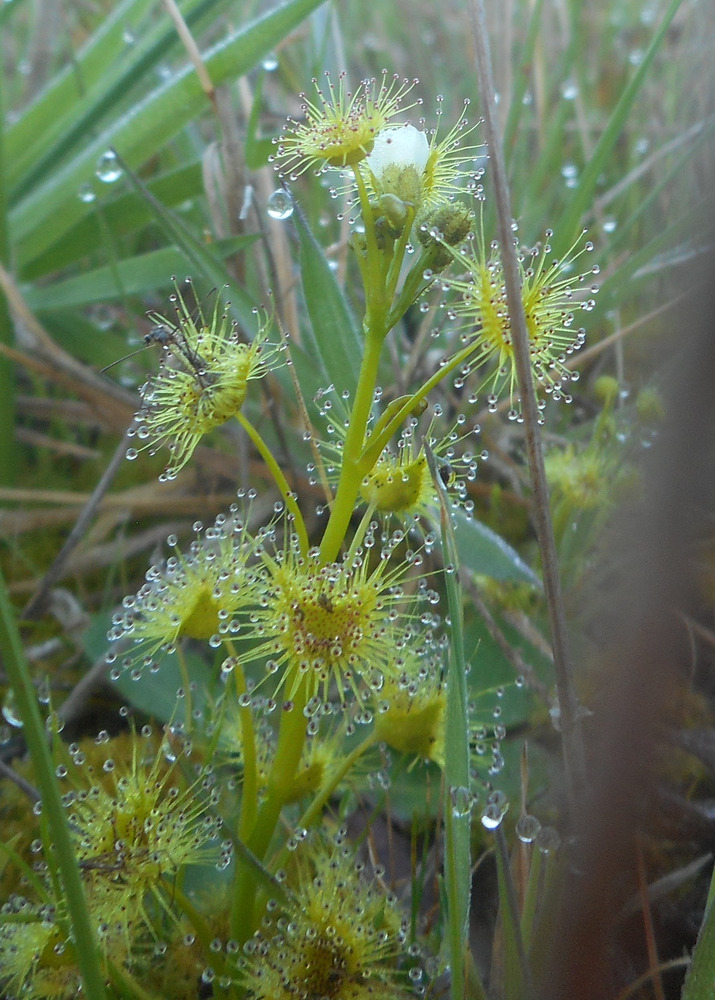 ………
………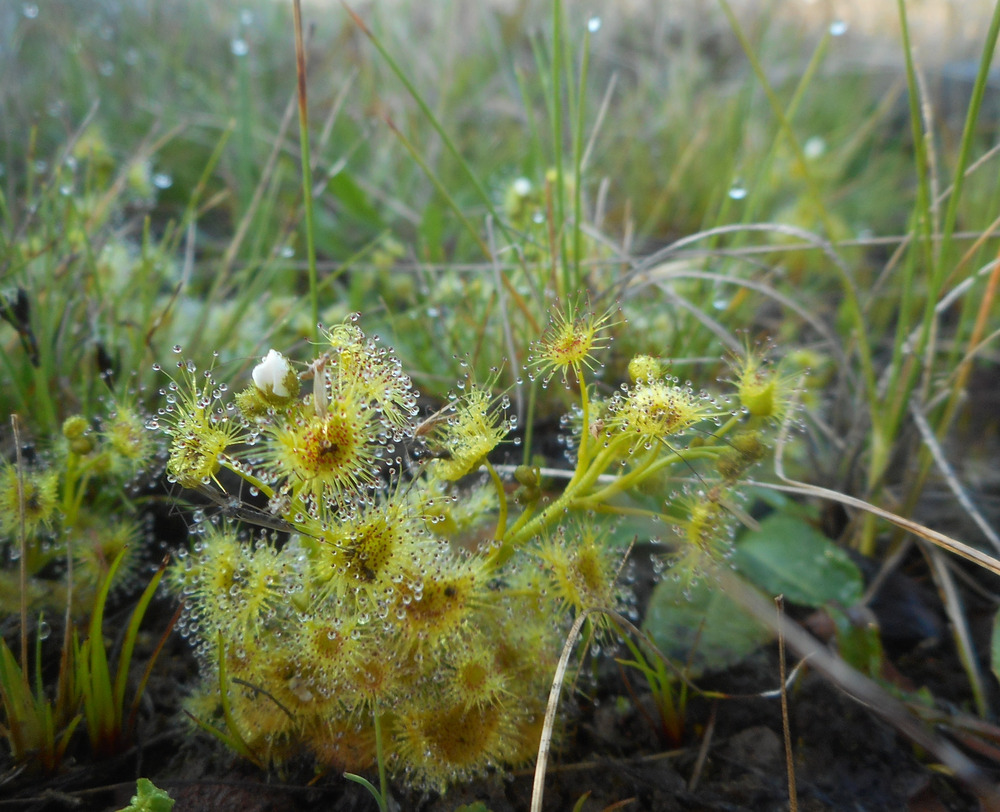
buffy said:
They look remarkably like soursobs, which you’ve been trying to eradicate.
Bubblecar said:
buffy said:
They look remarkably like soursobs, which you’ve been trying to eradicate.
Not really. The soursobs are a trumpet flower, this is a real orchid design, and the leaves of this orchid are strap (grasslike) while the soursobs are sort of clover leaves.
buffy said:
Thanks for bringing this thread up again. I’m on the lappy for a few more days and haven’t got all my bookmarks on here. This morning when I discovered the wildflower meadow at the cemetery had been mown, I went down the highway a bit to look for the Golden Moth Orchids down there. Found some. I’m sure there will be more, but here are some of today’s ones. Mostly there were 2 flowers per stem, some with only one, but I also found some with three. I’m putting these as Diuris chryseopsis, although at an outside chance they might be D. behrii.
………
The grassland sundews are budding up too (Drosera hookeri)
………
No Drosera here this season. too effing dry.
buffy said:
Bubblecar said:
buffy said:
They look remarkably like soursobs, which you’ve been trying to eradicate.
Not really. The soursobs are a trumpet flower, this is a real orchid design, and the leaves of this orchid are strap (grasslike) while the soursobs are sort of clover leaves.
True enough.
In my childhood we’d eat the soursobs, probably a good source of something or other.
Bubblecar said:
buffy said:
They look remarkably like soursobs, which you’ve been trying to eradicate.
Sooursobs have those little bulbs. Mongrel things. FiL said the best way was to hit them with strong Urea.
buffy said:
Bubblecar said:
buffy said:
They look remarkably like soursobs, which you’ve been trying to eradicate.
Not really. The soursobs are a trumpet flower, this is a real orchid design, and the leaves of this orchid are strap (grasslike) while the soursobs are sort of clover leaves.
This is true.
roughbarked said:
buffy said:
Thanks for bringing this thread up again. I’m on the lappy for a few more days and haven’t got all my bookmarks on here. This morning when I discovered the wildflower meadow at the cemetery had been mown, I went down the highway a bit to look for the Golden Moth Orchids down there. Found some. I’m sure there will be more, but here are some of today’s ones. Mostly there were 2 flowers per stem, some with only one, but I also found some with three. I’m putting these as Diuris chryseopsis, although at an outside chance they might be D. behrii.
………
The grassland sundews are budding up too (Drosera hookeri)
………
No Drosera here this season. too effing dry.
It’s just the beginning of the Drosera. The D. hookeri are only just starting to flower. D. auriculata have been visible for a month or so, but just starting to flower. I’ve also seen one D. planchonii in flower. That D. hookeri likes it wet, so it’s been quite prolific in the last two seasons, but scarce before that. Although, I wasn’t obsessively looking at plants a couple of years back, I’ve really ramped that up more recently.
Bubblecar said:
buffy said:
Bubblecar said:They look remarkably like soursobs, which you’ve been trying to eradicate.
Not really. The soursobs are a trumpet flower, this is a real orchid design, and the leaves of this orchid are strap (grasslike) while the soursobs are sort of clover leaves.
True enough.
In my childhood we’d eat the soursobs, probably a good source of something or other.
My sibs et soursobs, I never liked them.
Bubblecar said:
buffy said:”Although the plant is considered toxic to animals (it contains oxalic acid), “its flowering stems are occasionally chewed and sucked by children for the sour taste.” Toxicity is a problem of prolonged consumption.”Bubblecar said:True enough.They look remarkably like soursobs, which you’ve been trying to eradicate.Not really. The soursobs are a trumpet flower, this is a real orchid design, and the leaves of this orchid are strap (grasslike) while the soursobs are sort of clover leaves.
In my childhood we’d eat the soursobs, probably a good source of something or other.
roughbarked said:
buffy said:
roughbarked said:

They are small this year. About a third of the size they usually get to.
I’ve never seen beard orchids and I don’t know the NSW ones anyway. Are they the red one or the purple one or something else?
Purple. Calochilus robertsonii.
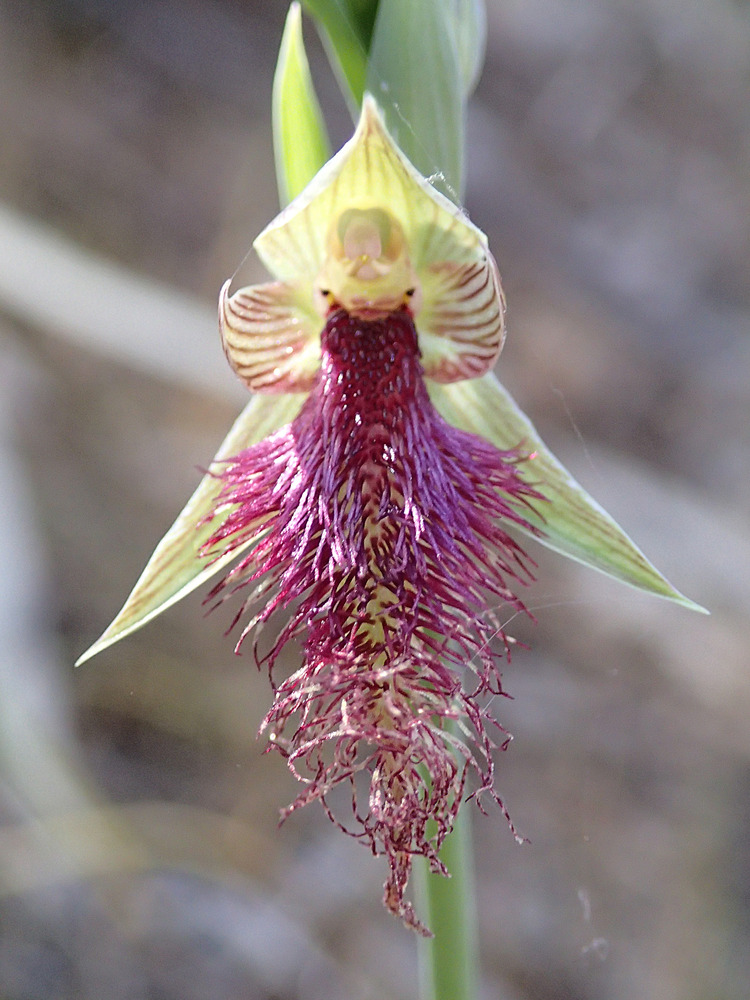
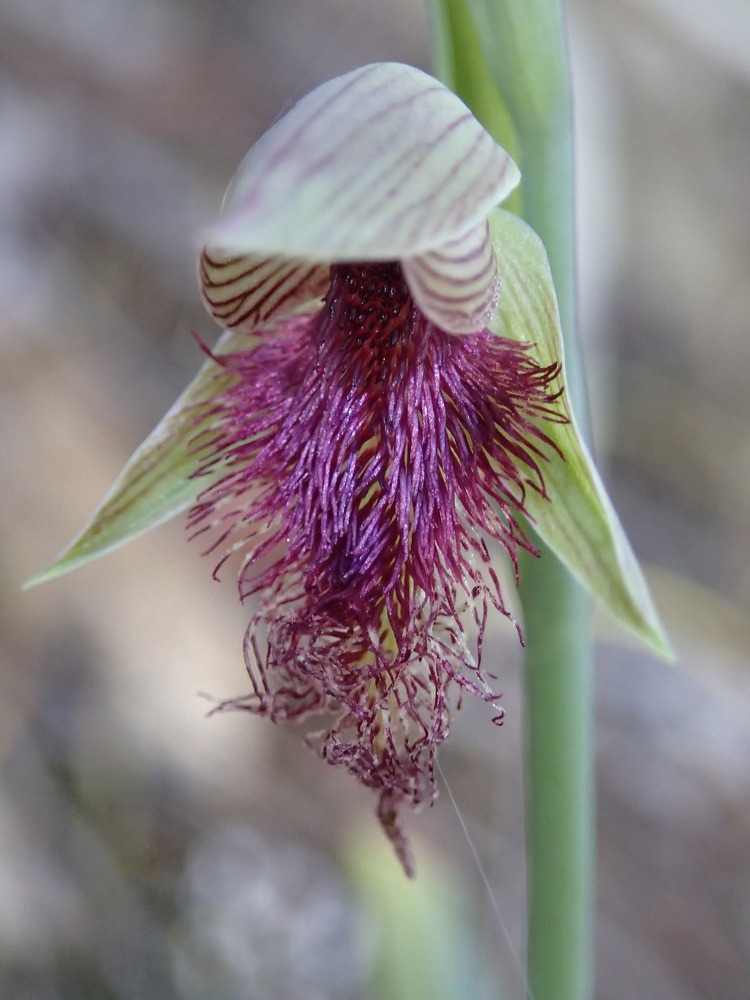
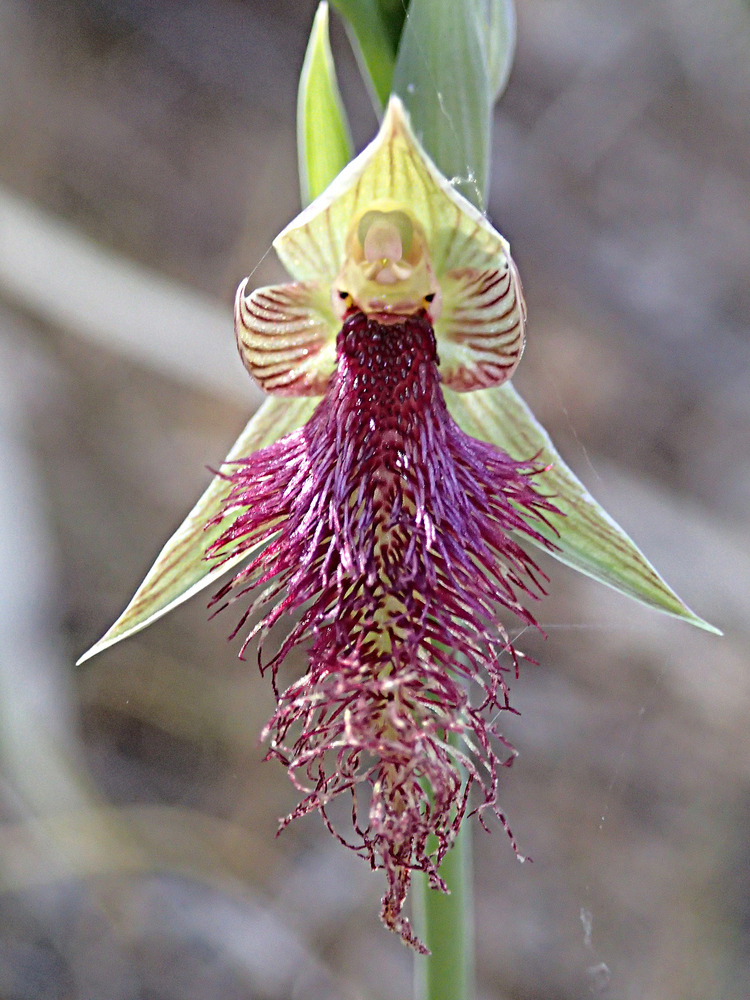
This season I’ve found seven plants and two had the spikes eaten. Some are still to flower.
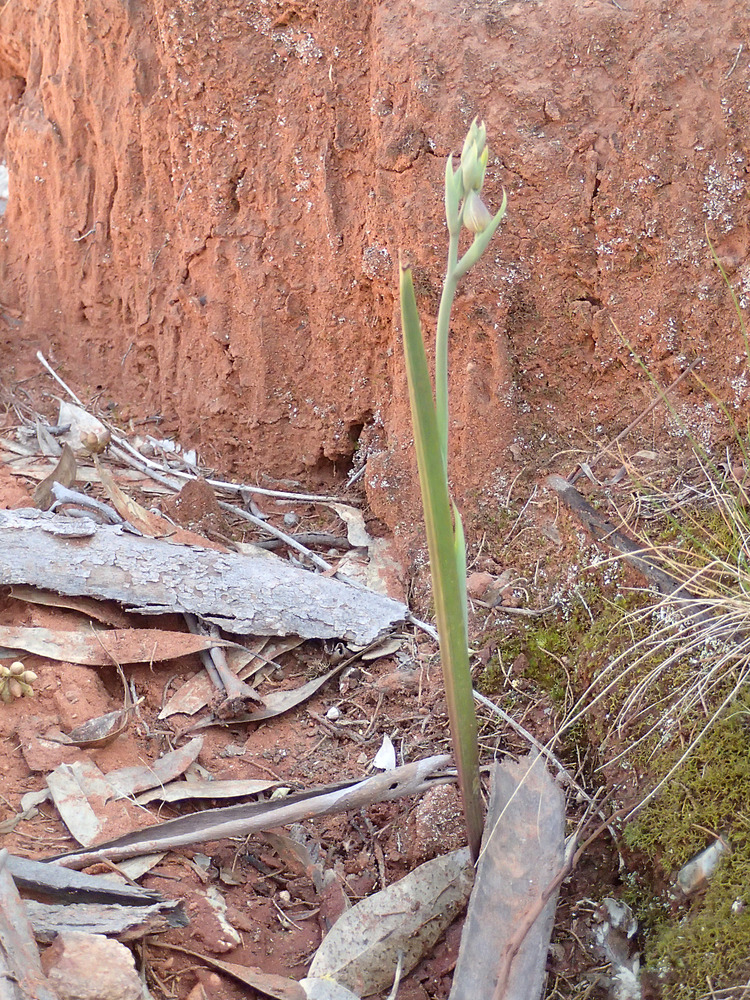
buffy said:
roughbarked said:
buffy said:
Thanks for bringing this thread up again. I’m on the lappy for a few more days and haven’t got all my bookmarks on here. This morning when I discovered the wildflower meadow at the cemetery had been mown, I went down the highway a bit to look for the Golden Moth Orchids down there. Found some. I’m sure there will be more, but here are some of today’s ones. Mostly there were 2 flowers per stem, some with only one, but I also found some with three. I’m putting these as Diuris chryseopsis, although at an outside chance they might be D. behrii.
………
The grassland sundews are budding up too (Drosera hookeri)
………
No Drosera here this season. too effing dry.
It’s just the beginning of the Drosera. The D. hookeri are only just starting to flower. D. auriculata have been visible for a month or so, but just starting to flower. I’ve also seen one D. planchonii in flower. That D. hookeri likes it wet, so it’s been quite prolific in the last two seasons, but scarce before that. Although, I wasn’t obsessively looking at plants a couple of years back, I’ve really ramped that up more recently.
ee what retirement gives you? Time you never had to waste before.
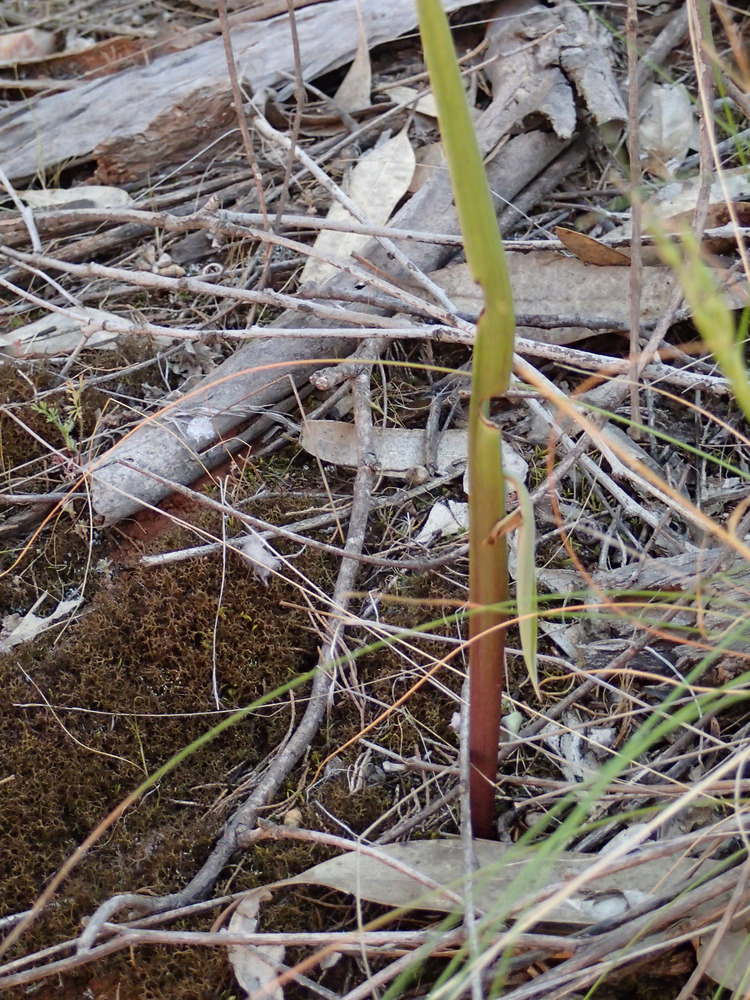
something has nibbled on the flower spike.
OCDC said:
Bubblecar said:buffy said:”Although the plant is considered toxic to animals (it contains oxalic acid), “its flowering stems are occasionally chewed and sucked by children for the sour taste.” Toxicity is a problem of prolonged consumption.”Not really. The soursobs are a trumpet flower, this is a real orchid design, and the leaves of this orchid are strap (grasslike) while the soursobs are sort of clover leaves.True enough.
In my childhood we’d eat the soursobs, probably a good source of something or other.
Good source of kidney stones.
Bubblecar said:
OCDC said:
Bubblecar said:True enough.”Although the plant is considered toxic to animals (it contains oxalic acid), “its flowering stems are occasionally chewed and sucked by children for the sour taste.” Toxicity is a problem of prolonged consumption.”In my childhood we’d eat the soursobs, probably a good source of something or other.
Good source of kidney stones.
I nibbled on lots of flowers but not those ones.
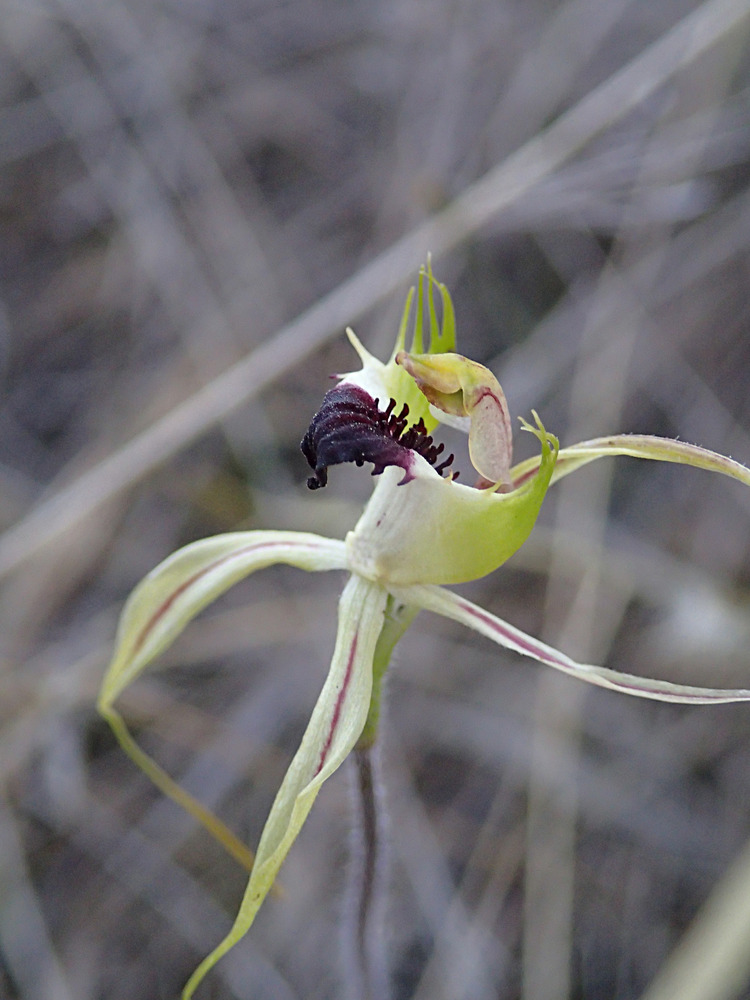
There’s still some of these green comb spiders,
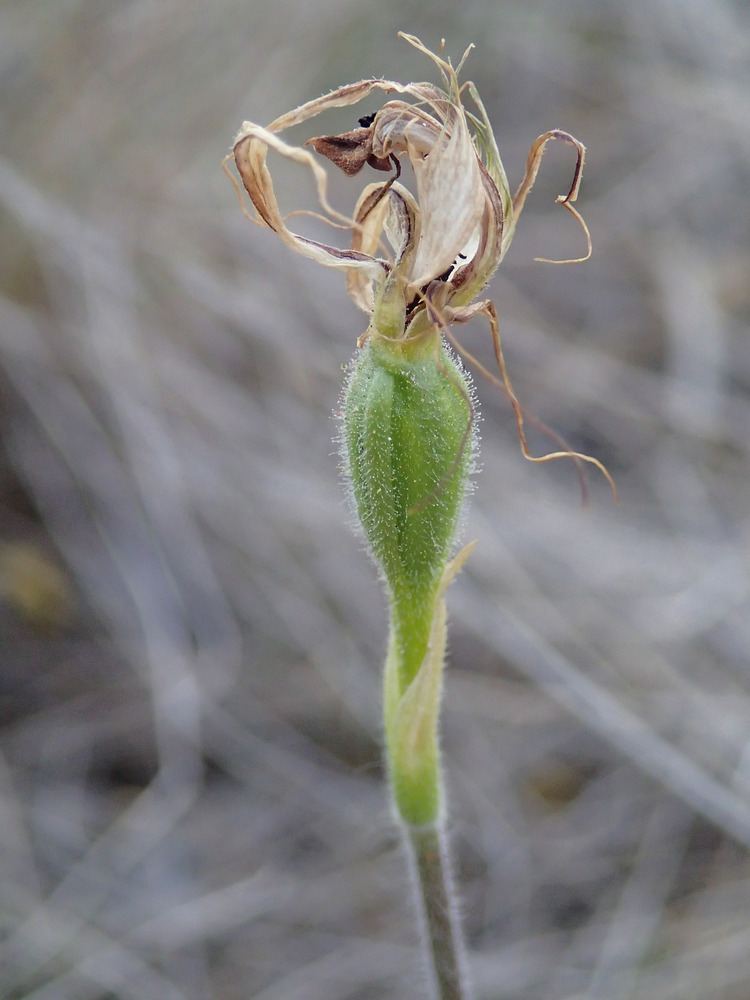 though most are going to seed.
though most are going to seed.
We are only just starting our wildflower season. We do peak flowers in October and November.
This is the oddly rare yellow form which nobody has identified yet. Gone to seed, so something has pollinated it.
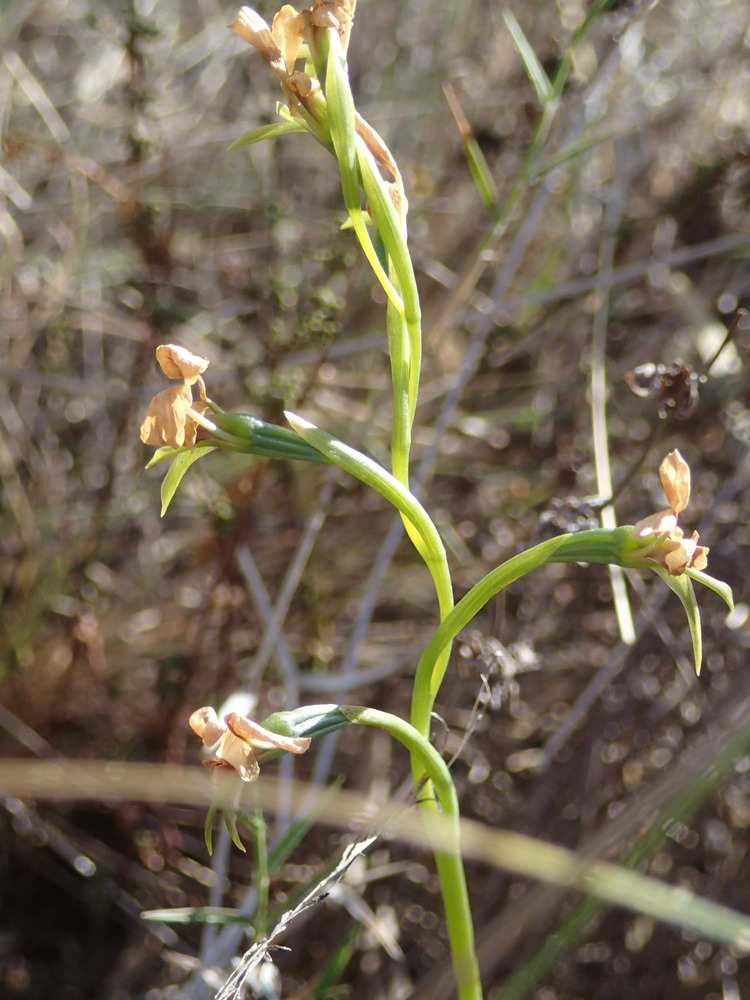
buffy said:
We are only just starting our wildflower season. We do peak flowers in October and November.
The Grevillea floribunda is floribundering.
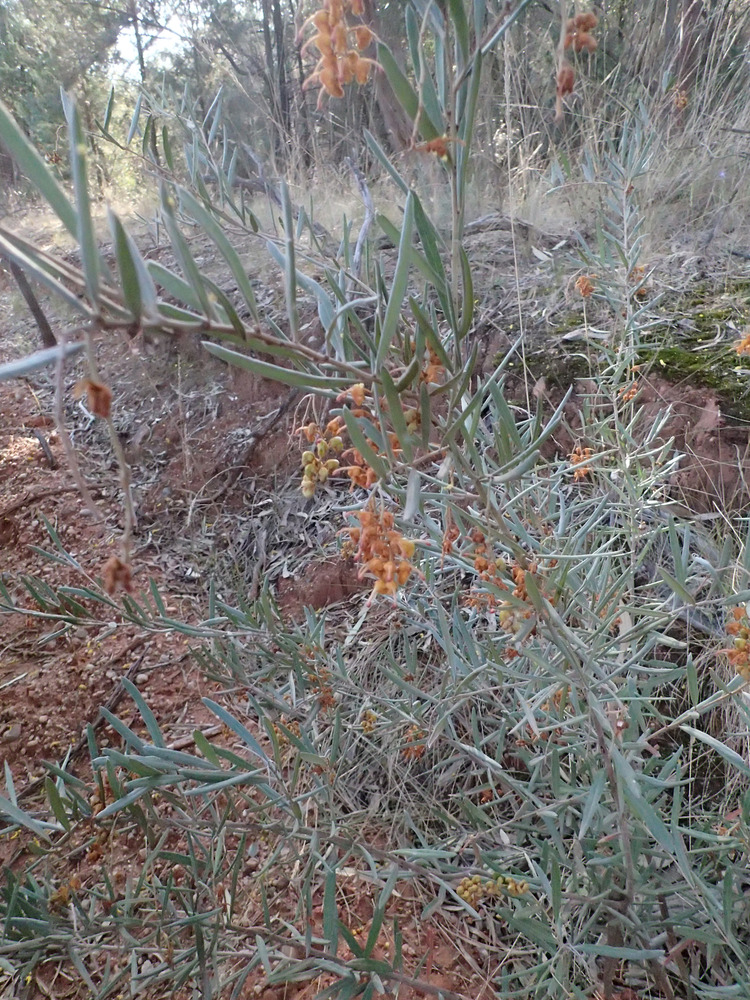
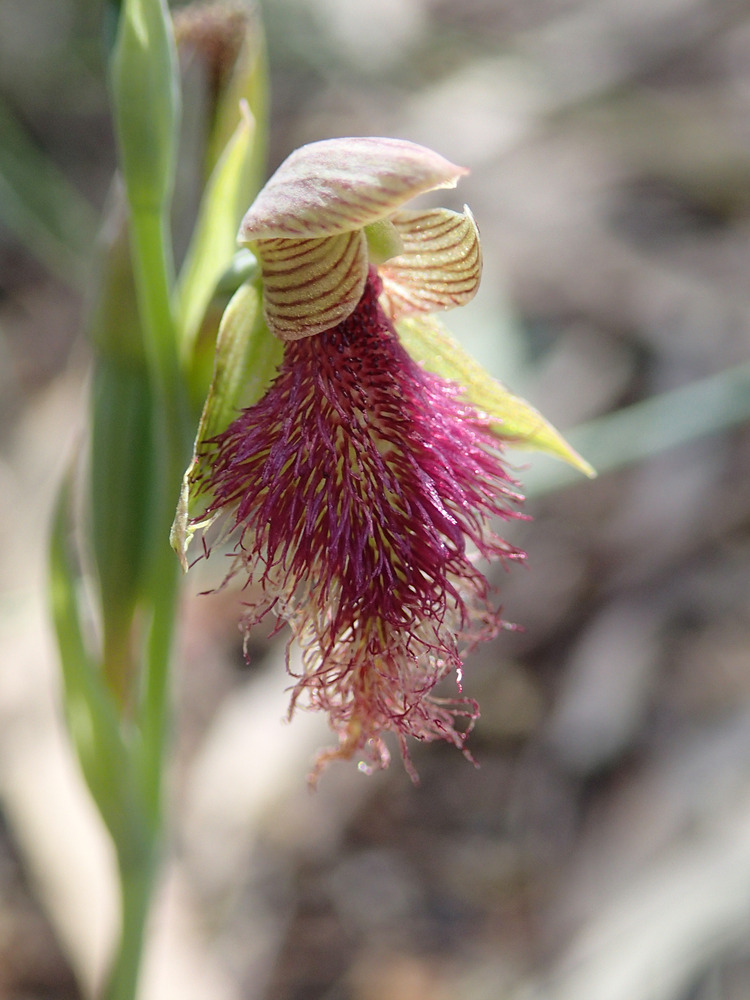
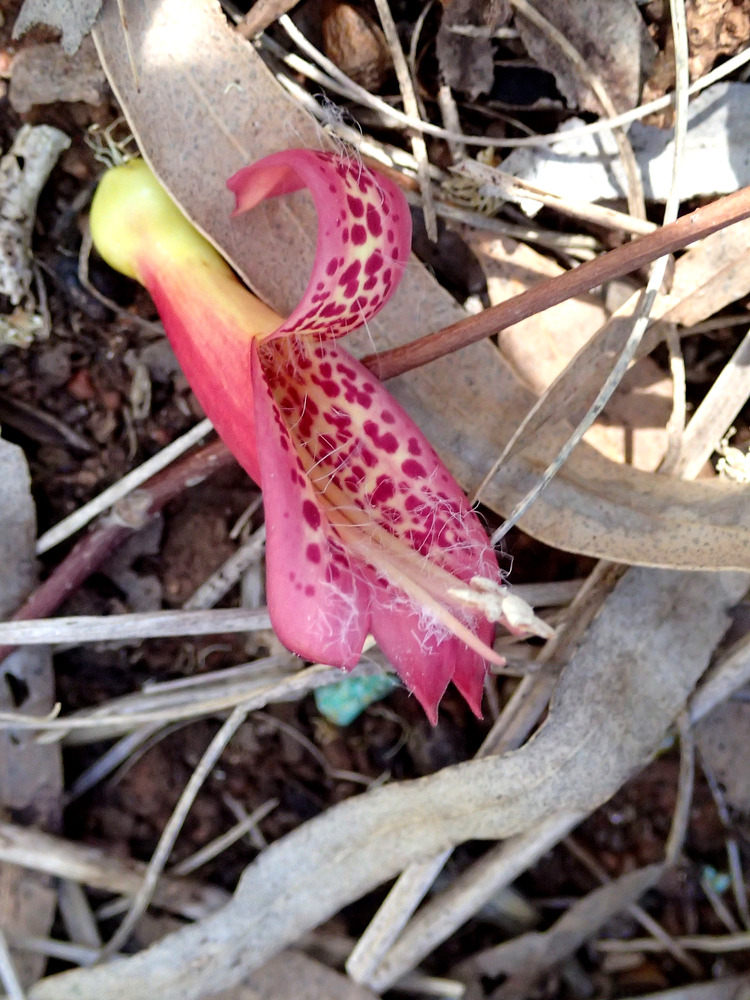
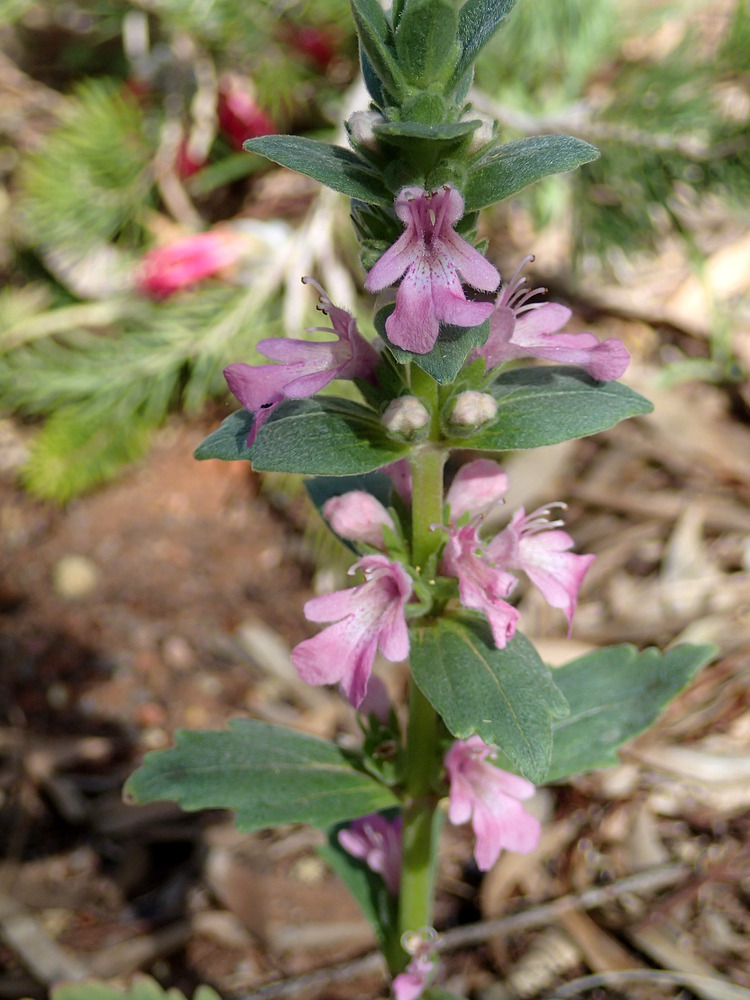
This orchid is classed as a lithophyte. So I filled a couple of old air filters off the Triton with smal rocks and walnut shells. The frost burned them and Mrs rb said, “well that didn’t work”.
Now I have new pseudobulbs growing on both of them. I hardly ever water them. The water runs straight through anyway.
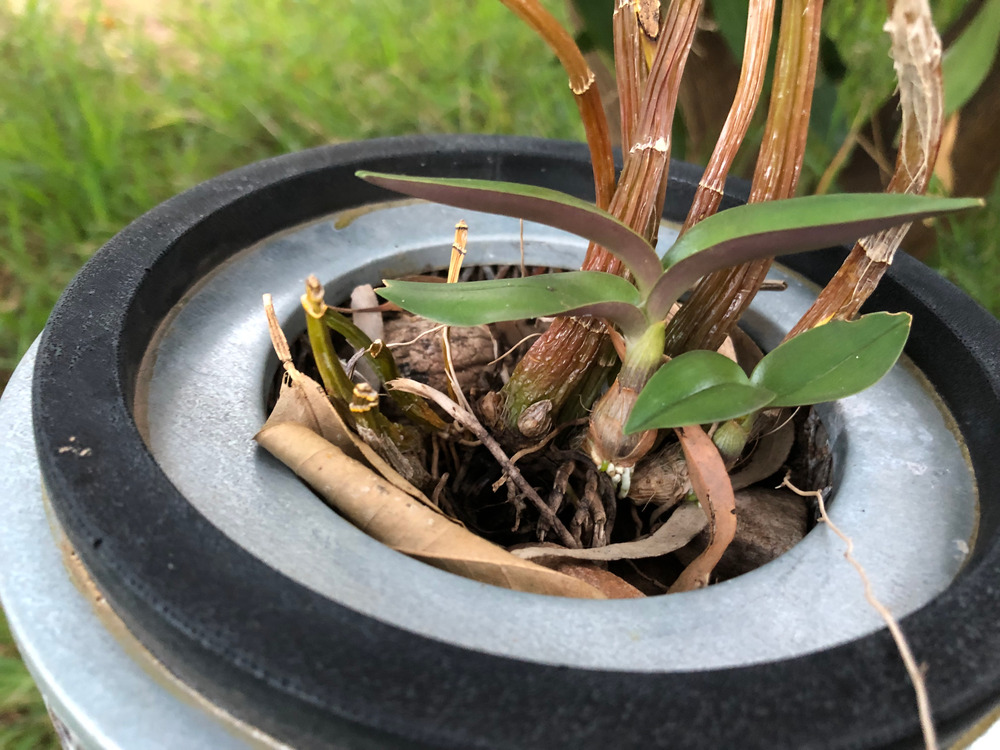
They have been shy this season but some were out today.

roughbarked said:
They have been shy this season but some were out today.
I’ve forgotten which one you have. We had a big, short flush of Thysanotus about 3 weeks ago. I am trying to find out how to reliably tell T. tuberosus from T. racemoides because we could have both.
This is a mistletoe flower that I’d normally associate with wire leaf mistletoe.
However, it isn’t wire leaf mistletoe and I think it may be new to my area. For I don’t think it is in Plants of Western NSW.


buffy said:
roughbarked said:
They have been shy this season but some were out today.
I’ve forgotten which one you have. We had a big, short flush of Thysanotus about 3 weeks ago. I am trying to find out how to reliably tell T. tuberosus from T. racemoides because we could have both.
https://plantnet.rbgsyd.nsw.gov.au/cgi-bin/NSWfl.pl?page=nswfl&lvl=sp&name=Thysanotus~baueri Otherwise known as Mallee Fringe Lily or in Wiradjuri, durumulin *(I don’t know how to spell it) means “standing on one leg”.
roughbarked said:
This is a mistletoe flower that I’d normally associate with wire leaf mistletoe.However, it isn’t wire leaf mistletoe and I think it may be new to my area. For I don’t think it is in Plants of Western NSW.
Goes to show how my memory slips up.
I both have recorded it here before and it is in Plants of Western NSW.
Though PlantNet doesn’t have it with either the old or the new spelling.
Amyema miraculosum or miraculosa. Fleshy leafed mistletoe.
On my Flickr in 2011. https://www.flickr.com/photos/roughbarked/5362782869/in/album-72157624231477526/
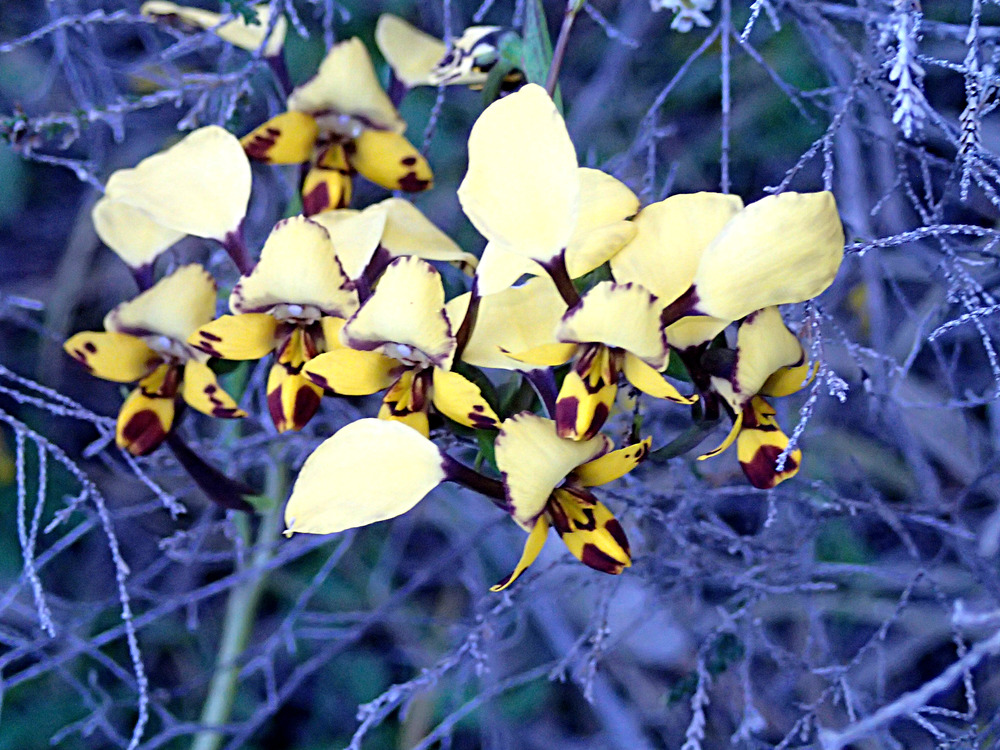
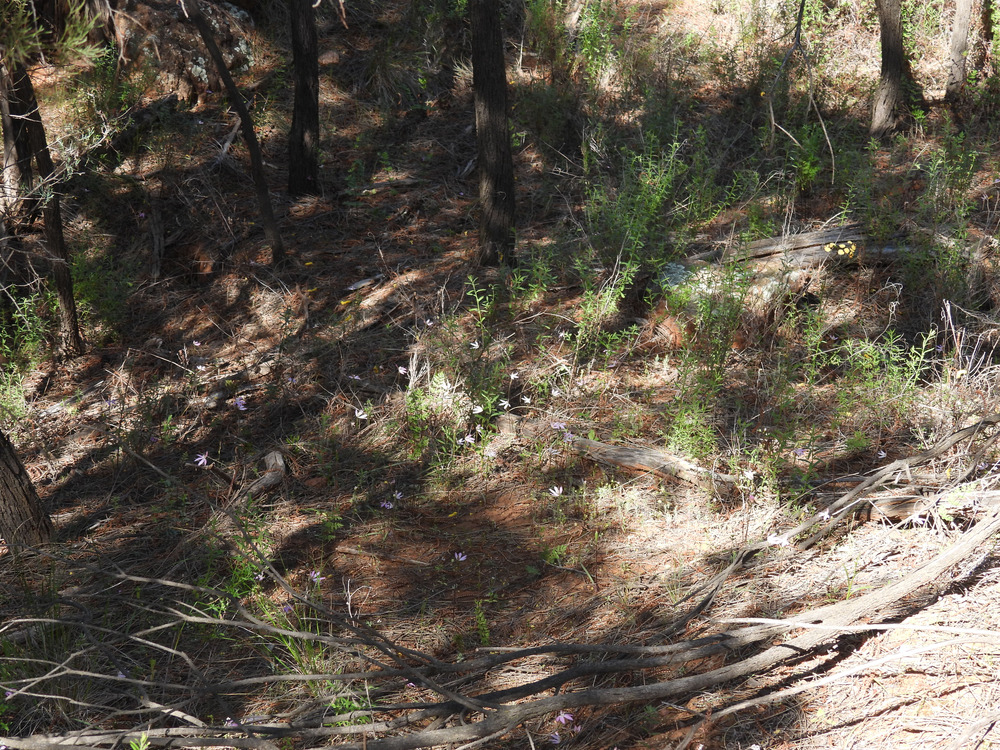
Difficult to capture how everywhere one looks there is a carpet of pink fingers.
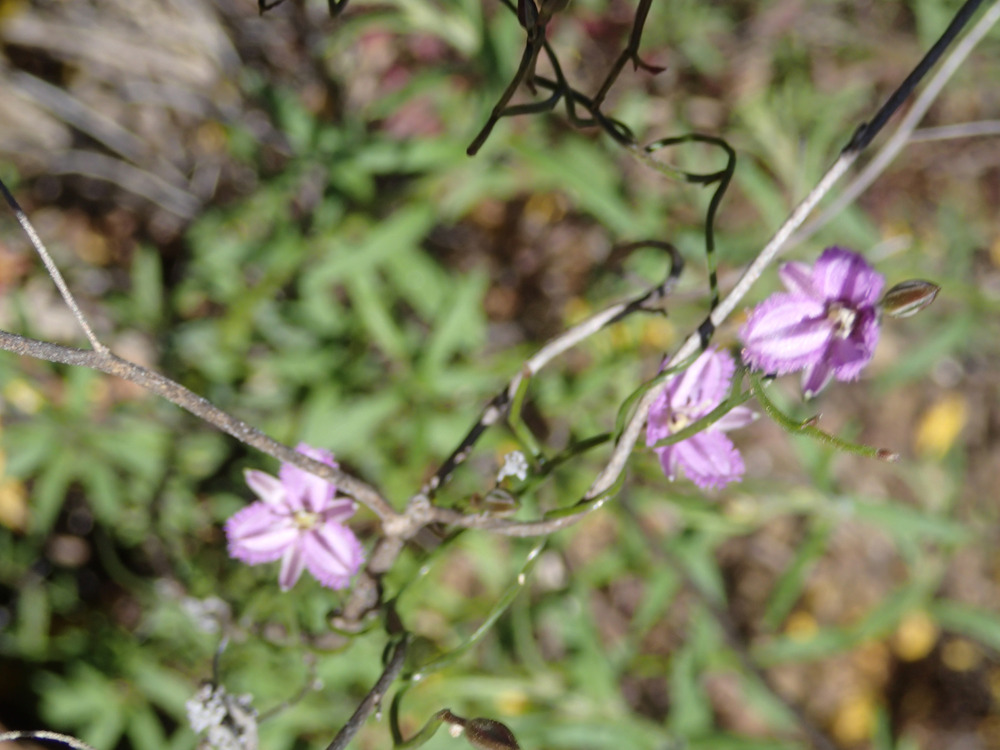
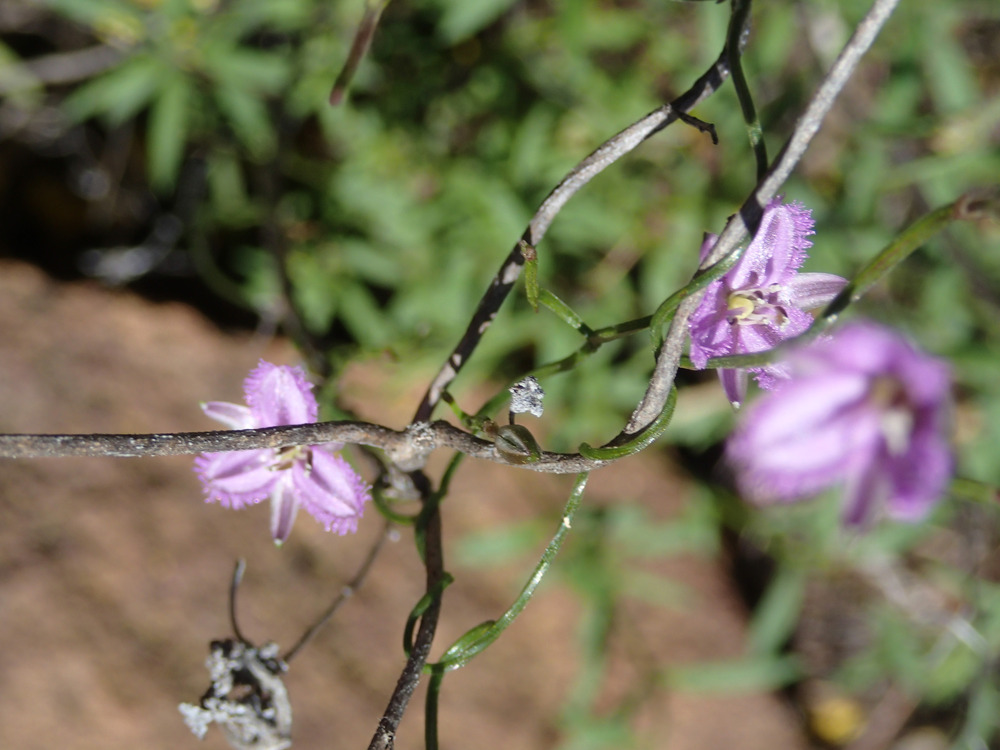
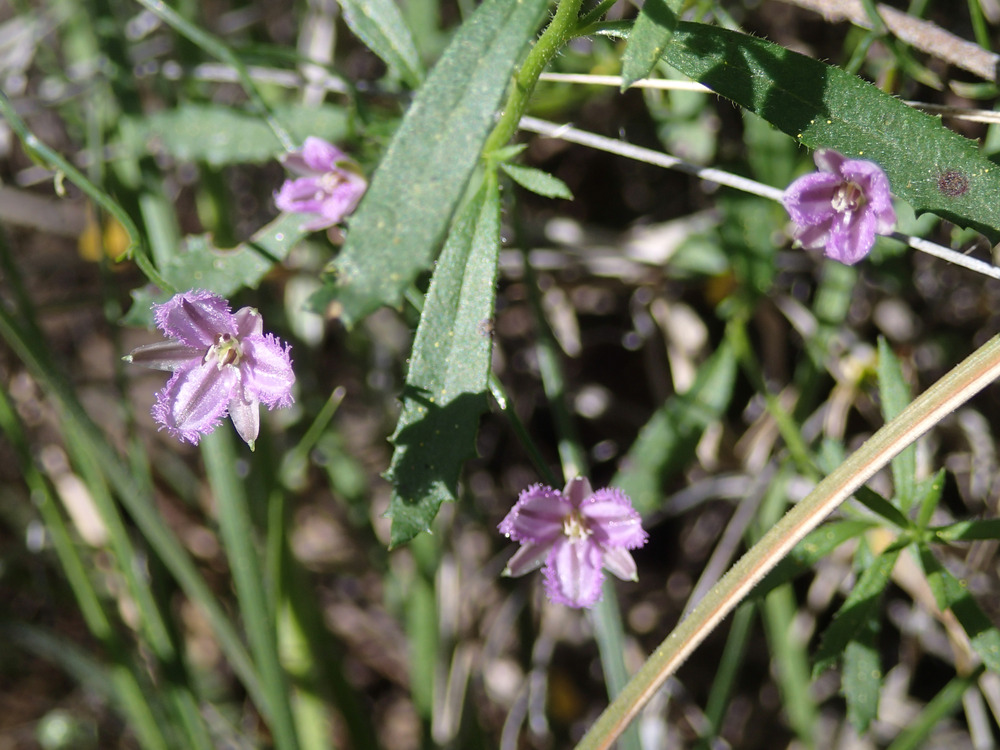
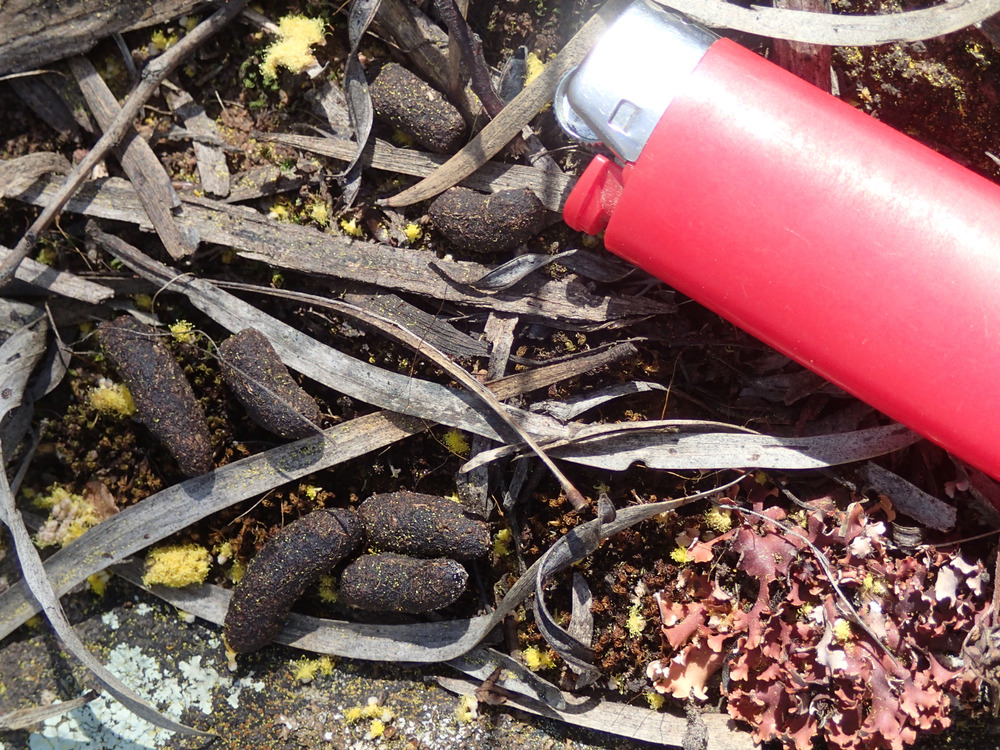
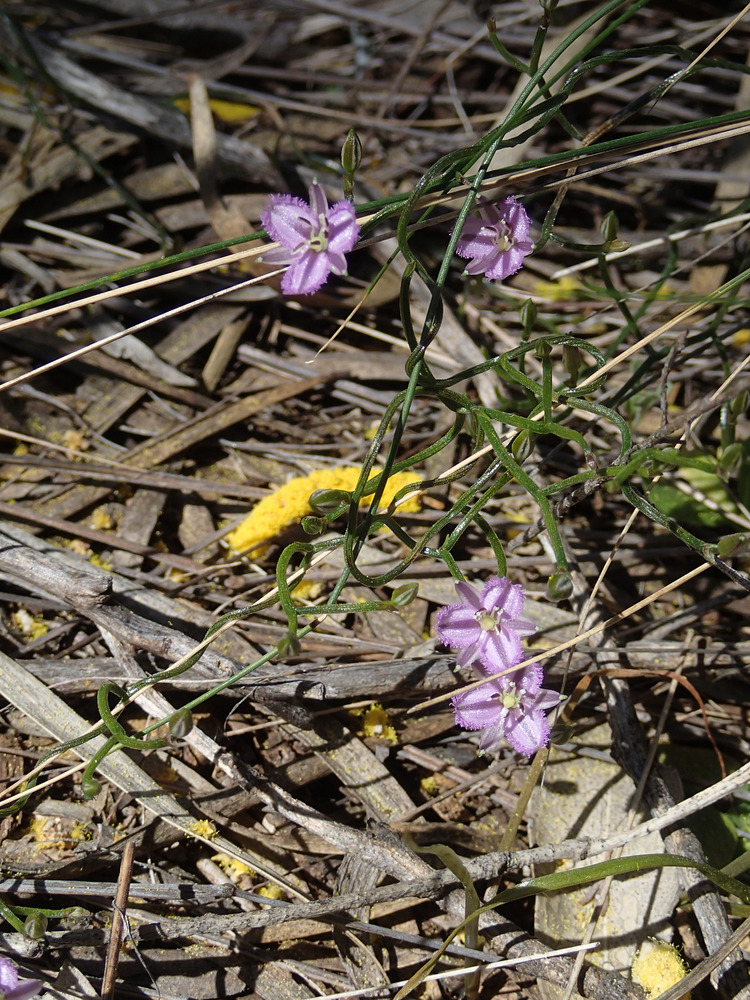
Don’t know which animal scat this is.
roughbarked said:

Don’t know which animal scat this is.
But the twining friinge lilies are trying their best. We really need a shower of rain.
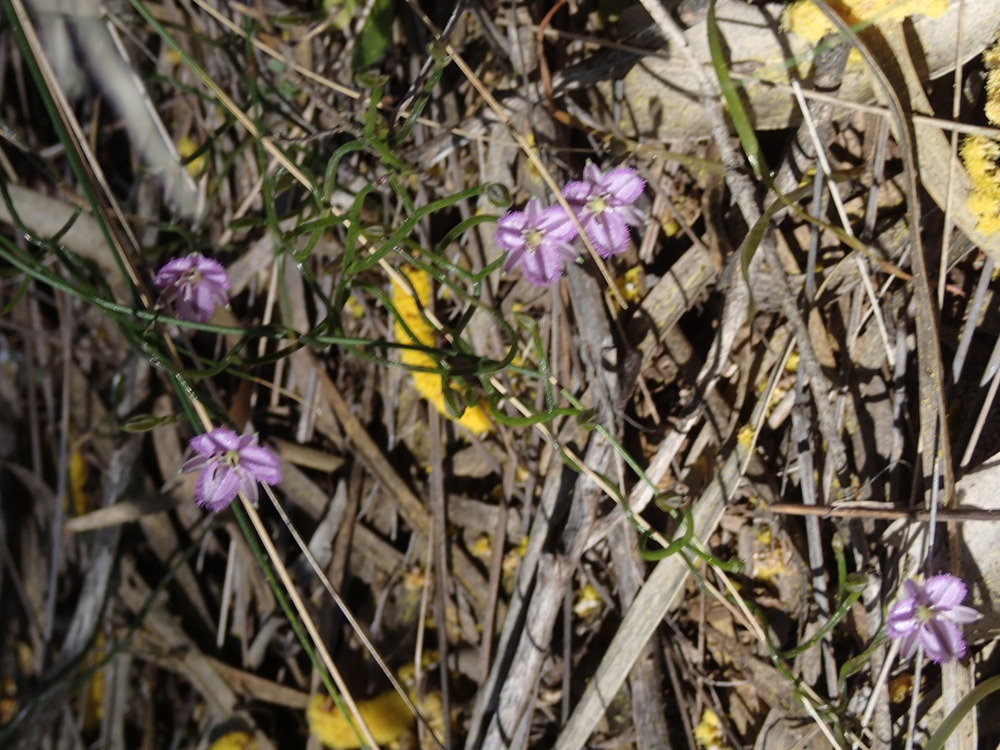
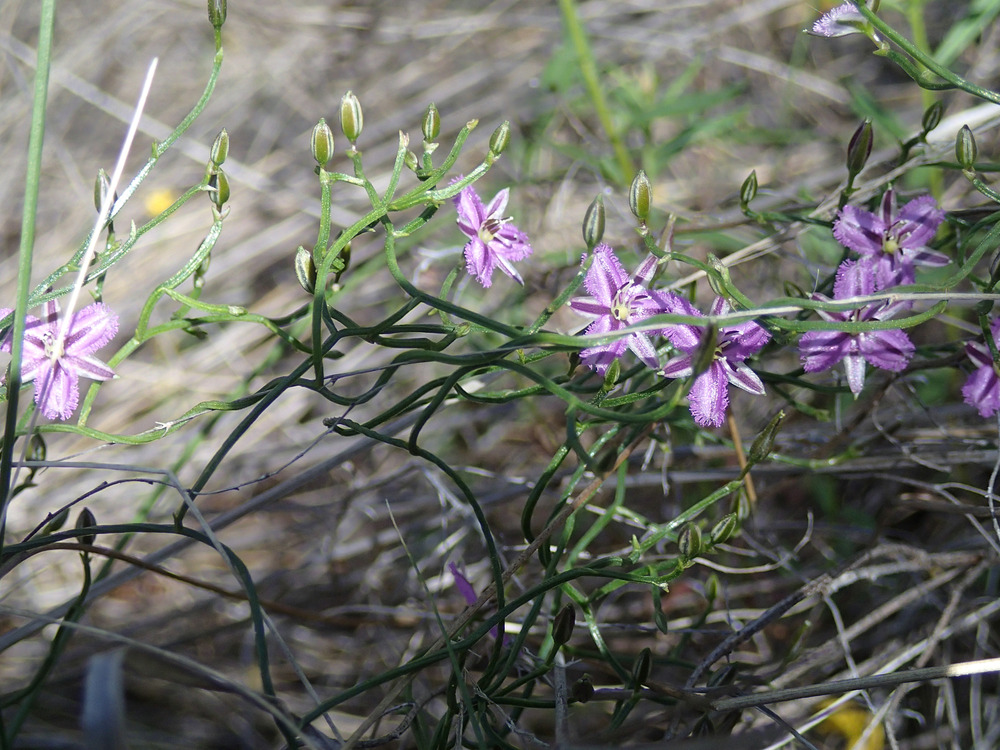
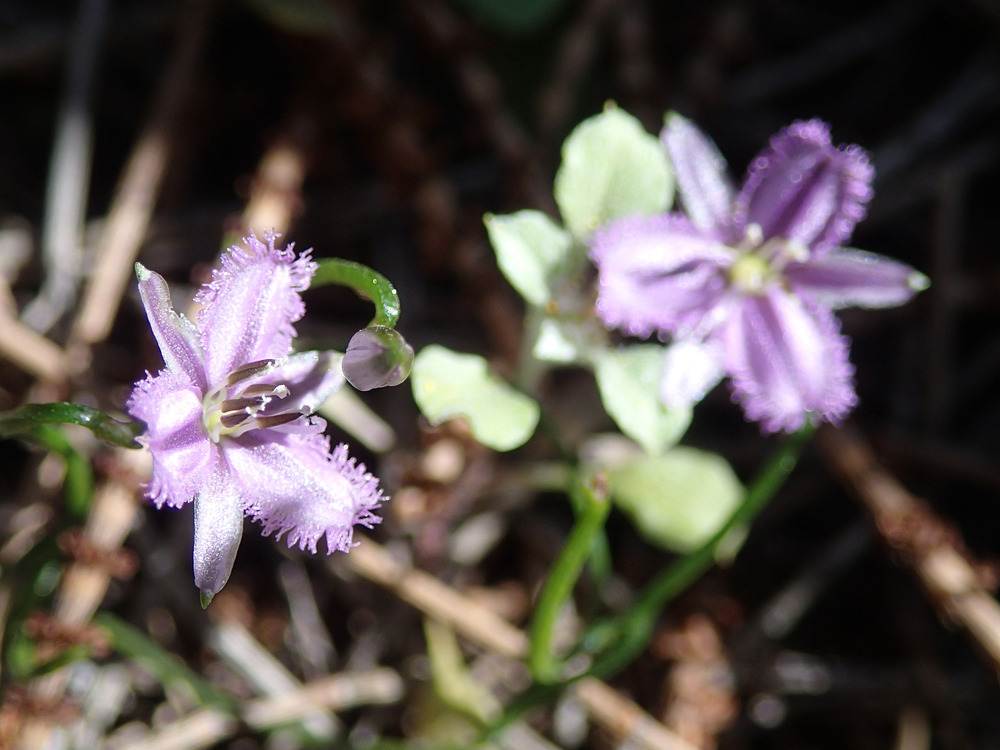
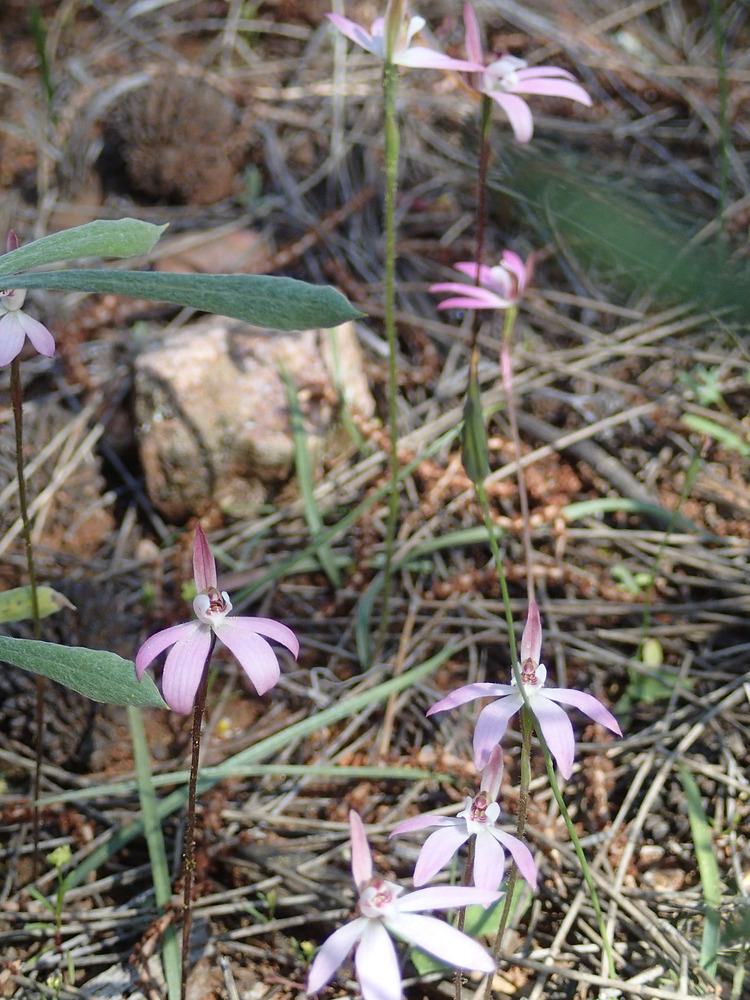
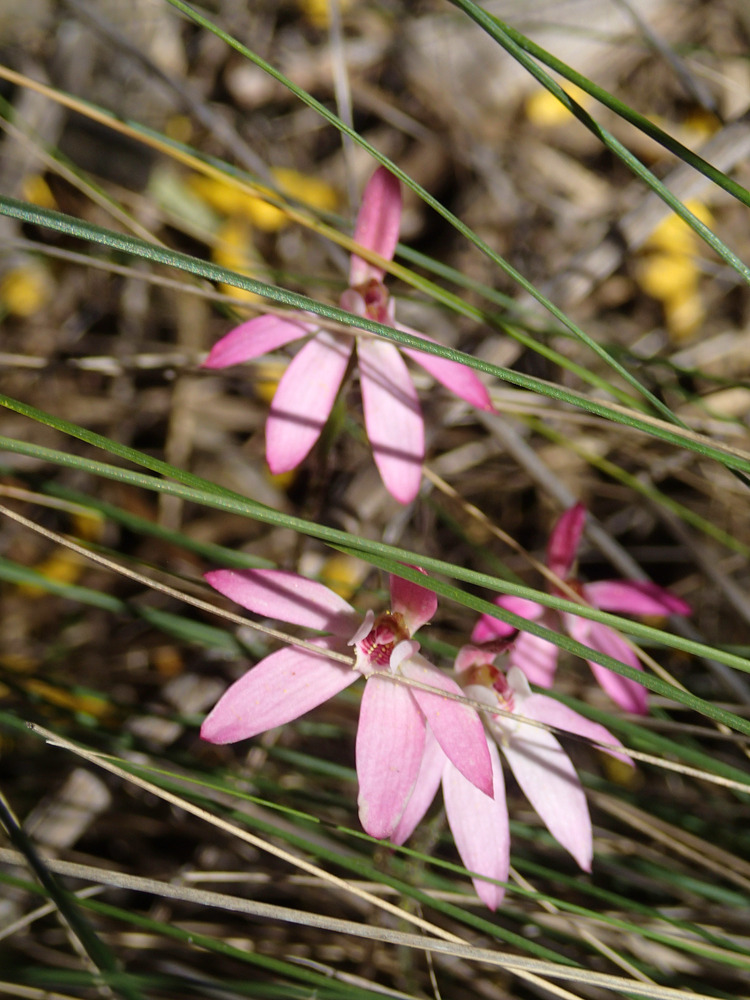
roughbarked said:
They’re pretty little blooms.
Bubblecar said:
roughbarked said:
They’re pretty little blooms.
Tiny but bright.

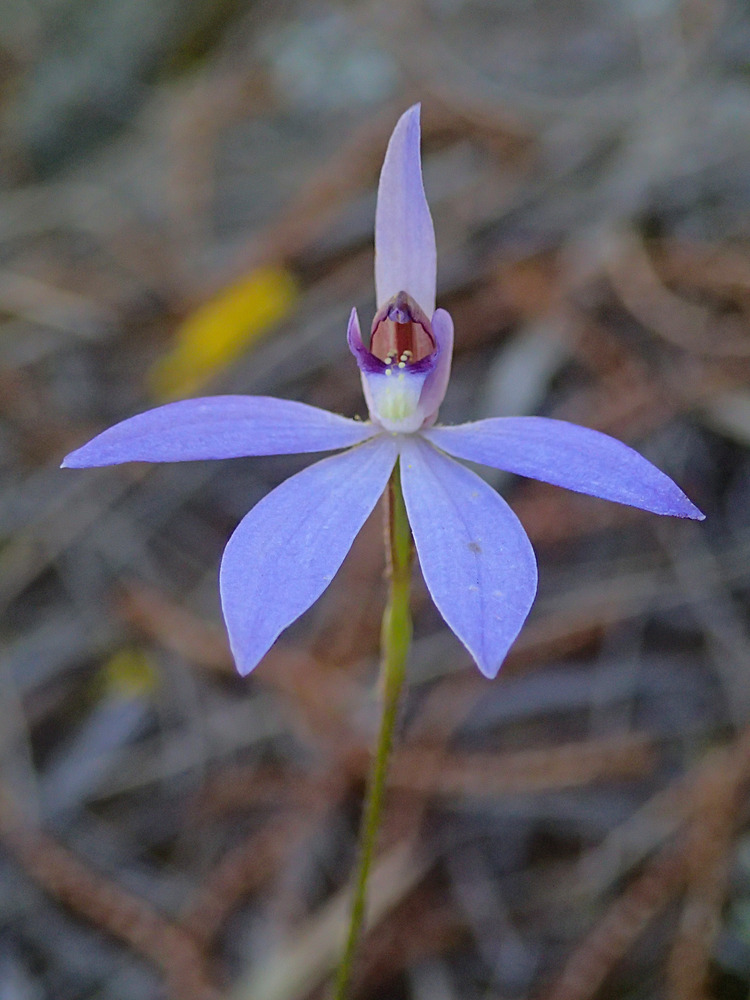
Kissing cousins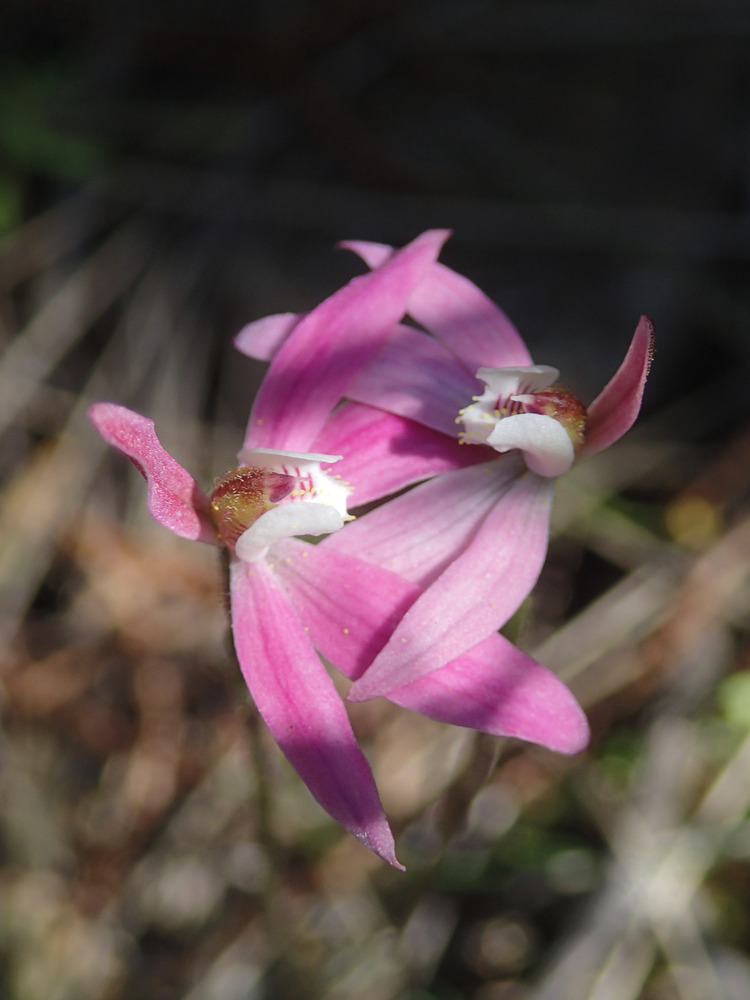
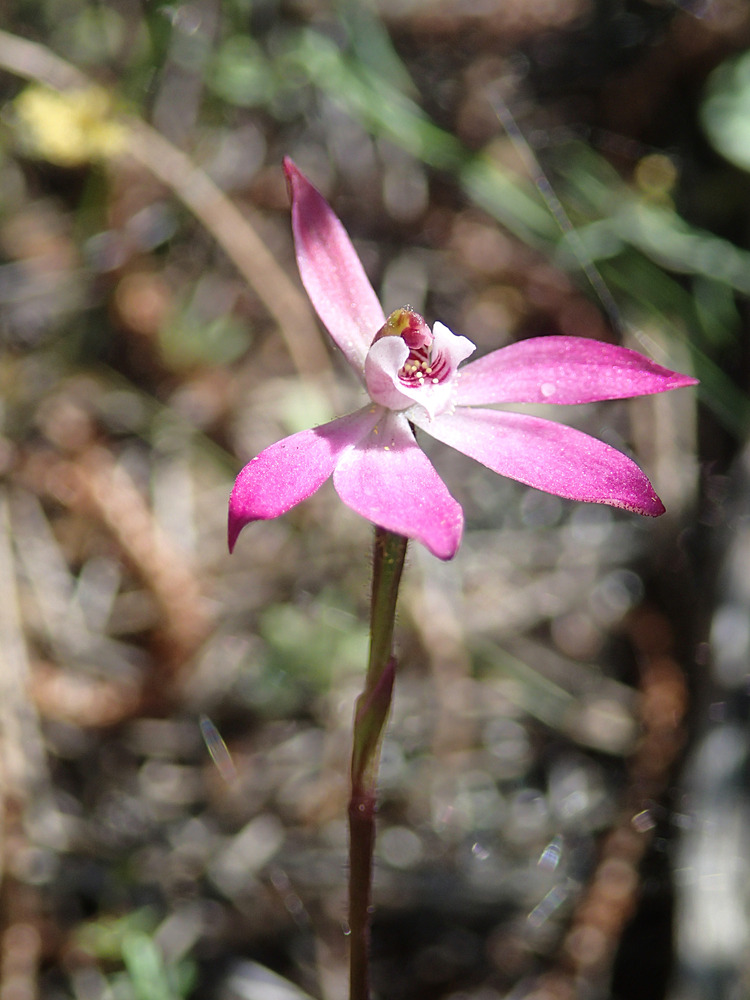
roughbarked said:

Don’t know which animal scat this is.
I’ve recently bought myself a scat ID book, so will look later.
There were lots of donkey/leopard orchids and spiders too but the find of the day was that my suspicion was correct re: bearded orchid.

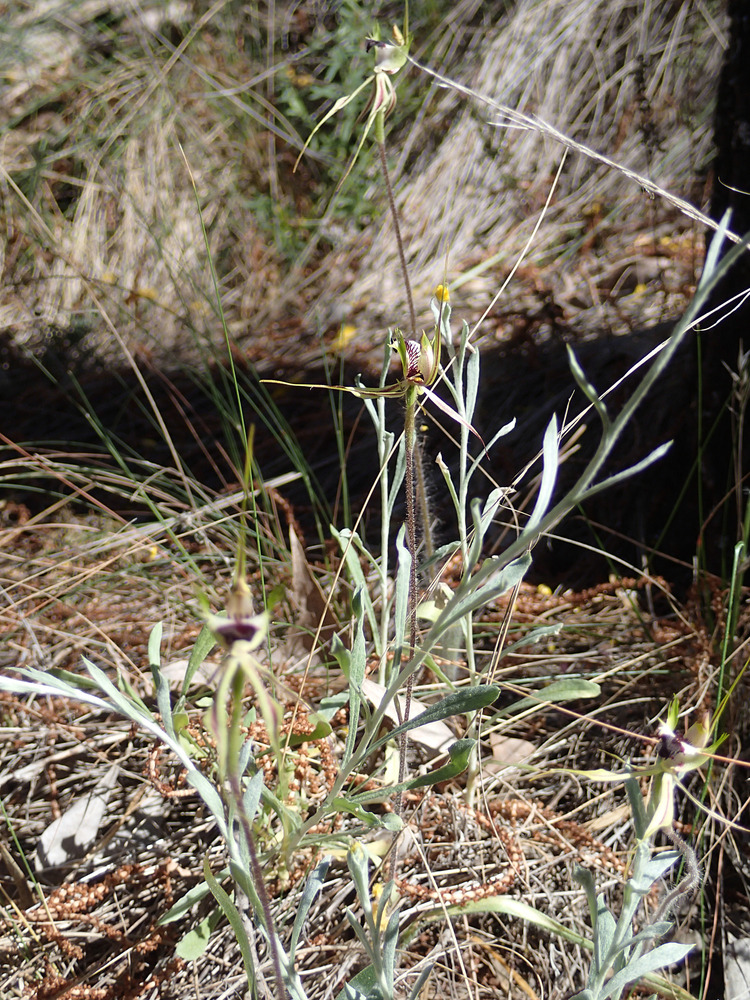
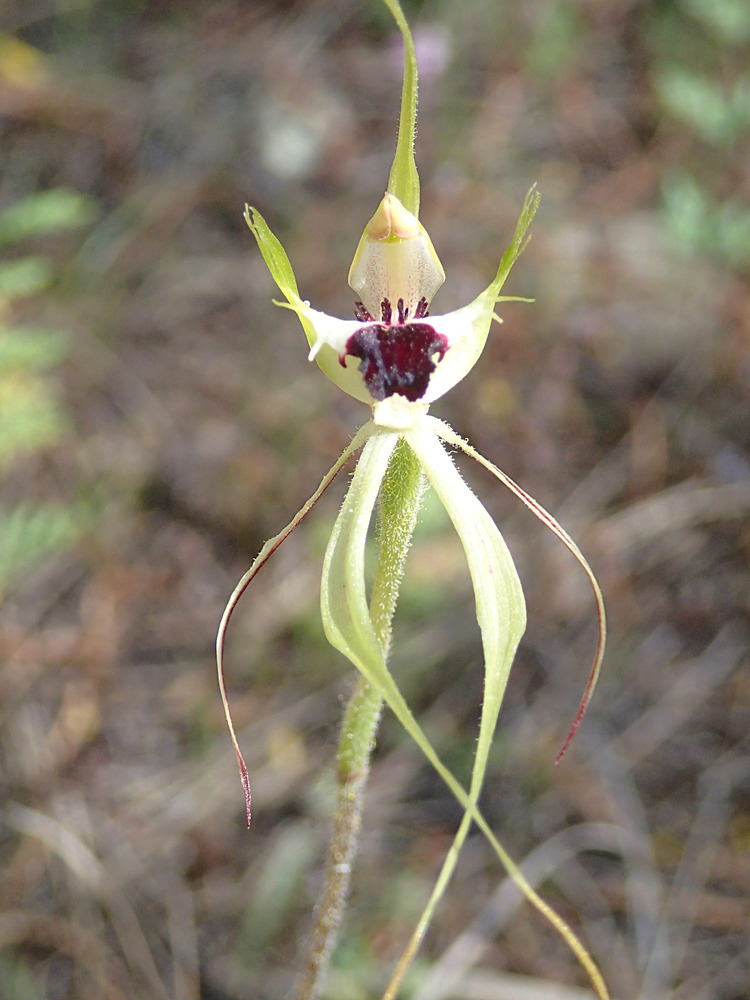
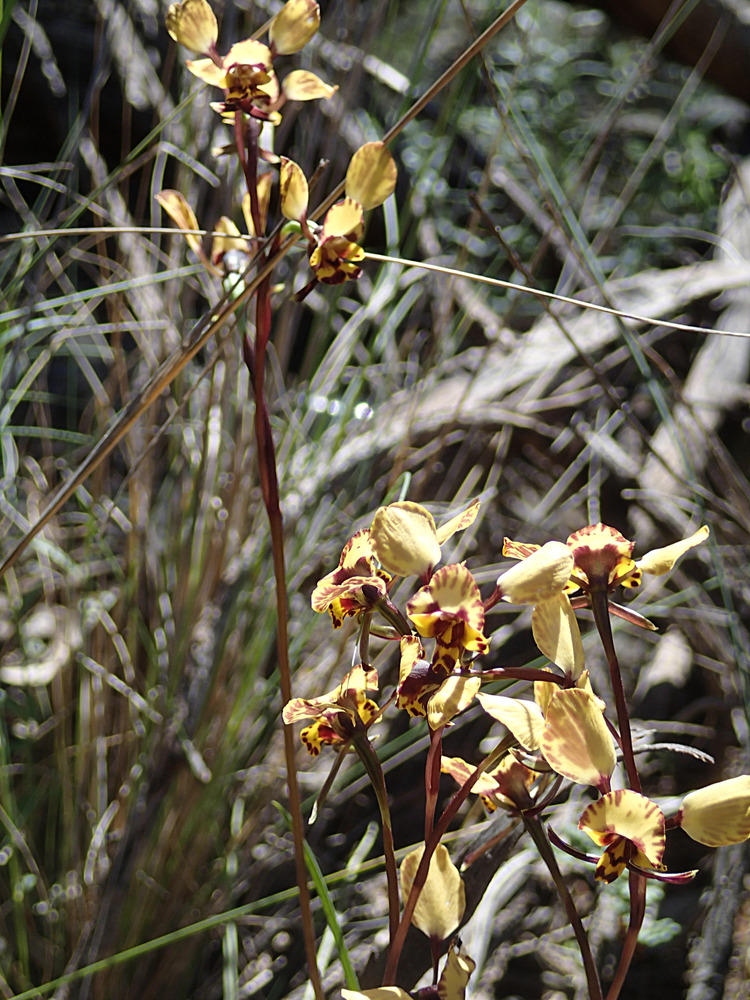
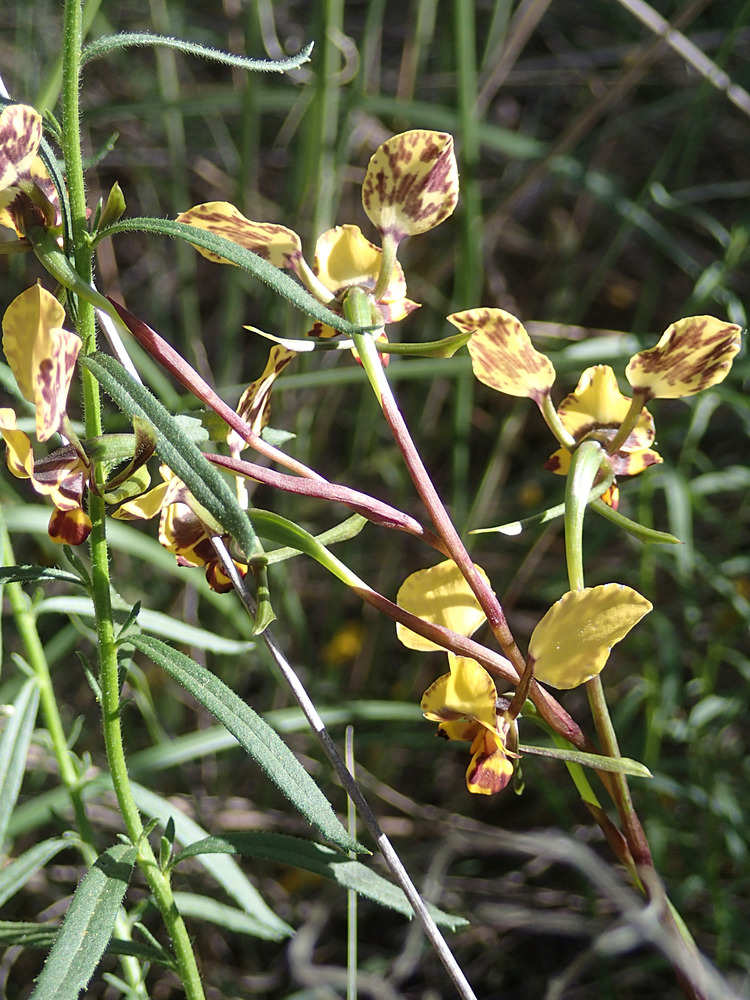
The Purple Bearded orchids that we’ve beforehand only found on the other side of the road, like the Garland lilies and the spider orchids, the road has cut right through middle of the line of plants. Previous best year was eight plants, add another 14 to that tally because that’s how many we found today on the uphill side.
roughbarked said:
There were lots of donkey/leopard orchids and spiders too but the find of the day was that my suspicion was correct re: bearded orchid.

The Purple Bearded orchids that we’ve beforehand only found on the other side of the road, like the Garland lilies and the spider orchids, the road has cut right through middle of the line of plants. Previous best year was eight plants, add another 14 to that tally because that’s how many we found today on the uphill side.
They aren’t in flower for maybe another week or so. A blurry shot.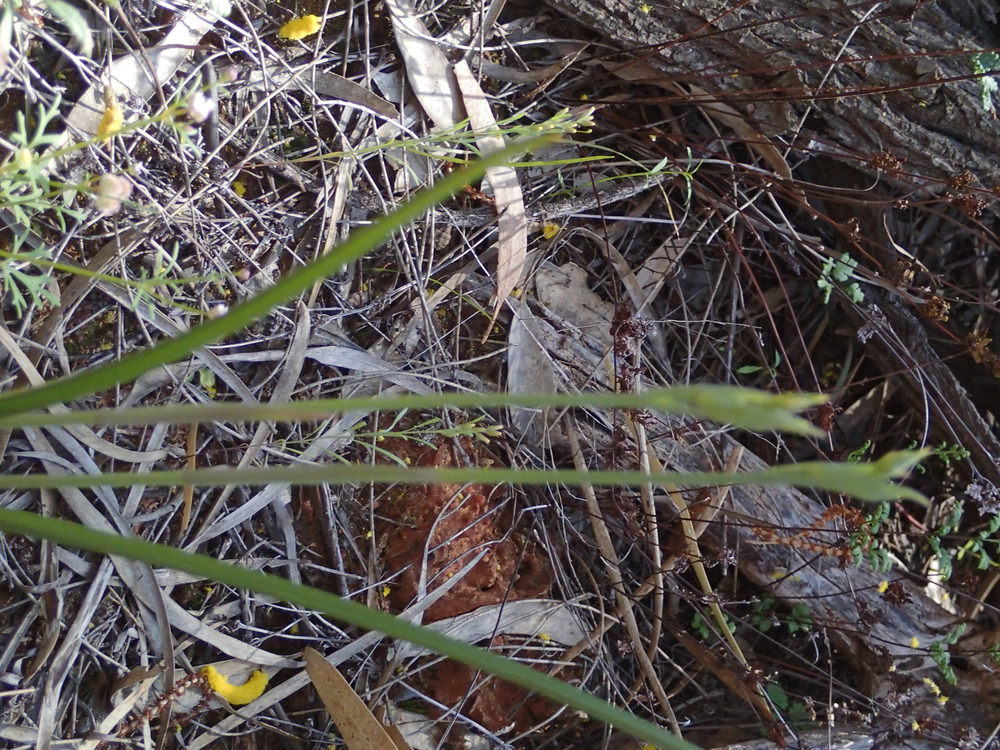

The forest floor with a Purple bearded orchid shooting up.

Two Purple beared orchids on their way
and some pink fingers with a purple bearded in left of image.
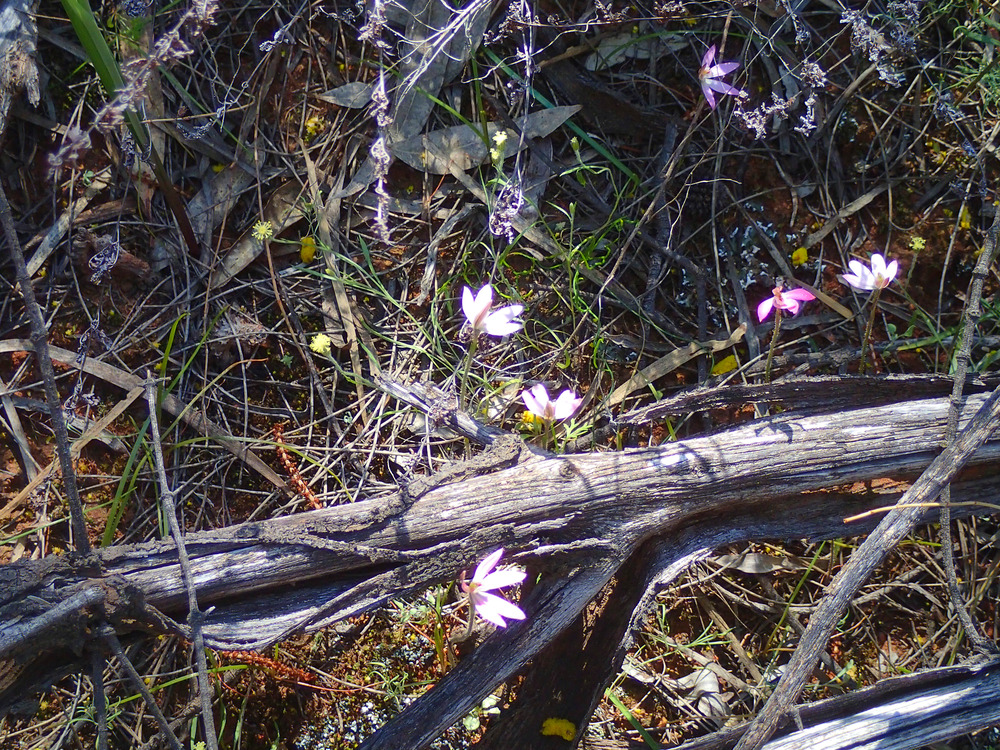
roughbarked said:
The forest floor with a Purple bearded orchid shooting up.
Two Purple beared orchids on their way
and some pink fingers with a purple bearded in left of image.
Both myself and my neighbour plus our spouses would like to submit an application to fence the motorbikes out or at least slap some order on the site to be better protected than it is.
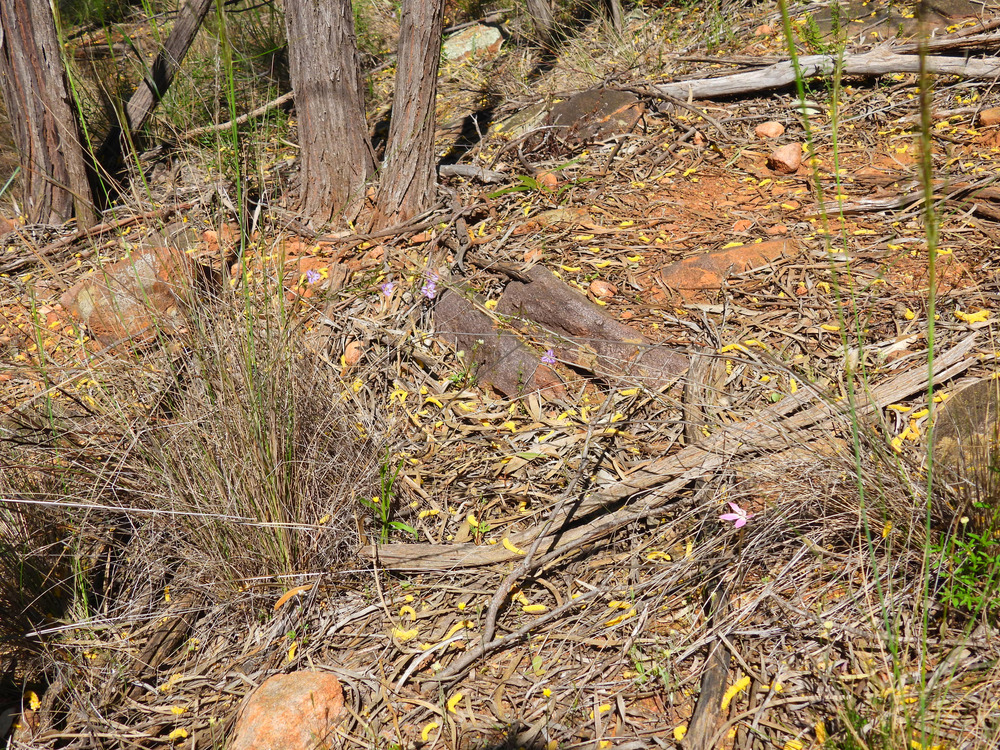
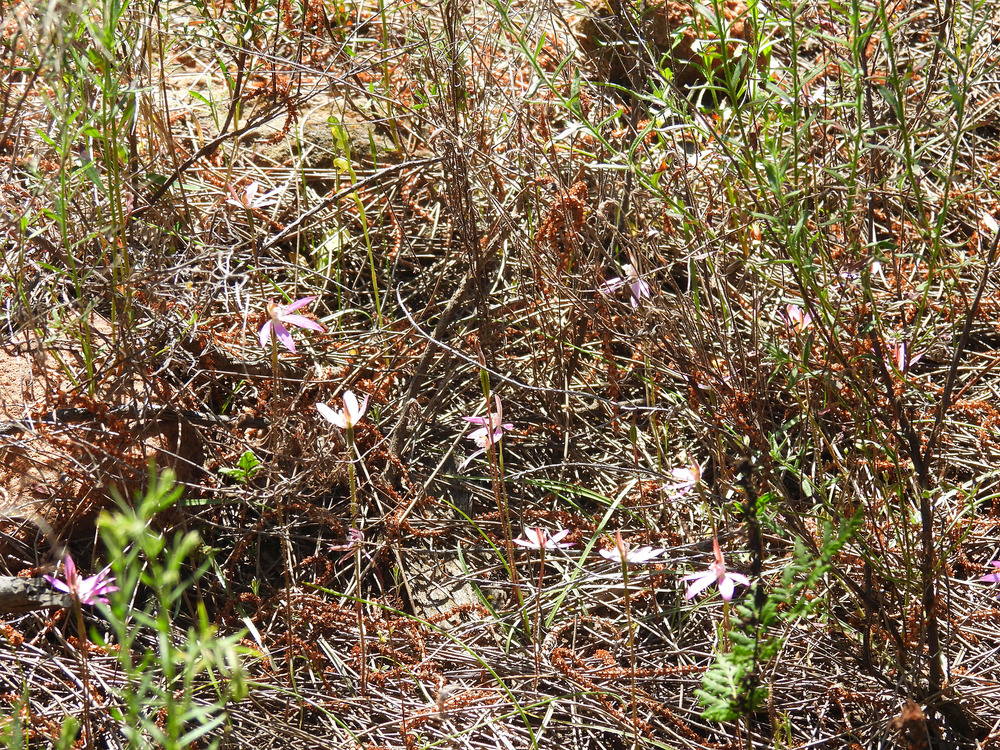
roughbarked said:
Both myself and my neighbour plus our spouses would like to submit an application to fence the motorbikes out or at least slap some order on the site to be better protected than it is.
Do you think that’d stop them?
roughbarked said:
ooh, I’ve done quite a few IDs online for that blue one. Cyanicula caerulea – blue finger orchid. I’ve never seen one in the flesh. But there isn’t much you could confuse it with. The pink one, on the other hand..
Speedy said:
roughbarked said:
Both myself and my neighbour plus our spouses would like to submit an application to fence the motorbikes out or at least slap some order on the site to be better protected than it is.
Do you think that’d stop them?
We know it doesn’t because they either cut the fences ot push the gate over. Farmers and National Parks notwithstanding.
buffy said:
roughbarked said:
ooh, I’ve done quite a few IDs online for that blue one. Cyanicula caerulea – blue finger orchid. I’ve never seen one in the flesh. But there isn’t much you could confuse it with. The pink one, on the other hand..
Yeah. The blue fingers are easy.
Speedy said:
roughbarked said:

Don’t know which animal scat this is.
I’ve recently bought myself a scat ID book, so will look later.
Hi Mr Barked. I have now looked through my new Tracks, Scats and Other Traces book (for the first time ever, mind you), and the best I can surmise is that these are from a possum (Common Ringtail or Common Brushtail), or a deer. I can see the size of the scats on your photo, but can’t find where the size references are in the book yet. Other than that, it looks very much like Koala scat, but I assume you’re still around Griffith somewhere, and that’s not in their range.
Speedy said:
Speedy said:
roughbarked said:

Don’t know which animal scat this is.
I’ve recently bought myself a scat ID book, so will look later.
Hi Mr Barked. I have now looked through my new Tracks, Scats and Other Traces book (for the first time ever, mind you), and the best I can surmise is that these are from a possum (Common Ringtail or Common Brushtail), or a deer. I can see the size of the scats on your photo, but can’t find where the size references are in the book yet. Other than that, it looks very much like Koala scat, but I assume you’re still around Griffith somewhere, and that’s not in their range.
Possum was what I reckoned it could be but they are rare around here these days. So it was good to see that some may be living in what little bits of bush are left. Thanks for checking.
roughbarked said:
Speedy said:
Speedy said:I’ve recently bought myself a scat ID book, so will look later.
Hi Mr Barked. I have now looked through my new Tracks, Scats and Other Traces book (for the first time ever, mind you), and the best I can surmise is that these are from a possum (Common Ringtail or Common Brushtail), or a deer. I can see the size of the scats on your photo, but can’t find where the size references are in the book yet. Other than that, it looks very much like Koala scat, but I assume you’re still around Griffith somewhere, and that’s not in their range.
Possum was what I reckoned it could be but they are rare around here these days. So it was good to see that some may be living in what little bits of bush are left. Thanks for checking.
No problem rb. On rereading that right now, I realise I wrote ‘deer’ when I meant ‘goat’, but either way, glad there’s a chance it could be a possum :)
Speedy said:
roughbarked said:
Speedy said:Hi Mr Barked. I have now looked through my new Tracks, Scats and Other Traces book (for the first time ever, mind you), and the best I can surmise is that these are from a possum (Common Ringtail or Common Brushtail), or a deer. I can see the size of the scats on your photo, but can’t find where the size references are in the book yet. Other than that, it looks very much like Koala scat, but I assume you’re still around Griffith somewhere, and that’s not in their range.
Possum was what I reckoned it could be but they are rare around here these days. So it was good to see that some may be living in what little bits of bush are left. Thanks for checking.
No problem rb. On rereading that right now, I realise I wrote ‘deer’ when I meant ‘goat’, but either way, glad there’s a chance it could be a possum :)
It is more likely that it could be goat than possum, in that there are more goats than possums. Same as there are more pigs than kangaroos.
roughbarked said:
Speedy said:
roughbarked said:Possum was what I reckoned it could be but they are rare around here these days. So it was good to see that some may be living in what little bits of bush are left. Thanks for checking.
No problem rb. On rereading that right now, I realise I wrote ‘deer’ when I meant ‘goat’, but either way, glad there’s a chance it could be a possum :)
It is more likely that it could be goat than possum, in that there are more goats than possums. Same as there are more pigs than kangaroos.
Yep. I’m sure I could smell goats when I visited Cocoparra and it all made sense when I was looking through the book. The problem was, I think, that the night before I attended a meeting where local feral deer were being discussed. Do you really have more pigs than kangas?
Speedy said:
roughbarked said:
Speedy said:No problem rb. On rereading that right now, I realise I wrote ‘deer’ when I meant ‘goat’, but either way, glad there’s a chance it could be a possum :)
It is more likely that it could be goat than possum, in that there are more goats than possums. Same as there are more pigs than kangaroos.
Yep. I’m sure I could smell goats when I visited Cocoparra and it all made sense when I was looking through the book. The problem was, I think, that the night before I attended a meeting where local feral deer were being discussed. Do you really have more pigs than kangas?
At a rough guess yes. Probably wrong but I see more pig diggings than signs of kangaroos. The pigs dig up the orchids.
I’ve examined the photos of Caladenia dilatata at iNaturalist and unless there is a difference that can be found by dissection, I fail to see that the local spider I see is any different from the green comb orchid photos posted.
https://live.staticflickr.com/65535/53977658249_1335f8840a_b.jpg
https://live.staticflickr.com/65535/53977218218_c8d236c67e_b.jpg
https://live.staticflickr.com/65535/53977404390_c84604fa39_b.jpg
roughbarked said:
I’ve examined the photos of Caladenia dilatata at iNaturalist and unless there is a difference that can be found by dissection, I fail to see that the local spider I see is any different from the green comb orchid photos posted.
Images properly linked.
roughbarked said:
roughbarked said:
I’ve examined the photos of Caladenia dilatata at iNaturalist and unless there is a difference that can be found by dissection, I fail to see that the local spider I see is any different from the green comb orchid photos posted.
Images properly linked.
Middle one slightly remarkable in that it is actually throwing two flowers.
A closer shot.

roughbarked said:
roughbarked said:
roughbarked said:
I’ve examined the photos of Caladenia dilatata at iNaturalist and unless there is a difference that can be found by dissection, I fail to see that the local spider I see is any different from the green comb orchid photos posted.
Images properly linked.
Middle one slightly remarkable in that it is actually throwing two flowers.
A closer shot.
Put it on iNaturalist with your suggestion for an ID and see if any of the NSW orchid buffs agree or offer another suggestion.
buffy said:
roughbarked said:
roughbarked said:Images properly linked.
Middle one slightly remarkable in that it is actually throwing two flowers.
A closer shot.
Put it on iNaturalist with your suggestion for an ID and see if any of the NSW orchid buffs agree or offer another suggestion.
Shall do later. there’s heaps of pjotos there already. https://www.inaturalist.org/taxa/559047-Caladenia-dilatata/browse_photos
roughbarked said:
buffy said:
roughbarked said:Middle one slightly remarkable in that it is actually throwing two flowers.
A closer shot.
Put it on iNaturalist with your suggestion for an ID and see if any of the NSW orchid buffs agree or offer another suggestion.
Shall do later. there’s heaps of pjotos there already. https://www.inaturalist.org/taxa/559047-Caladenia-dilatata/browse_photos
Yes, but one of the reasons for iNaturalist is to record its presence at a particular location at a particular time so the researchers can collate information on distribution and flowering times. iNaturalist is not really a photo storing facility, although it does also do that.
buffy said:
roughbarked said:
buffy said:Put it on iNaturalist with your suggestion for an ID and see if any of the NSW orchid buffs agree or offer another suggestion.
Shall do later. there’s heaps of pjotos there already. https://www.inaturalist.org/taxa/559047-Caladenia-dilatata/browse_photos
Yes, but one of the reasons for iNaturalist is to record its presence at a particular location at a particular time so the researchers can collate information on distribution and flowering times. iNaturalist is not really a photo storing facility, although it does also do that.
It was described in my area in the Plants of Westen NSW.
However, I doubt that it is specific to the actual site.
roughbarked said:
buffy said:
roughbarked said:Shall do later. there’s heaps of pjotos there already. https://www.inaturalist.org/taxa/559047-Caladenia-dilatata/browse_photos
Yes, but one of the reasons for iNaturalist is to record its presence at a particular location at a particular time so the researchers can collate information on distribution and flowering times. iNaturalist is not really a photo storing facility, although it does also do that.
It was described in my area in the Plants of Westen NSW.
However, I doubt that it is specific to the actual site.
No, you are missing my point. The point is to record the presence of it at that location at that time. And it is specific to that actual site, because it was there and you photographed it.
buffy said:
roughbarked said:
buffy said:Yes, but one of the reasons for iNaturalist is to record its presence at a particular location at a particular time so the researchers can collate information on distribution and flowering times. iNaturalist is not really a photo storing facility, although it does also do that.
It was described in my area in the Plants of Westen NSW.
However, I doubt that it is specific to the actual site.
No, you are missing my point. The point is to record the presence of it at that location at that time. And it is specific to that actual site, because it was there and you photographed it.
Yes. What I meant was I doubt that Cunningham et al, actually visited this specific site.
roughbarked said:
buffy said:
roughbarked said:It was described in my area in the Plants of Westen NSW.
However, I doubt that it is specific to the actual site.
No, you are missing my point. The point is to record the presence of it at that location at that time. And it is specific to that actual site, because it was there and you photographed it.
Yes. What I meant was I doubt that Cunningham et al, actually visited this specific site.
Hence it is important to record it on iNaturalist, to improve the quality of the citizen science data set.
Michael V said:
roughbarked said:
buffy said:No, you are missing my point. The point is to record the presence of it at that location at that time. And it is specific to that actual site, because it was there and you photographed it.
Yes. What I meant was I doubt that Cunningham et al, actually visited this specific site.
Hence it is important to record it on iNaturalist, to improve the quality of the citizen science data set.
:)
Wahlenbergia
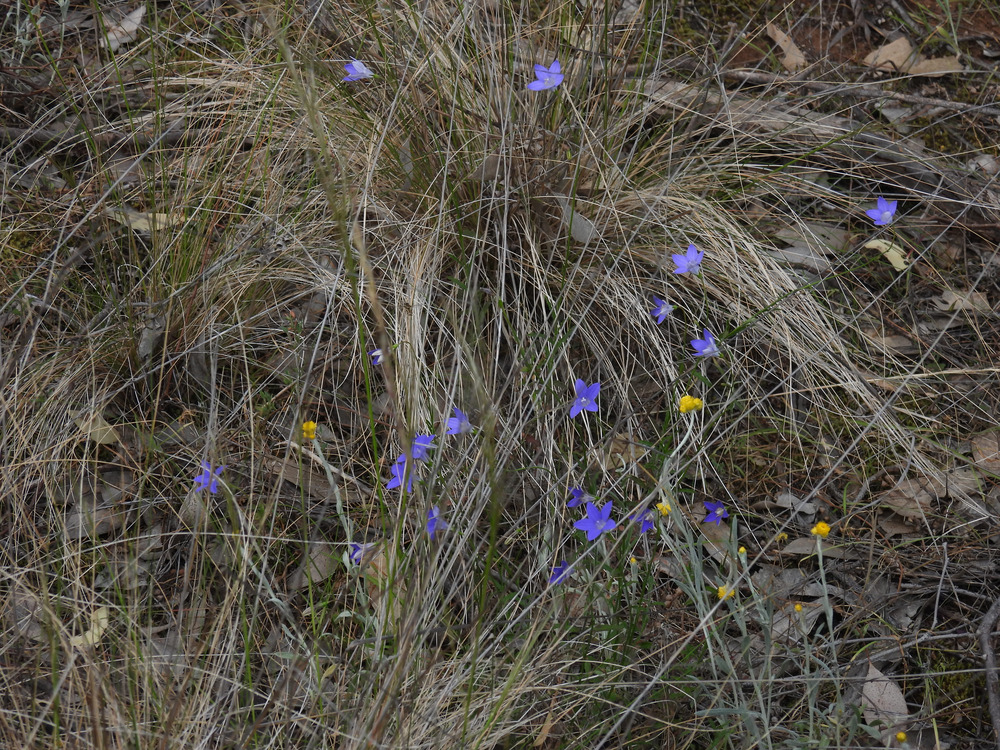
and some purple bearded orchids
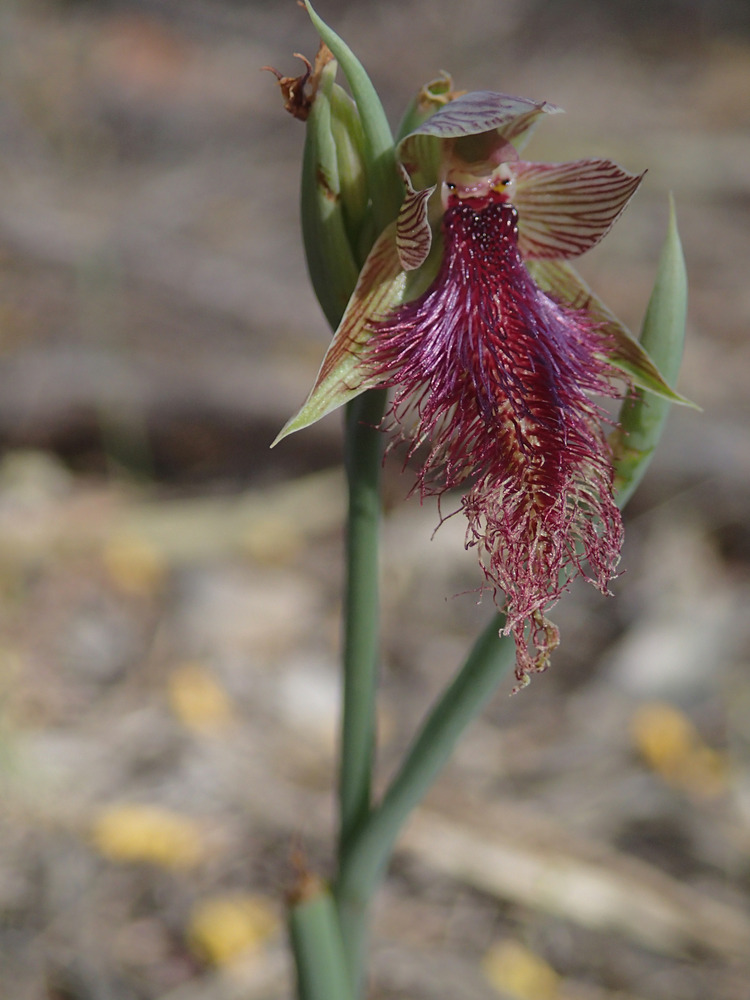
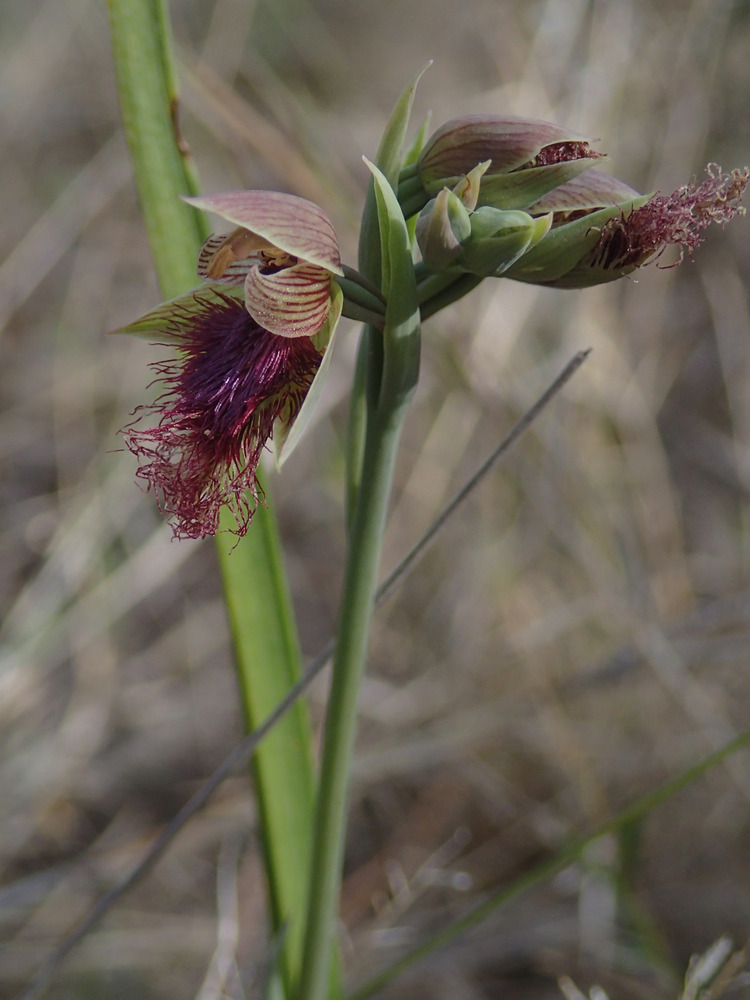
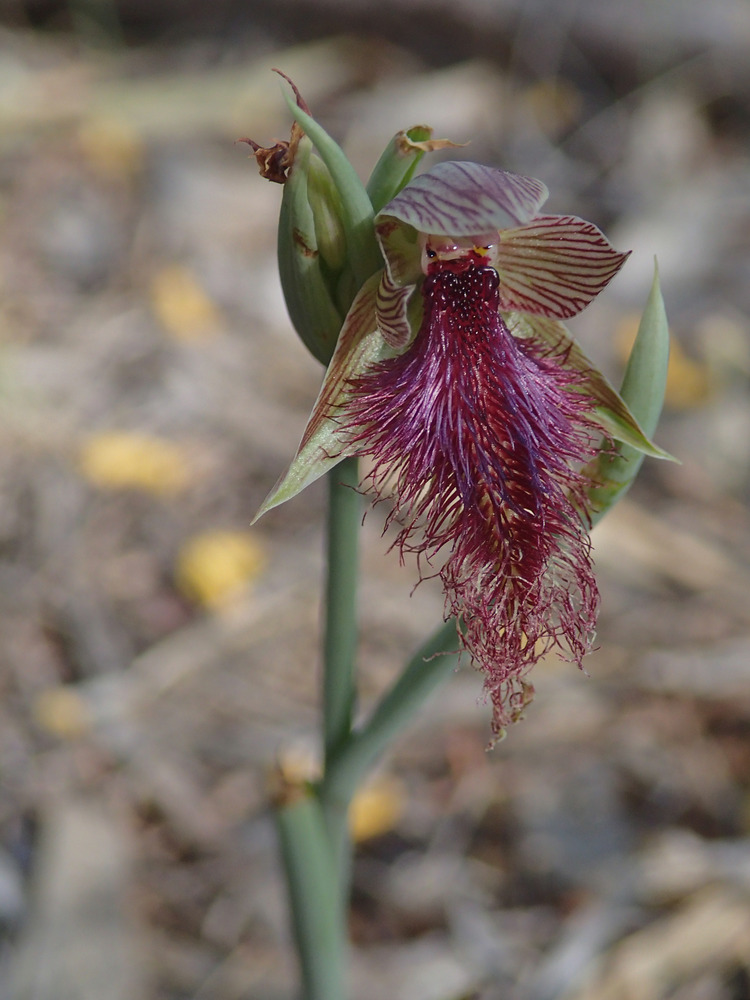
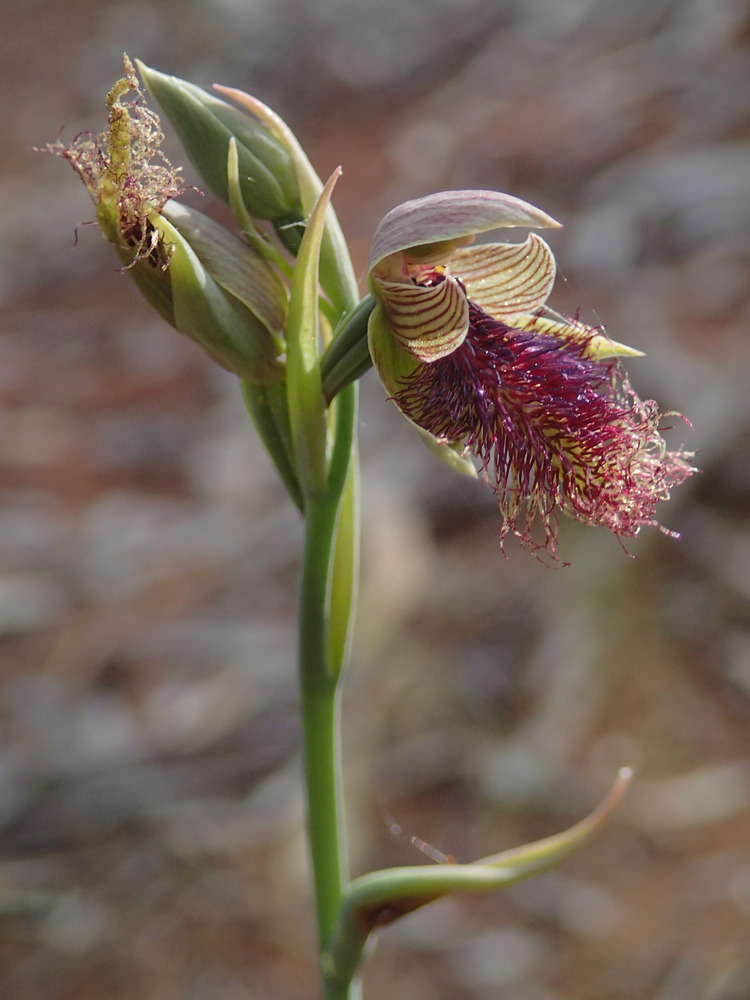
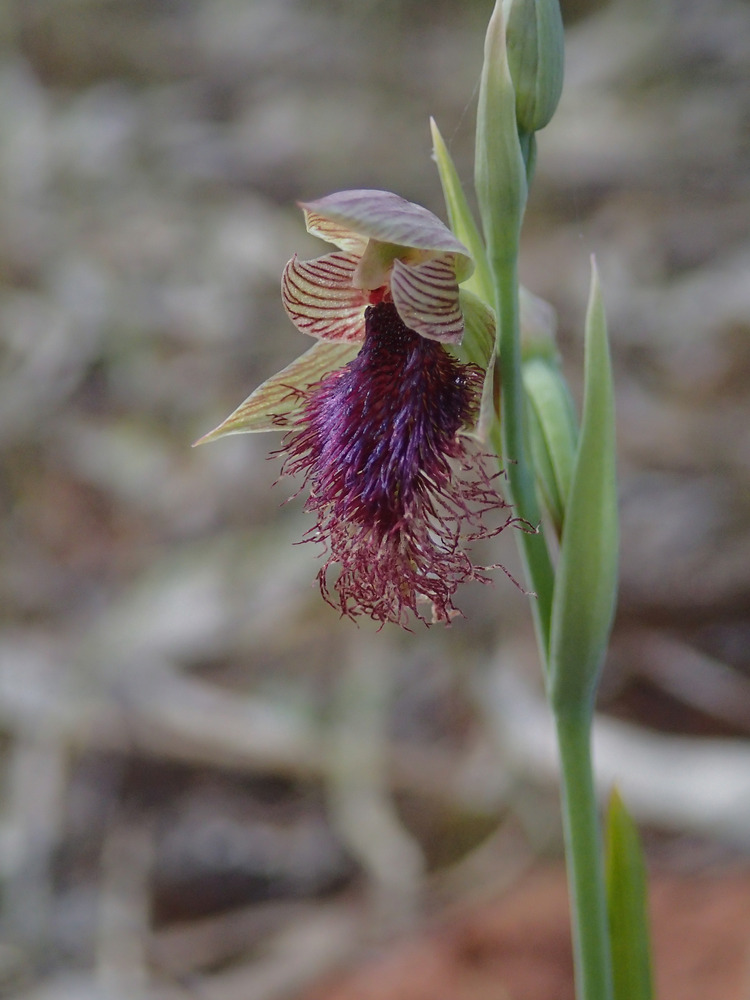
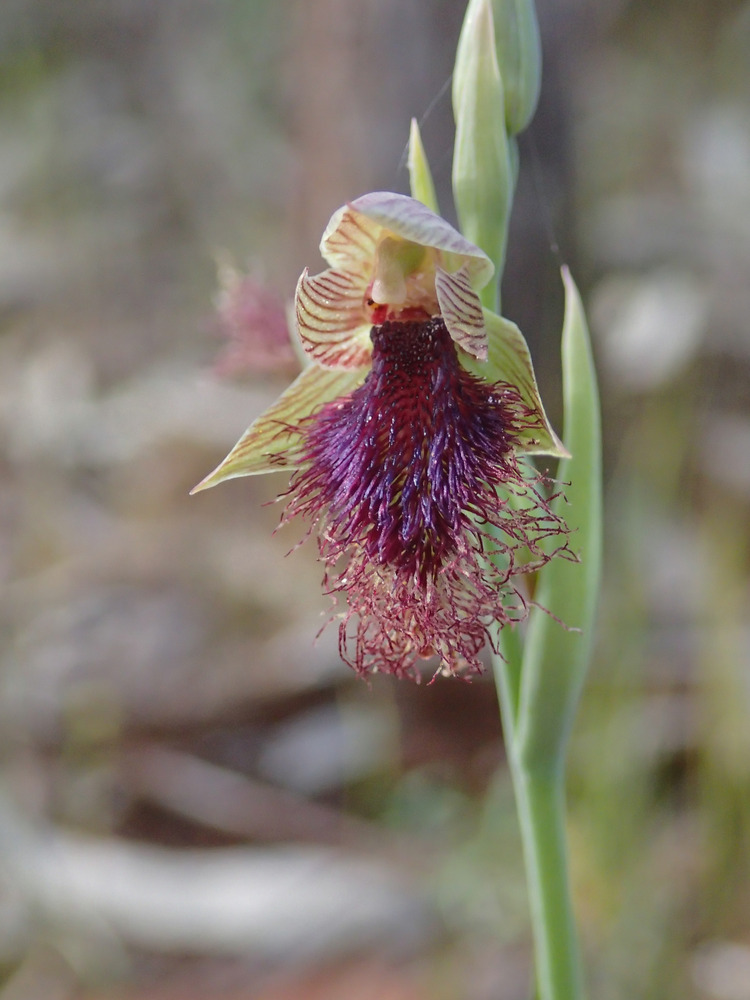
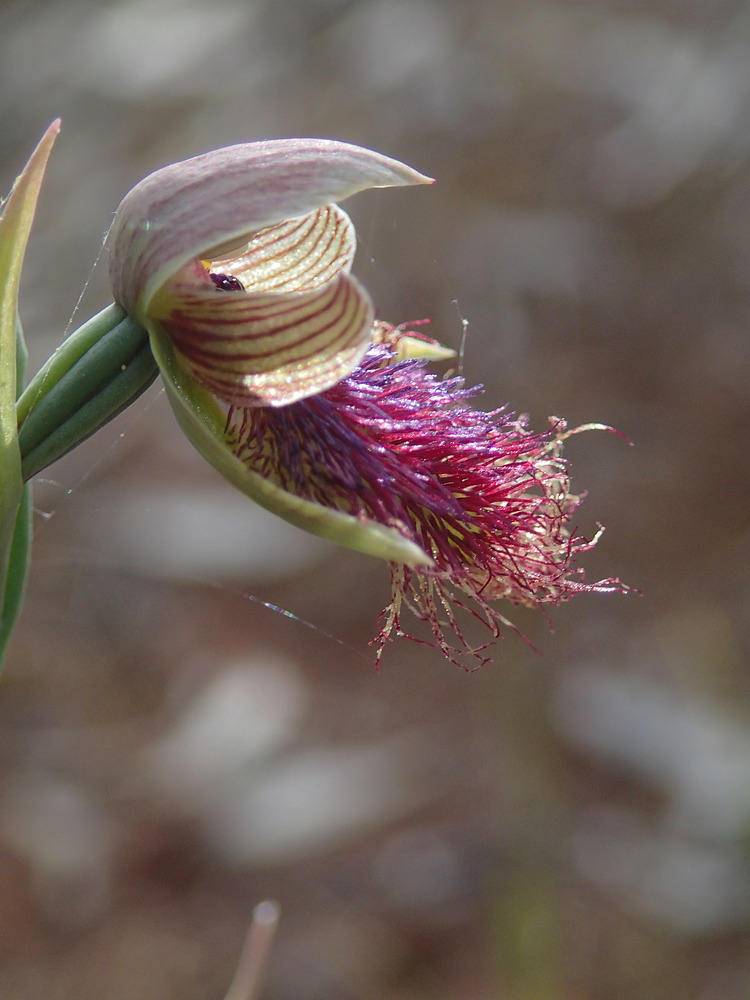
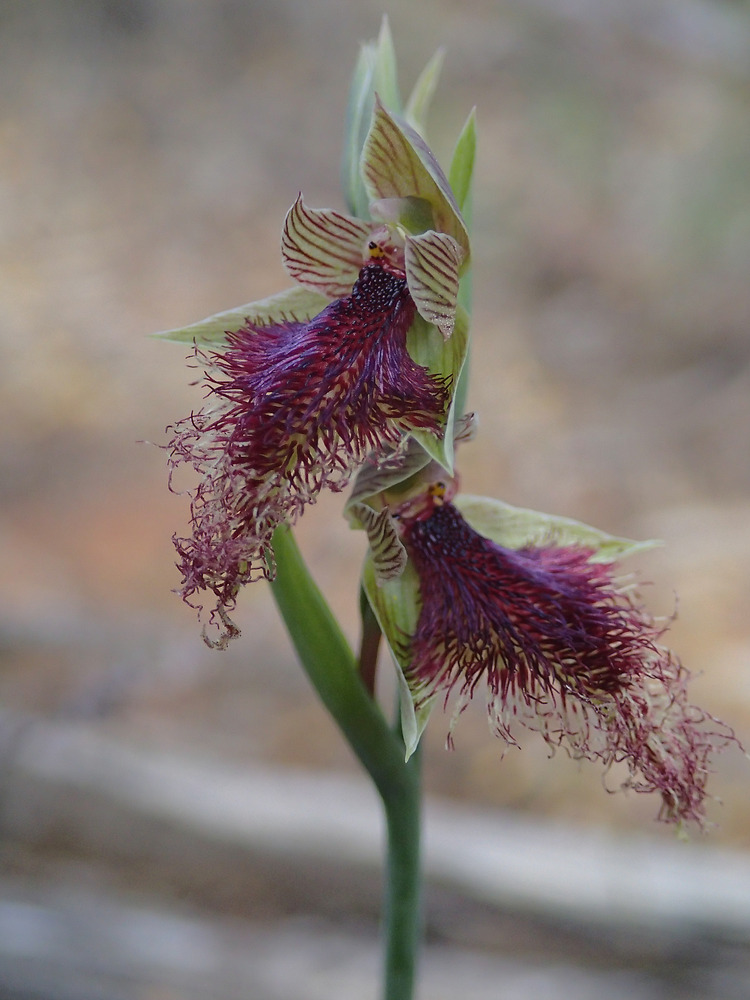
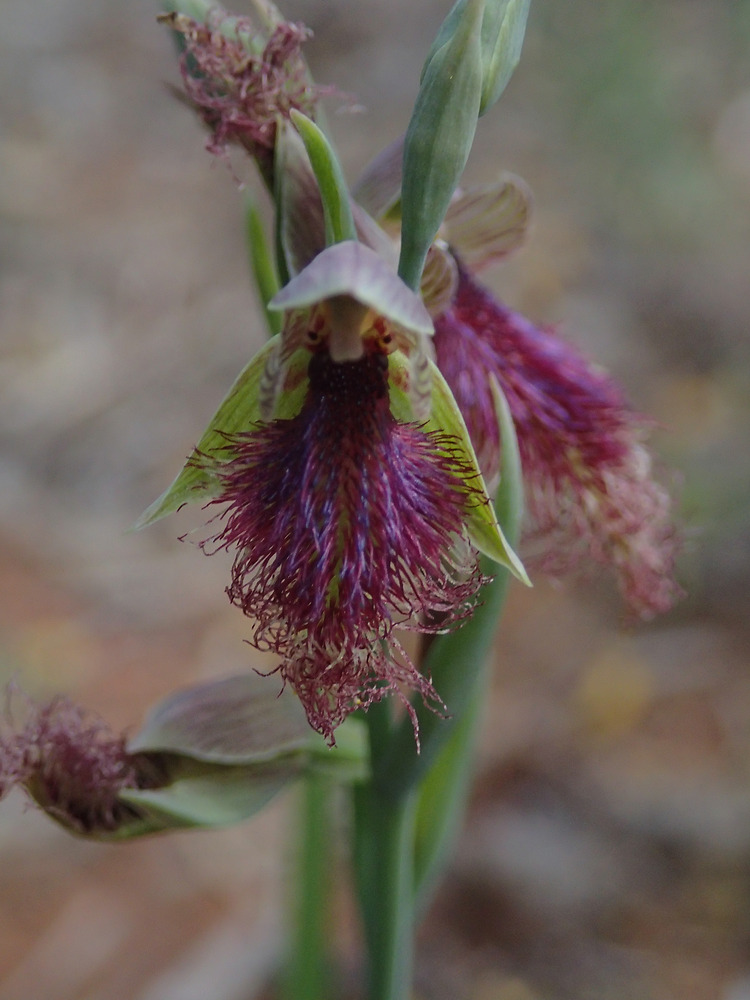
roughbarked said:
Wahlenbergia

and some purple bearded orchids
Those orchids look a bit pubic.
Bubblecar said:
roughbarked said:
Wahlenbergia

and some purple bearded orchids
Those orchids look a bit pubic.
They are bearded orchids but it doesn’t specify which beard that refers to.
roughbarked said:
Bubblecar said:
roughbarked said:
Wahlenbergia

and some purple bearded orchids
Those orchids look a bit pubic.
They are bearded orchids but it doesn’t specify which beard that refers to.
Now these are mainly spiders with green combs.
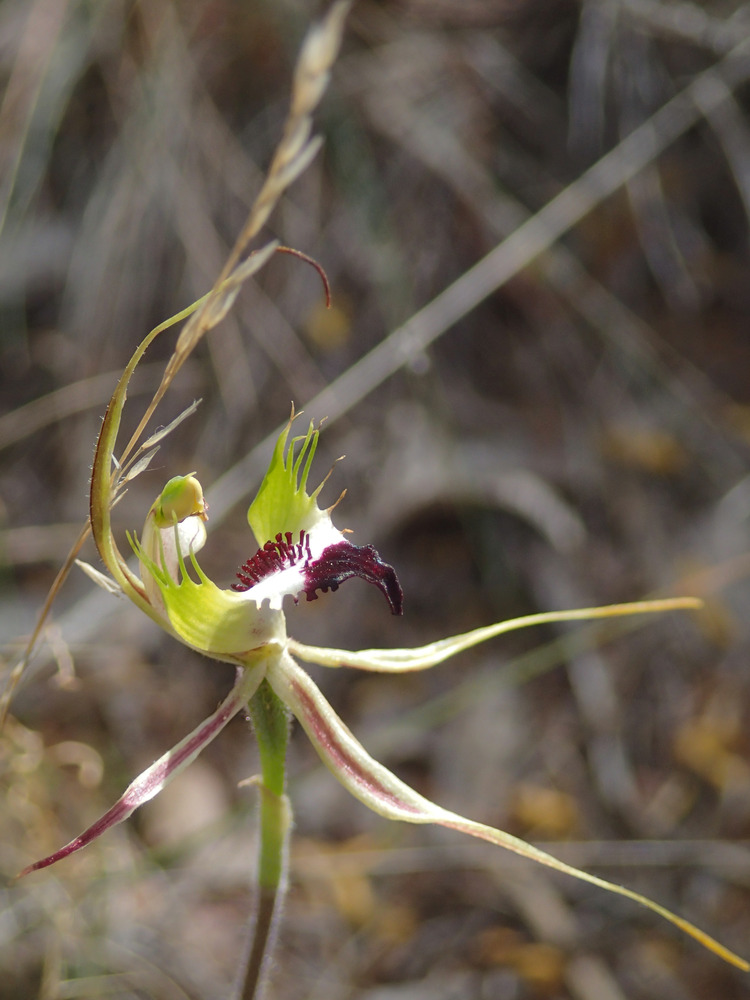
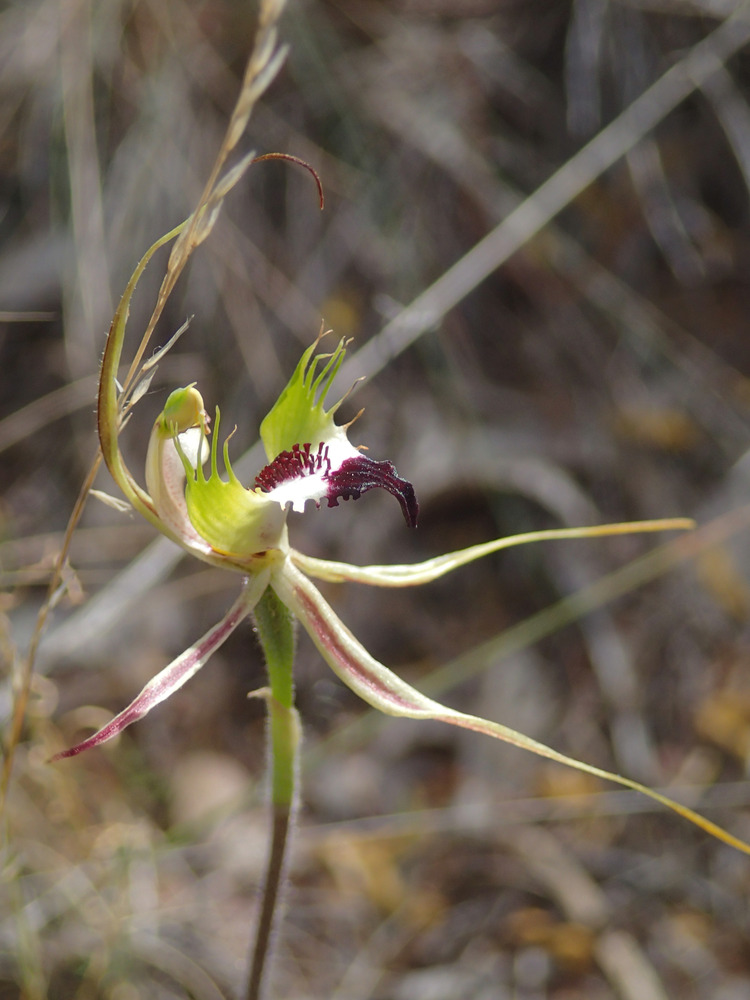
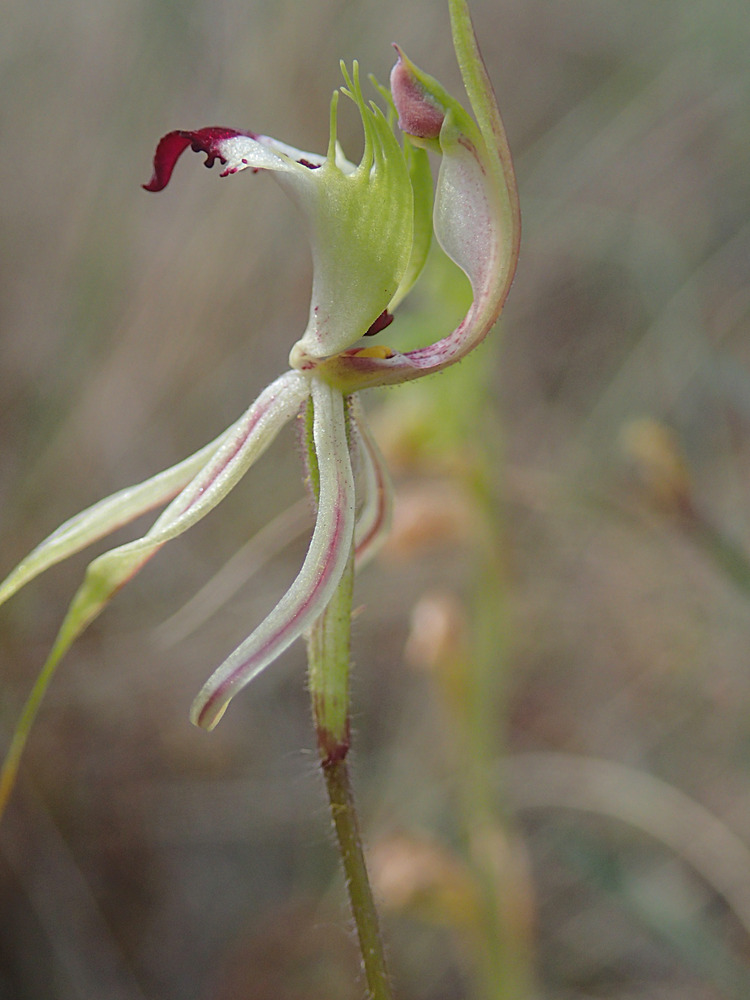
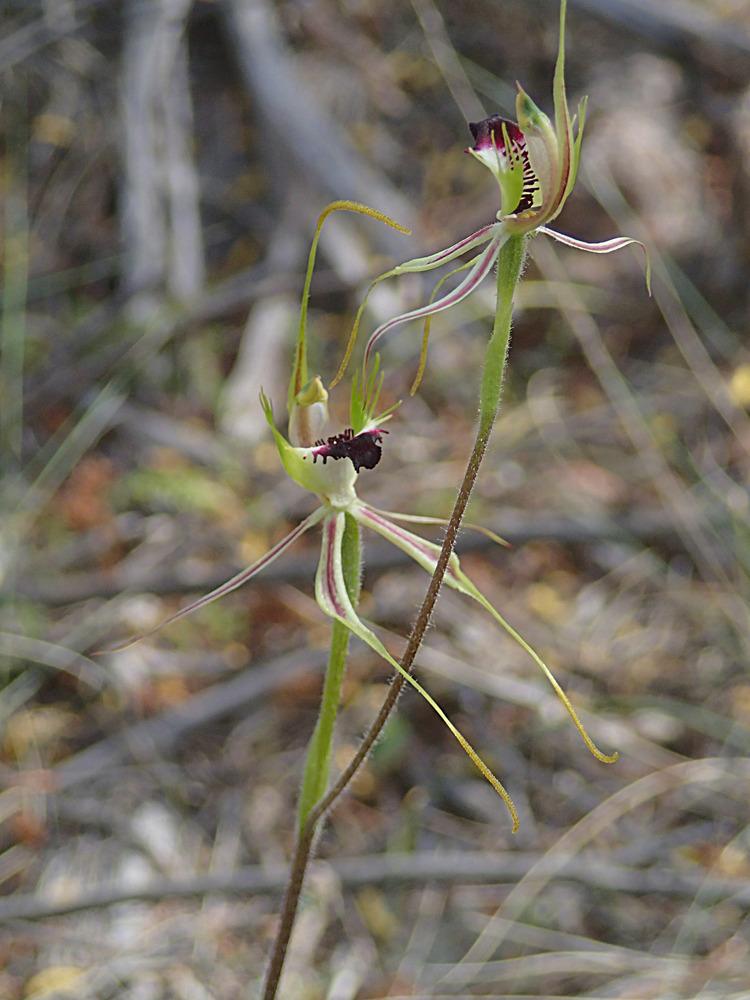
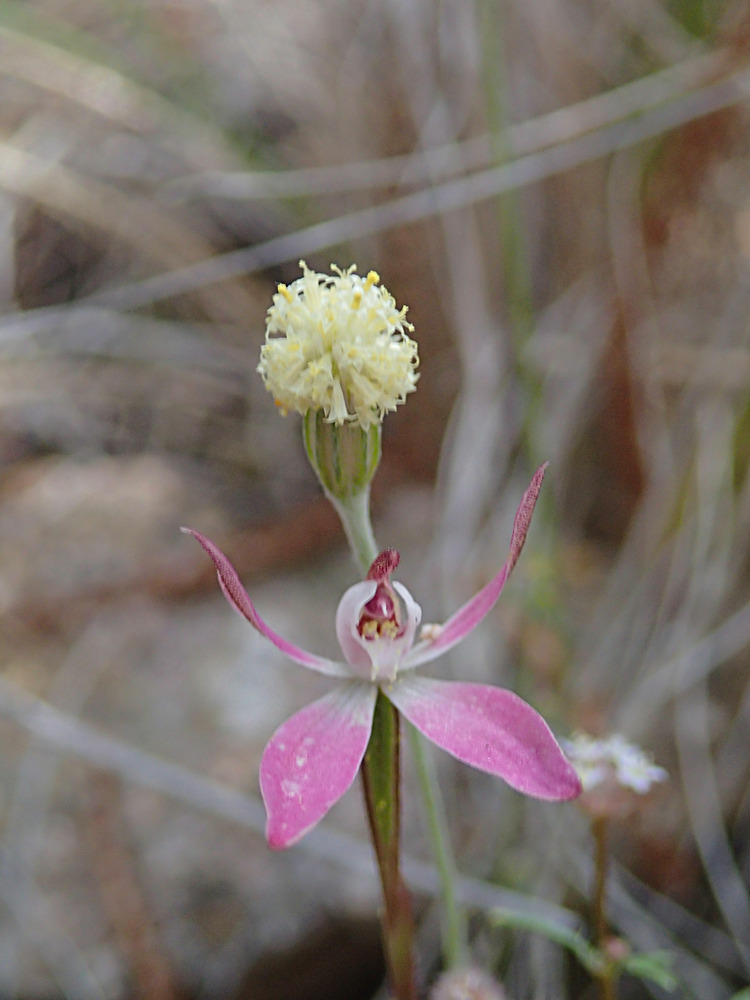
Indeed a rare double flowered one.
A bit windy to get these lilies sharp.
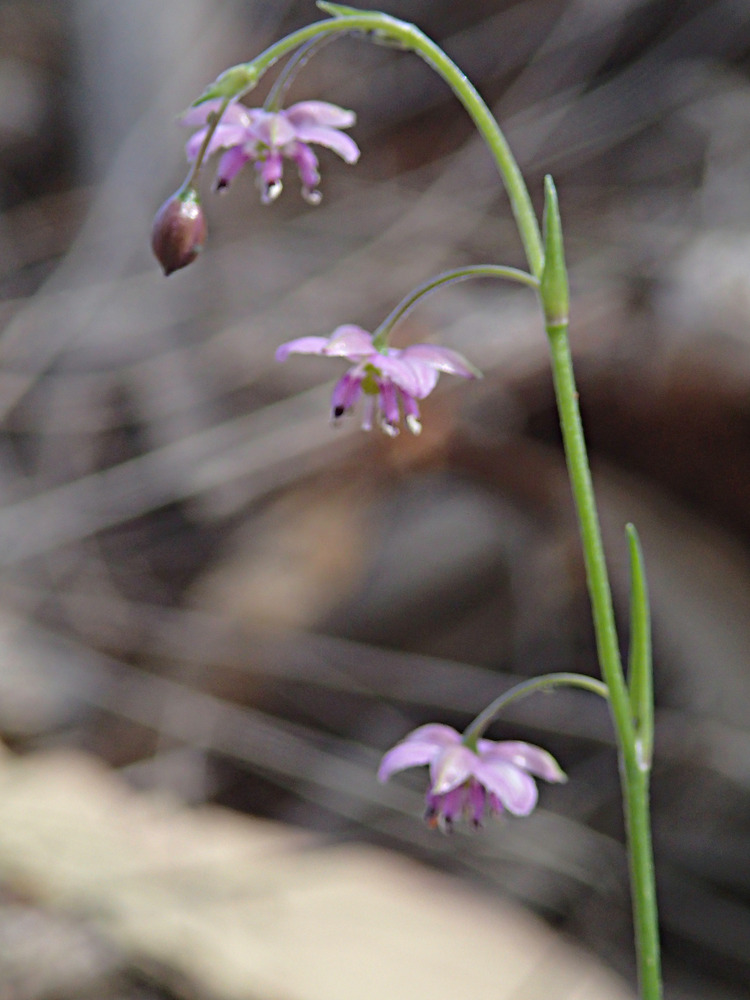

Well ladida look at the people in the Latin thread.
Scarlet mintbush. A local I grew from a cutting and have planted back where it should be..
With protection from lands department slashing?
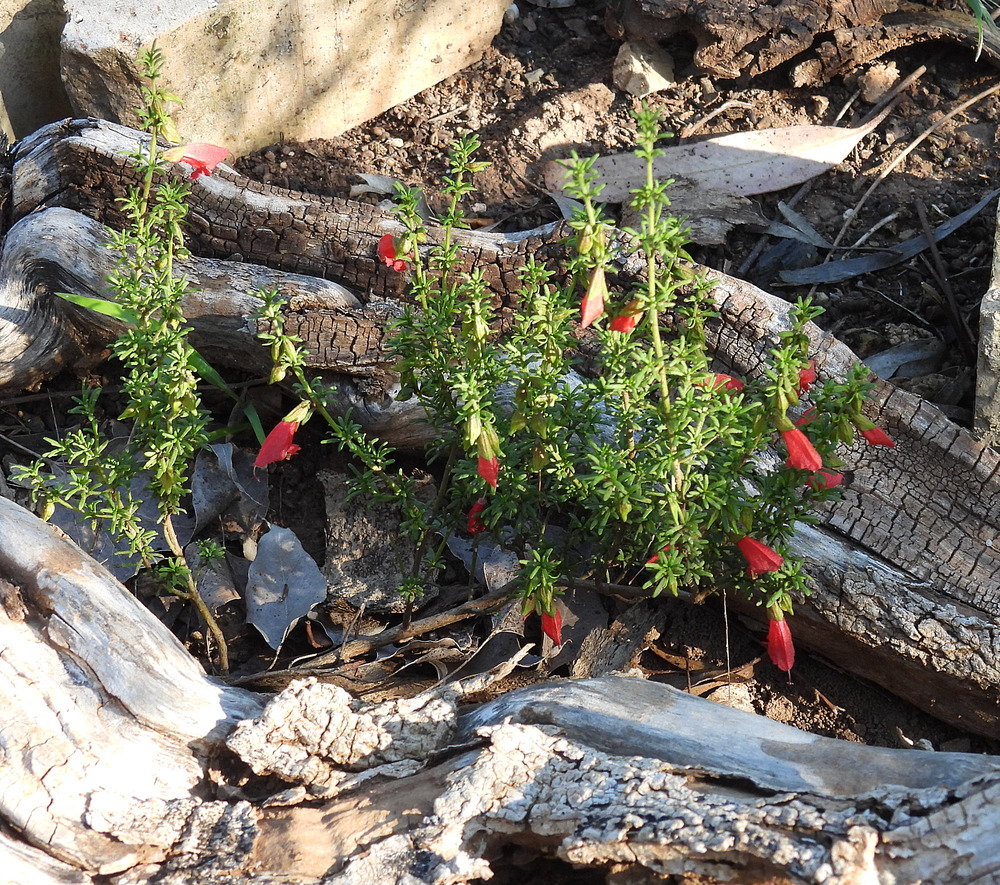
A couple of my local flora, in my garden.
Scarlet mintbush, Prostanthera aspalathoides.
Halgania cyanea. Halgania is a genus of small shrubs in the family Boraginaceae. The genus comprises about 20 species that are endemic to Australia.
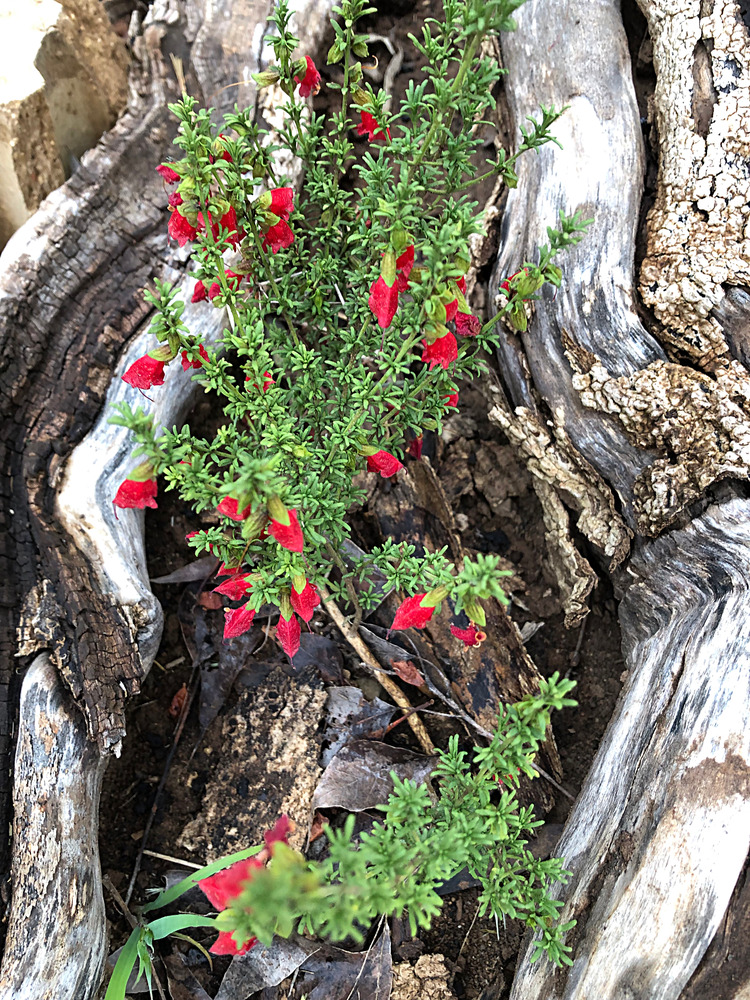
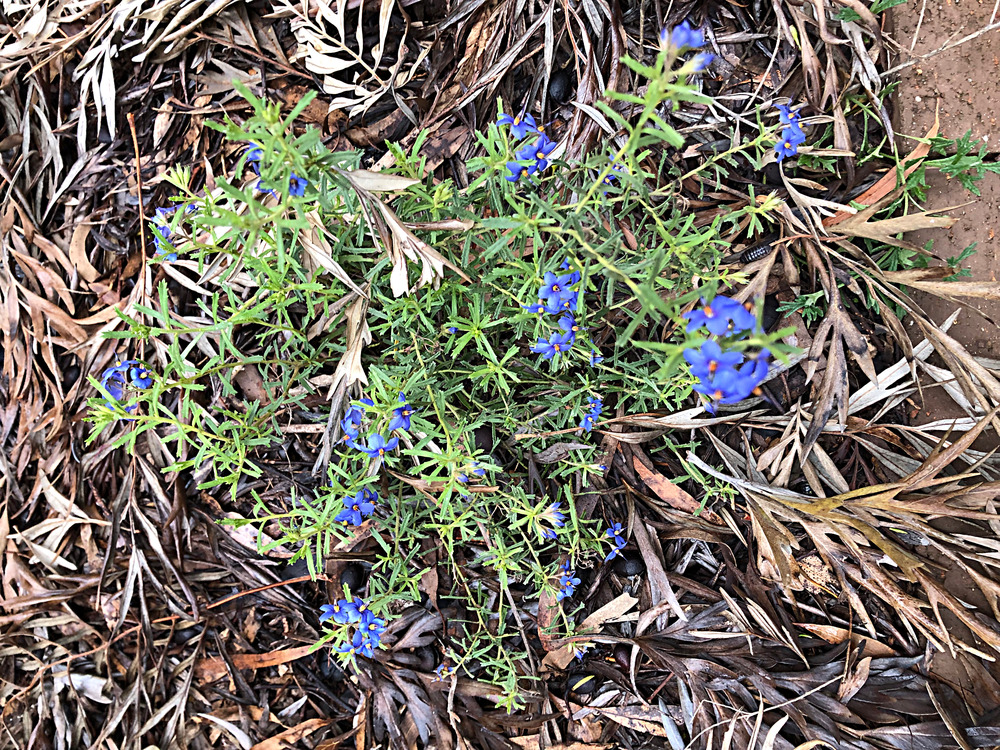
Nice, also here is the closer up of those vegetables we were trying to find, if anyone knows.
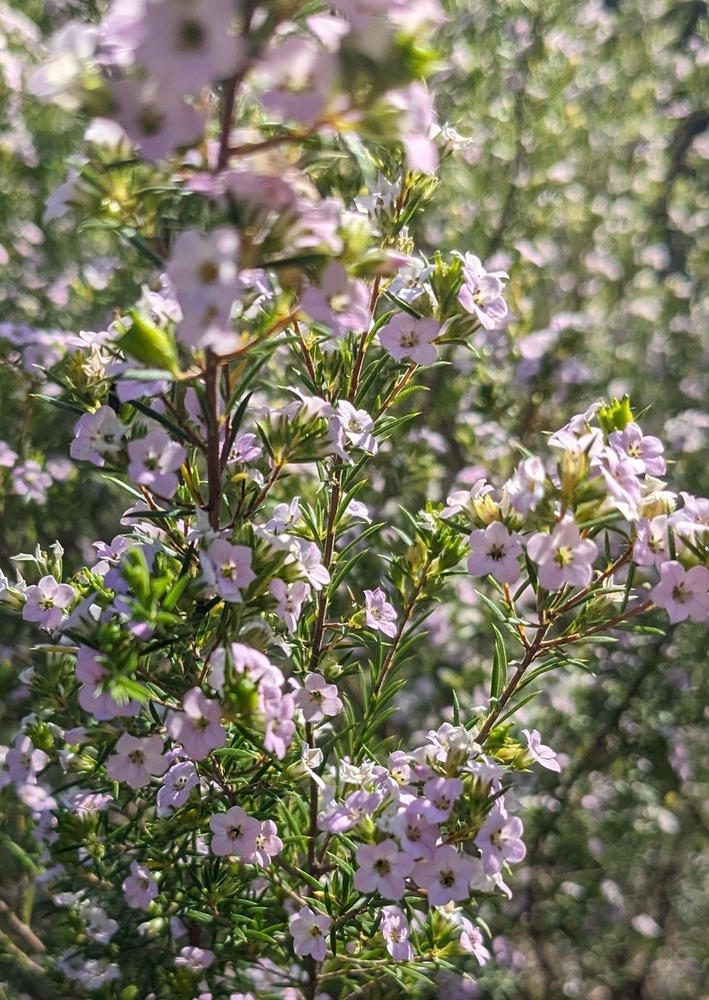
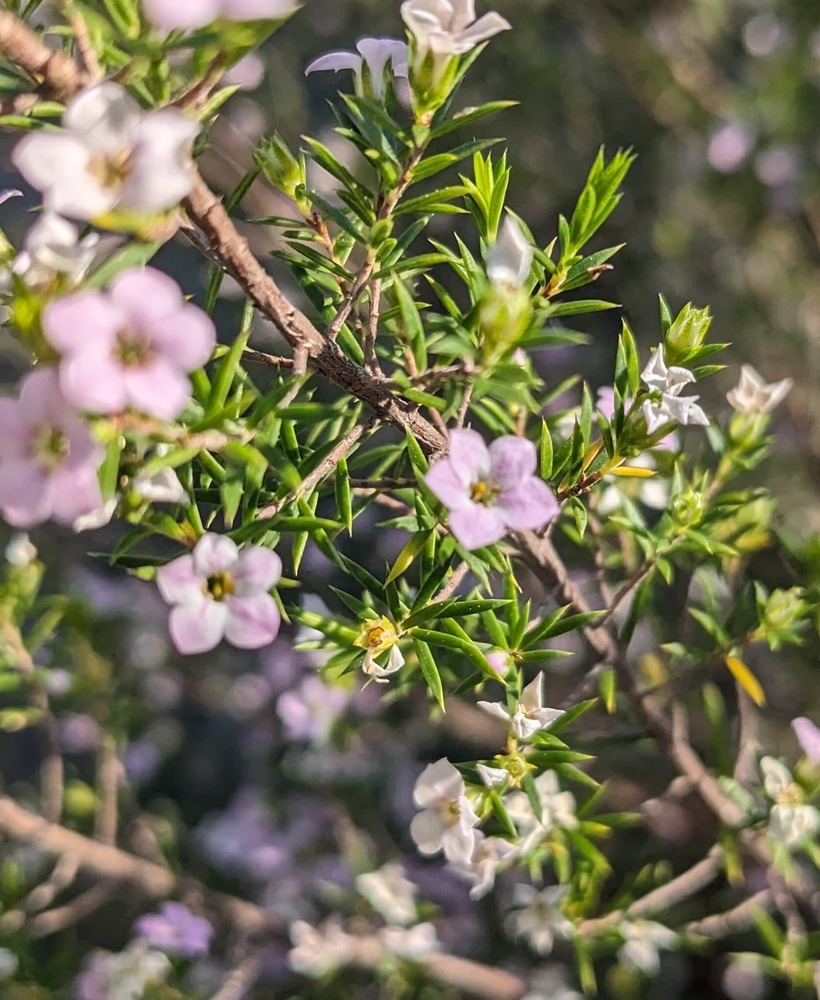
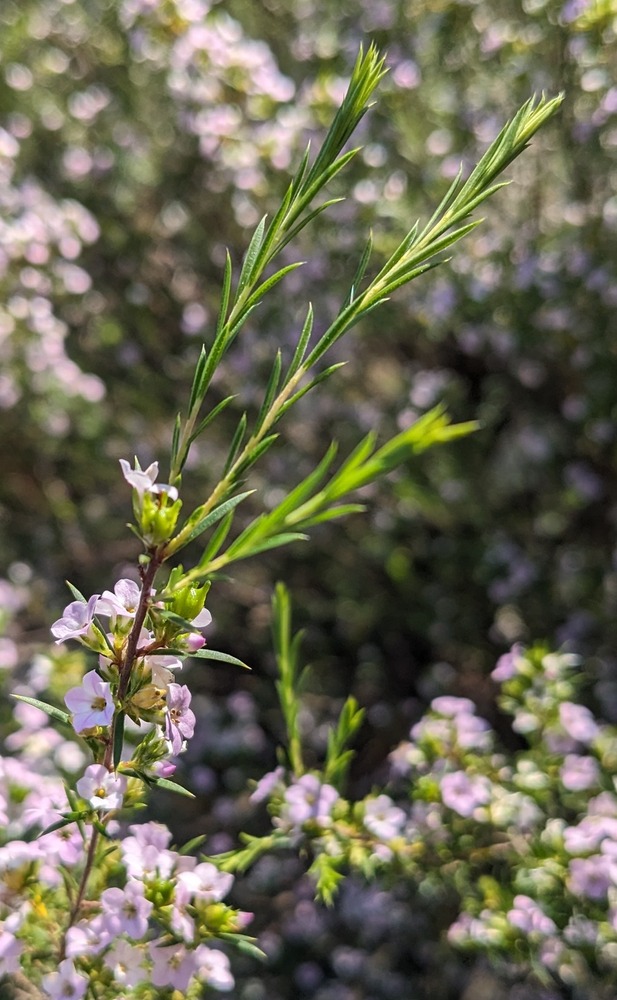
SCIENCE said:
Nice, also here is the closer up of those vegetables we were trying to find, if anyone knows.
Coleonema pulchellum, known as diosma by old people like myself.
The first plant I was put to work on as a plant propagator. I liked doing them, nice smelling foliage when you cut them up.
ruby said:
SCIENCE said:
Nice, also here is the closer up of those vegetables we were trying to find, if anyone knows.
Coleonema pulchellum, known as diosma by old people like myself.
The first plant I was put to work on as a plant propagator. I liked doing them, nice smelling foliage when you cut them up.
thanks we used to have them and was looking to bring back some of the memories
internet says potentially invasive so we’ll be careful
SCIENCE said:
ruby said:
SCIENCE said:
Nice, also here is the closer up of those vegetables we were trying to find, if anyone knows.
Coleonema pulchellum, known as diosma by old people like myself.
The first plant I was put to work on as a plant propagator. I liked doing them, nice smelling foliage when you cut them up.
thanks we used to have them and was looking to bring back some of the memories
internet says potentially invasive so we’ll be careful
Thumbs up SCIENCE.
A good bullet proof plant which can look great when well cared for. I saw one that had been beautifully pruned into a ball with a smiley face pruned into it, I wish I’d taken a picture of it. I had no idea diosma had weed potential, good to know.
It’s in the Rutaceae family, which includes citrus. Oil glands in the leaves. If you wanted to do a native version, you could plant an Eriostemon or Crowea. If you are a masochist you could plant Boronia.
This is a local and presumably rare as I don’t generally see it elsewhere. it is on crown land next to my yard.
It makes a great groundcover and of course I’ve taken cuttings and do have it slowly taking over my brick paving. Seems to want to wander about.
Grey Germander, Teucrium racemosum
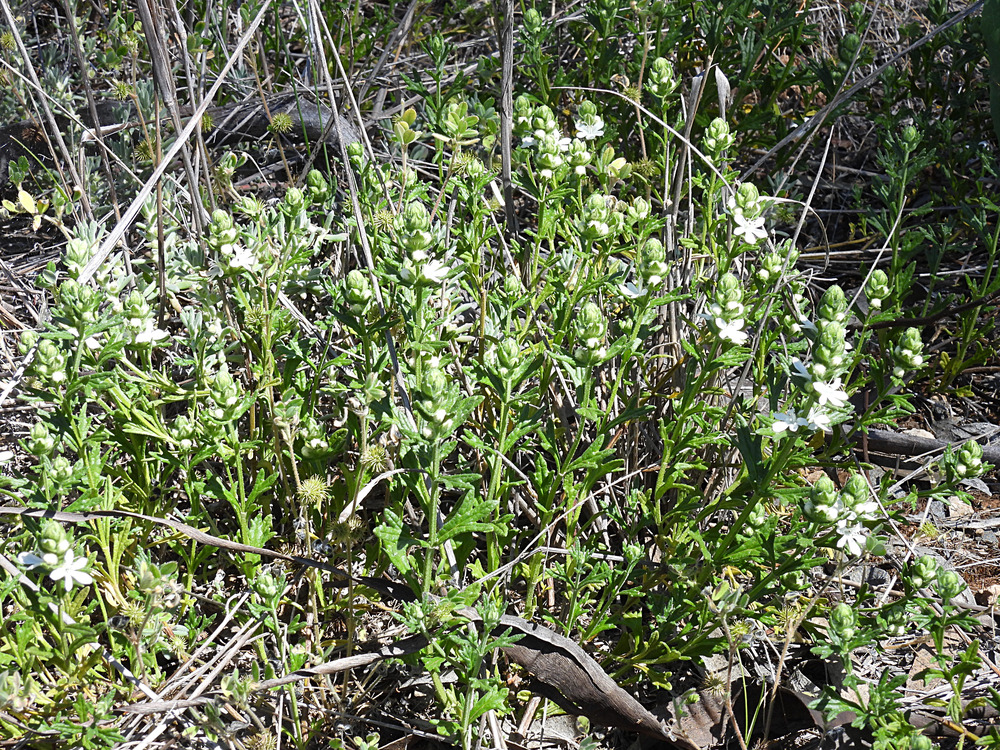
roughbarked said:
This is a local and presumably rare as I don’t generally see it elsewhere. it is on crown land next to my yard.
It makes a great groundcover and of course I’ve taken cuttings and do have it slowly taking over my brick paving. Seems to want to wander about.
Grey Germander, Teucrium racemosum
It has survived clearing and grading.
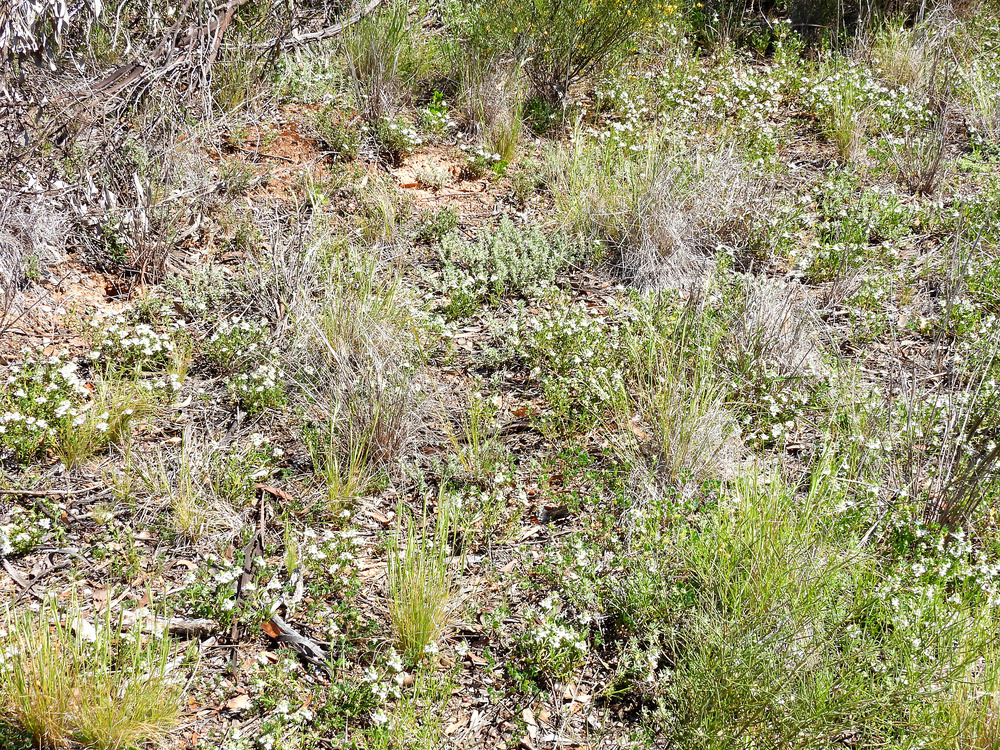
Only orchids today were a smattering of Pterostylis nana. Too dry.

roughbarked said:
Only orchids today were a smattering of Pterostylis nana. Too dry.
Oopsy daisy.. 
There were also a small few of these Rannuculus, I presume R. pachycarpus. 




 It was very windy and the light was intermittent between clouds. Very arid with fewer flowering orchids and all were smaller in stature. No Drosera at all. :( There were a lot of star lilies and pink fingers though.
It was very windy and the light was intermittent between clouds. Very arid with fewer flowering orchids and all were smaller in stature. No Drosera at all. :( There were a lot of star lilies and pink fingers though.
roughbarked said:
It was very windy and the light was intermittent between clouds. Very arid with fewer flowering orchids and all were smaller in stature. No Drosera at all. :( There were a lot of star lilies and pink fingers though.
And leopards (are yours called leopards up there?). Most of those in your pictures are just starting to sparsely show up on iNaturalist in the Northern Grampians, but it’s still a month off the best time there and 6 weeks for our covenant.
buffy said:
roughbarked said:
It was very windy and the light was intermittent between clouds. Very arid with fewer flowering orchids and all were smaller in stature. No Drosera at all. :( There were a lot of star lilies and pink fingers though.
And leopards (are yours called leopards up there?). Most of those in your pictures are just starting to sparsely show up on iNaturalist in the Northern Grampians, but it’s still a month off the best time there and 6 weeks for our covenant.
Yes. They are leopards. Many still call them donkeys though.
roughbarked said:
buffy said:
roughbarked said:
It was very windy and the light was intermittent between clouds. Very arid with fewer flowering orchids and all were smaller in stature. No Drosera at all. :( There were a lot of star lilies and pink fingers though.
And leopards (are yours called leopards up there?). Most of those in your pictures are just starting to sparsely show up on iNaturalist in the Northern Grampians, but it’s still a month off the best time there and 6 weeks for our covenant.
Yes. They are leopards. Many still call them donkeys though.
and yes. These are the first leopards to open.
roughbarked said:
buffy said:
roughbarked said:
It was very windy and the light was intermittent between clouds. Very arid with fewer flowering orchids and all were smaller in stature. No Drosera at all. :( There were a lot of star lilies and pink fingers though.
And leopards (are yours called leopards up there?). Most of those in your pictures are just starting to sparsely show up on iNaturalist in the Northern Grampians, but it’s still a month off the best time there and 6 weeks for our covenant.
Yes. They are leopards. Many still call them donkeys though.
Leopards and donkeys are different species of Diuris in Victoria. D.palustris (Swamp Donkey Orchid), D.maculata (Spotted Donkey Orchid), D. curvifolia (Leopard Orchid, previously known as D. pardina), D. Leopardina (Yellow Leopard orchid), D. semilunata (Luna Leopard Orchid), D. sulphurea (Hornet Orchid), D. orientis (Eastern Donkey Orchid). Those are the yellow ones. Then there are purple ones called Donkey Orchids too. We only have leopardina, sulphurea and orientis in our part of the state. Once I get my eye in, I can separate the three. D. orientis is easy, the other two can be tricky.
buffy said:
roughbarked said:
buffy said:And leopards (are yours called leopards up there?). Most of those in your pictures are just starting to sparsely show up on iNaturalist in the Northern Grampians, but it’s still a month off the best time there and 6 weeks for our covenant.
Yes. They are leopards. Many still call them donkeys though.
Leopards and donkeys are different species of Diuris in Victoria. D.palustris (Swamp Donkey Orchid), D.maculata (Spotted Donkey Orchid), D. curvifolia (Leopard Orchid, previously known as D. pardina), D. Leopardina (Yellow Leopard orchid), D. semilunata (Luna Leopard Orchid), D. sulphurea (Hornet Orchid), D. orientis (Eastern Donkey Orchid). Those are the yellow ones. Then there are purple ones called Donkey Orchids too. We only have leopardina, sulphurea and orientis in our part of the state. Once I get my eye in, I can separate the three. D. orientis is easy, the other two can be tricky.
No quite so diversified here.
This is Pterostylis curta.

roughbarked said:
This is Pterostylis curta.
Sticks its tongue out to the left when you are facing it.
buffy said:
roughbarked said:
This is Pterostylis curta.
Sticks its tongue out to the left when you are facing it.
Yes it does.
Wasn’t equipped to take better photo but the leopards are starting to beome more apparent in the local landscape. More coming into flower and standing above the dead grass.

I didn’t go out yesterday as my neck is not up to it but my farmer mate did and he took these photos.





A wattle as yet unknown to me. Quite common in above mentioned Henry Somerset conservation site.










Yes. So I found ten Pterostylis plants. Mixed with some spider orchids.





roughbarked said:
We don’t have showy ones like those.
buffy said:
roughbarked said:
We don’t have showy ones like those.
It was posted as Pterostylis lingue by another person. I searched P. lingue on the net and came up with P. lingua. Actually discovered and named in my area WIKI said:
Pterostylis lingua was first formally described in 1989 by Mark Clements from a specimen collected in the Cocoparra National Park and the description was published in Australian Orchid Research.
roughbarked said:
buffy said:
roughbarked said:
We don’t have showy ones like those.
It was posted as Pterostylis lingue by another person. I searched P. lingue on the net and came up with P. lingua. Actually discovered and named in my area WIKI said:
Pterostylis lingua was first formally described in 1989 by Mark Clements from a specimen collected in the Cocoparra National Park and the description was published in Australian Orchid Research.
My new books Orchids of Southern Australia and Orchids of the ACT both have no mention of an P. lingue or P. lingua.
I’ve always referred to these as P. rufa in the past.
P. rufa is a different one according to various online sources. Here are the ALA details (including the formal naming that you found)
buffy said:
roughbarked said:
buffy said:It was posted as Pterostylis lingue by another person. I searched P. lingue on the net and came up with P. lingua. Actually discovered and named in my area WIKI said:
Pterostylis lingua was first formally described in 1989 by Mark Clements from a specimen collected in the Cocoparra National Park and the description was published in Australian Orchid Research.
My new books Orchids of Southern Australia and Orchids of the ACT both have no mention of an P. lingue or P. lingua.
I’ve always referred to these as P. rufa in the past.
P. rufa is a different one according to various online sources. Here are the ALA details (including the formal naming that you found)
Are your books Gary Baackhouse’s books? P. lingua is in his book of “Guide to Native Orchids of Victoria”. But apparently there is dispute as to whether the Victorian plants are really lingua because they are subtly different from the type NSW plants.
buffy said:
roughbarked said:
buffy said:It was posted as Pterostylis lingue by another person. I searched P. lingue on the net and came up with P. lingua. Actually discovered and named in my area WIKI said:
Pterostylis lingua was first formally described in 1989 by Mark Clements from a specimen collected in the Cocoparra National Park and the description was published in Australian Orchid Research.
My new books Orchids of Southern Australia and Orchids of the ACT both have no mention of an P. lingue or P. lingua.
I’ve always referred to these as P. rufa in the past.
P. rufa is a different one according to various online sources. Here are the ALA details (including the formal naming that you found)
Ta.
buffy said:
buffy said:
roughbarked said:My new books Orchids of Southern Australia and Orchids of the ACT both have no mention of an P. lingue or P. lingua.
I’ve always referred to these as P. rufa in the past.
P. rufa is a different one according to various online sources. Here are the ALA details (including the formal naming that you found)
Are your books Gary Backhouse’s books? P. lingua is in his book of “Guide to Native Orchids of Victoria”. But apparently there is dispute as to whether the Victorian plants are really lingua because they are subtly different from the type NSW plants.

roughbarked said:
buffy said:
buffy said:P. rufa is a different one according to various online sources. Here are the ALA details (including the formal naming that you found)
Are your books Gary Backhouse’s books? P. lingua is in his book of “Guide to Native Orchids of Victoria”. But apparently there is dispute as to whether the Victorian plants are really lingua because they are subtly different from the type NSW plants.
My copy of the Jones book is 2000, but I think the latest is 2011? so some names will be out of date now. I don’t know the other two, they aren’t for my area. I think the latest one for your area is “Guide to Native Orchids of NSW and ACT”, by Copeland and Backhouse.
buffy said:
roughbarked said:
buffy said:Are your books Gary Backhouse’s books? P. lingua is in his book of “Guide to Native Orchids of Victoria”. But apparently there is dispute as to whether the Victorian plants are really lingua because they are subtly different from the type NSW plants.
My copy of the Jones book is 2000, but I think the latest is 2011? so some names will be out of date now. I don’t know the other two, they aren’t for my area. I think the latest one for your area is “Guide to Native Orchids of NSW and ACT”, by Copeland and Backhouse.

roughbarked said:
buffy said:
roughbarked said:
My copy of the Jones book is 2000, but I think the latest is 2011? so some names will be out of date now. I don’t know the other two, they aren’t for my area. I think the latest one for your area is “Guide to Native Orchids of NSW and ACT”, by Copeland and Backhouse.
These are newer and I haven’t looked in them for P. lingua yet.
roughbarked said:
roughbarked said:
buffy said:My copy of the Jones book is 2000, but I think the latest is 2011? so some names will be out of date now. I don’t know the other two, they aren’t for my area. I think the latest one for your area is “Guide to Native Orchids of NSW and ACT”, by Copeland and Backhouse.
These are newer and I haven’t looked in them for P. lingua yet.
For a long time I respected the authors of Plants of Western NSW but the taxon has been revised a number of times since 1980 and that book never listed P. lingua. Published before the species was formally described.
roughbarked said:
roughbarked said:
roughbarked said:
These are newer and I haven’t looked in them for P. lingua yet.
For a long time I respected the authors of Plants of Western NSW but the taxon has been revised a number of times since 1980 and that book never listed P. lingua. Published before the species was formally described.
That would be why it’s not in there…
It will be in the Copeland and Backhouse book, it will be the same entry used in Backhouse’s Victorian book.
buffy said:
roughbarked said:
roughbarked said:These are newer and I haven’t looked in them for P. lingua yet.
For a long time I respected the authors of Plants of Western NSW but the taxon has been revised a number of times since 1980 and that book never listed P. lingua. Published before the species was formally described.
That would be why it’s not in there…
It will be in the Copeland and Backhouse book, it will be the same entry used in Backhouse’s Victorian book.
I’ll have a look. :)
roughbarked said:
buffy said:
roughbarked said:For a long time I respected the authors of Plants of Western NSW but the taxon has been revised a number of times since 1980 and that book never listed P. lingua. Published before the species was formally described.
That would be why it’s not in there…
It will be in the Copeland and Backhouse book, it will be the same entry used in Backhouse’s Victorian book.
I’ll have a look. :)
Yep P. lingua is in both those latter books and confirmed.

Most bearded orchids at this site were finished

I found half a dozen Thelmytra about to bloom in a spot where instead of fixing the old fence, the’d built a new fence inside so that there was a bit of no man’s land. A spot difficult for the kangaroos to nibble at.





Spiders still performing though many have finished. I’ve always called them C. dilatata because that’s what the book used to call them but I believe they are now known as C. stricta.
Pterostylis lingua, commonly known as the large-lipped rustyhood





Lots of Arthropodium minus. 
and Twining Fringe Lily.


and Clustered Copper Wire Daisy Podolepis arachnoidea 
Spent some time on Black Mountain Saturday specifically looking for orchids. Found quite a few though it was very dry and maybe only 20% were in bloom compared to other years.
Was hoping for the copper bearded orchid but could only find lots of purple bearded.

roughbarked said:
Spent some time on Black Mountain Saturday specifically looking for orchids. Found quite a few though it was very dry and maybe only 20% were in bloom compared to other years.
Was hoping for the copper bearded orchid but could only find lots of purple bearded.
Lotsa sorting to do. More than 200 photos of various plants, orchids and many others. At least three Diuris and two or three white Caldenia sp. Only really discernible with the aroma and a pair of verniers. The blue Thelmytra were budding up and the pink Thelmytra were going to be open the next day. :(




We walked a long way looking for pink Thelmytra flowers and found some not far from the car on an alternate route back. Unfortunately not open at that fiime of day. 
Lots of Lomandra on this mountain. 
Yeah, it is in the Myrtles. Possibly Kunzea or Melaleuca. 

On Black mountain were a number of species limited in numbers by dry conditions but beautiful all the same.
These Glossodia major were one.



There were a few different species with white fingers that looked very similar. Apparently they all have a different aroma.



Diuris sp.
roughbarked said:

Diuris sp.
D. sulphurea (tiger orchid).
https://plantnet.rbgsyd.nsw.gov.au/cgi-bin/NSWfl.pl?page=nswfl&lvl=sp&name=Diuris~sulphurea
buffy said:
roughbarked said:

Diuris sp.
D. sulphurea (tiger orchid).
https://plantnet.rbgsyd.nsw.gov.au/cgi-bin/NSWfl.pl?page=nswfl&lvl=sp&name=Diuris~sulphurea
Ta.
roughbarked said:
buffy said:
roughbarked said:

Diuris sp.
D. sulphurea (tiger orchid).
https://plantnet.rbgsyd.nsw.gov.au/cgi-bin/NSWfl.pl?page=nswfl&lvl=sp&name=Diuris~sulphurea
Ta.
They have started showing up in Victoria on iNaturalist this week. They flower later than the other yellow Diuris.
I believe it is a Kunzea but I’m not finding which one as of yet.


roughbarked said:
I believe it is a Kunzea but I’m not finding which one as of yet.
Insufficient information. Need good photos of leaves and how they attach to stems as well as the flowers and an overall photo to see the form of the bush.
buffy said:
roughbarked said:
I believe it is a Kunzea but I’m not finding which one as of yet.
Insufficient information. Need good photos of leaves and how they attach to stems as well as the flowers and an overall photo to see the form of the bush.
Yair. No I didn’t get all of that. It was the end of the day and people wanted to get to toilets.
I’ve gone through all Kunzea found in the area and it appears by leaf and flower to be Kunzea parvifolia
 Anyway, have a pea.
Anyway, have a pea.